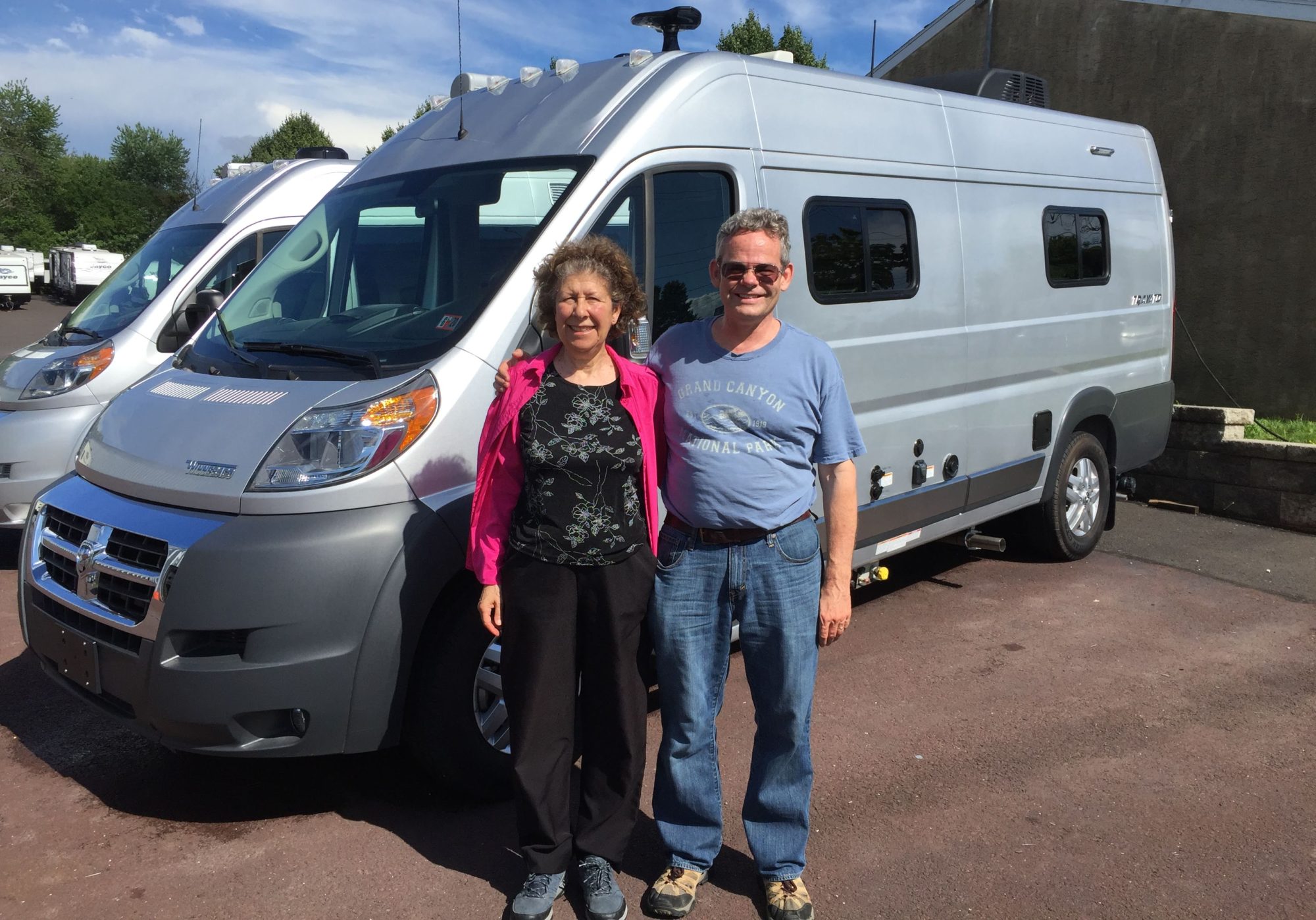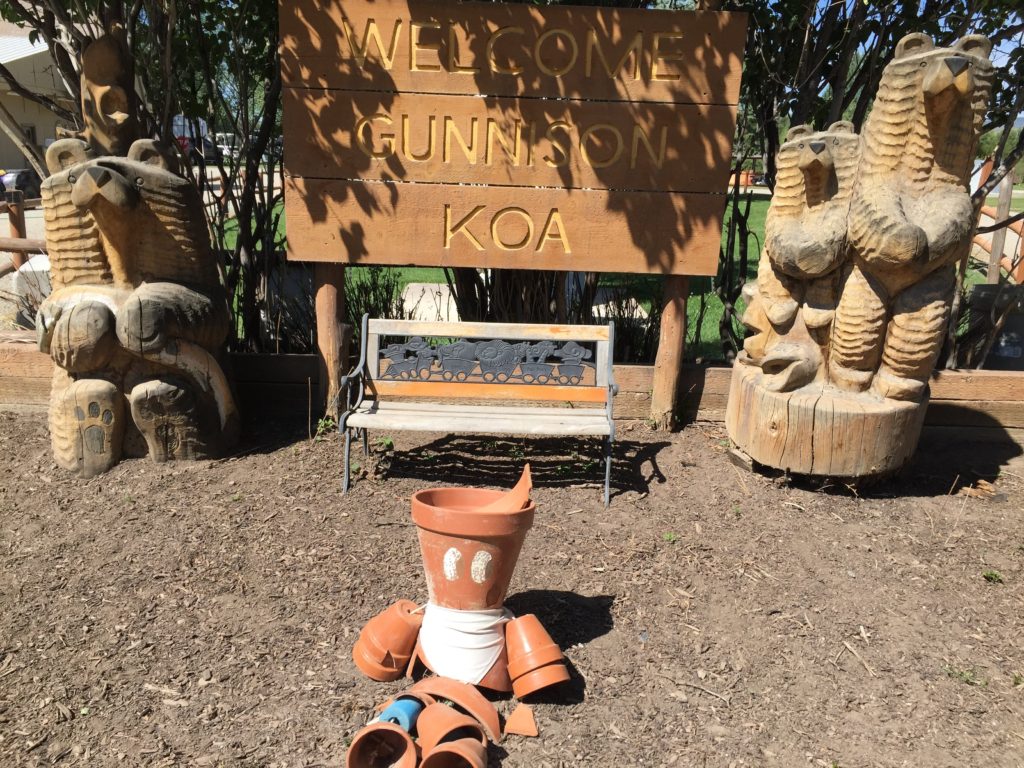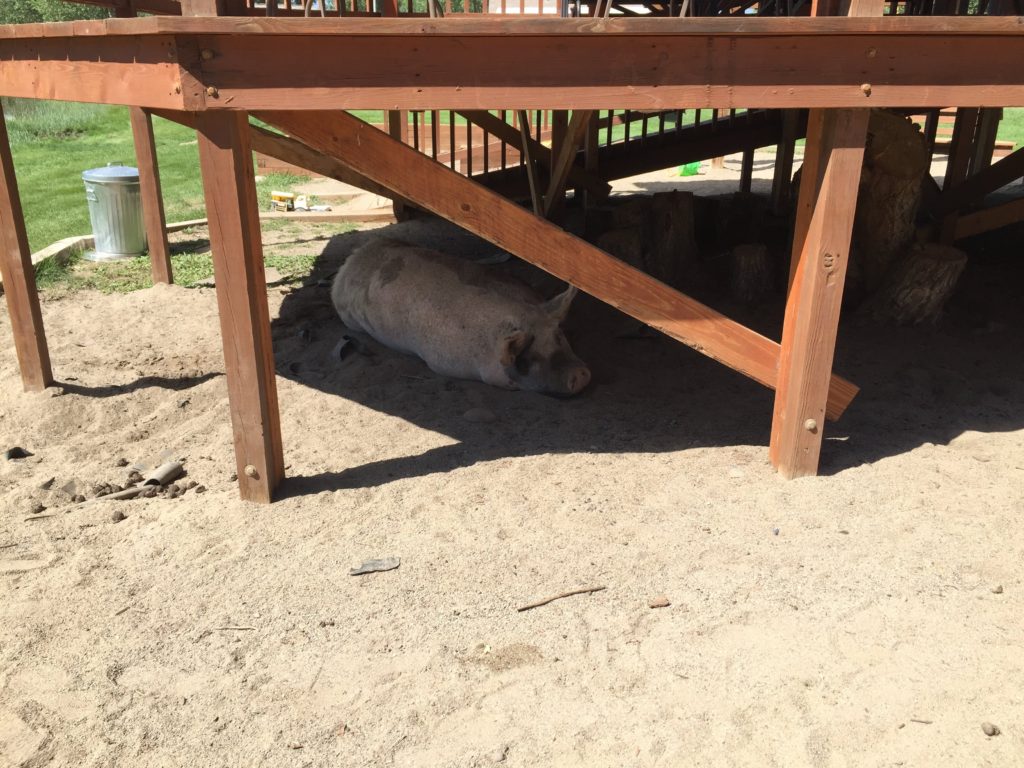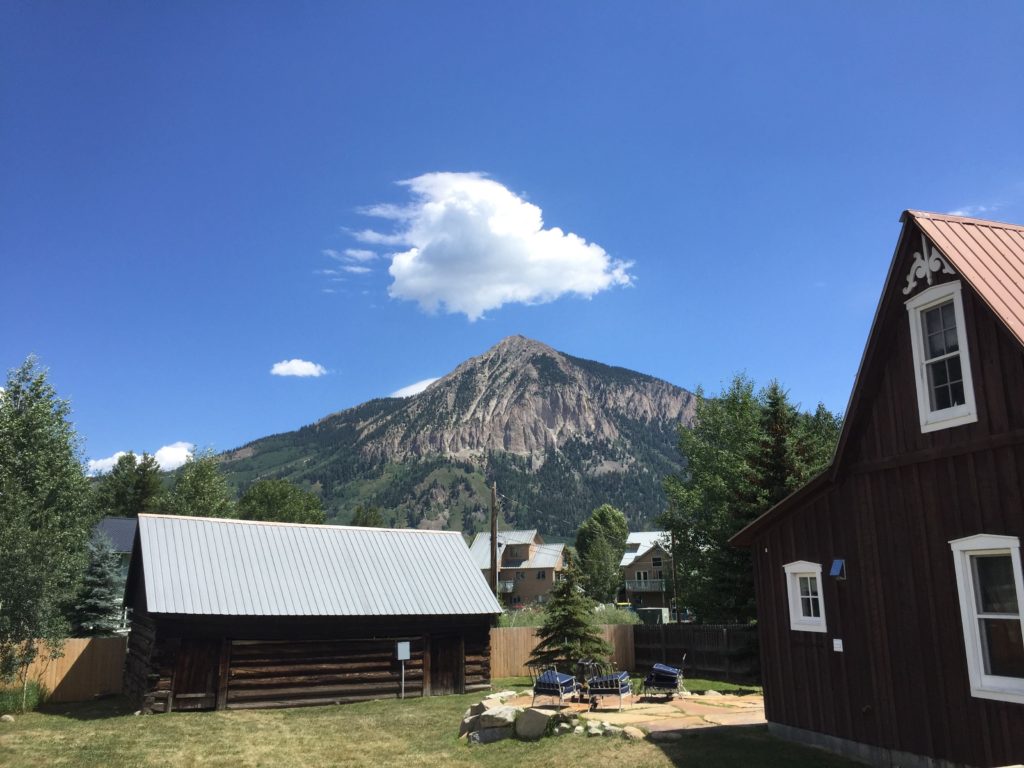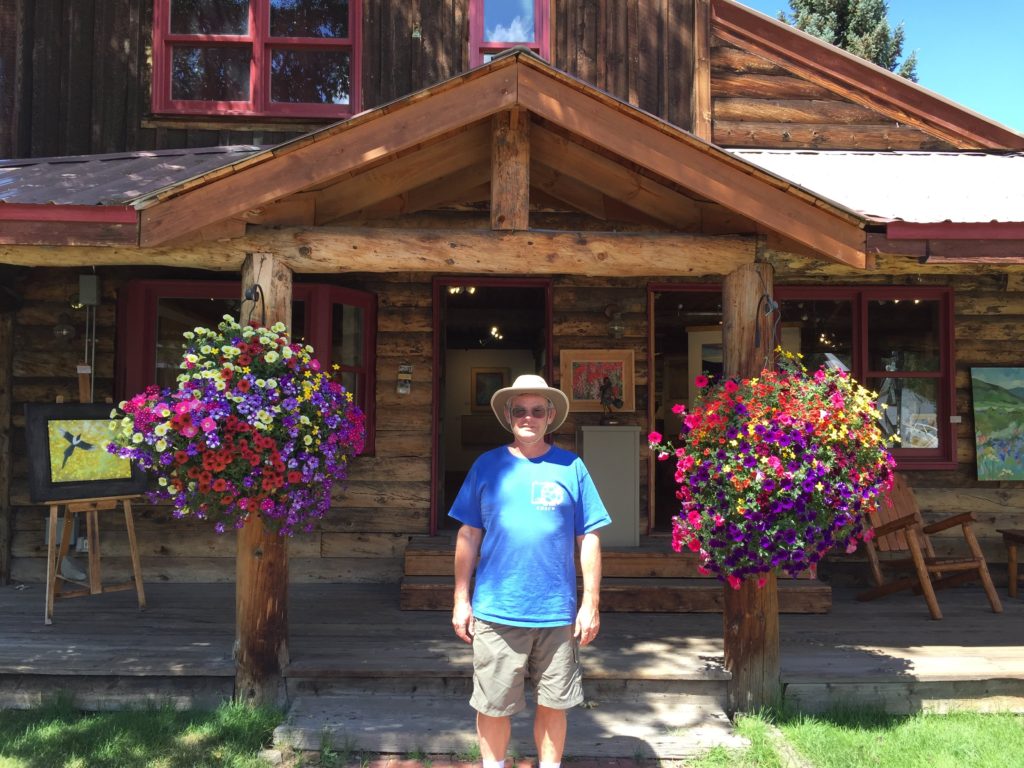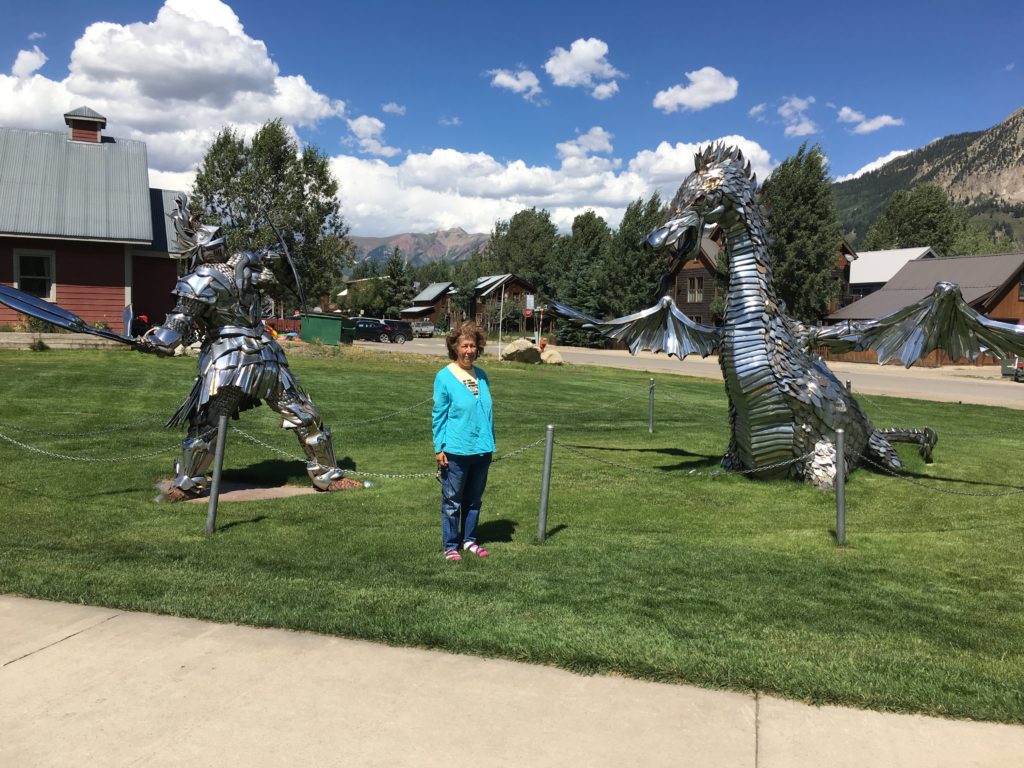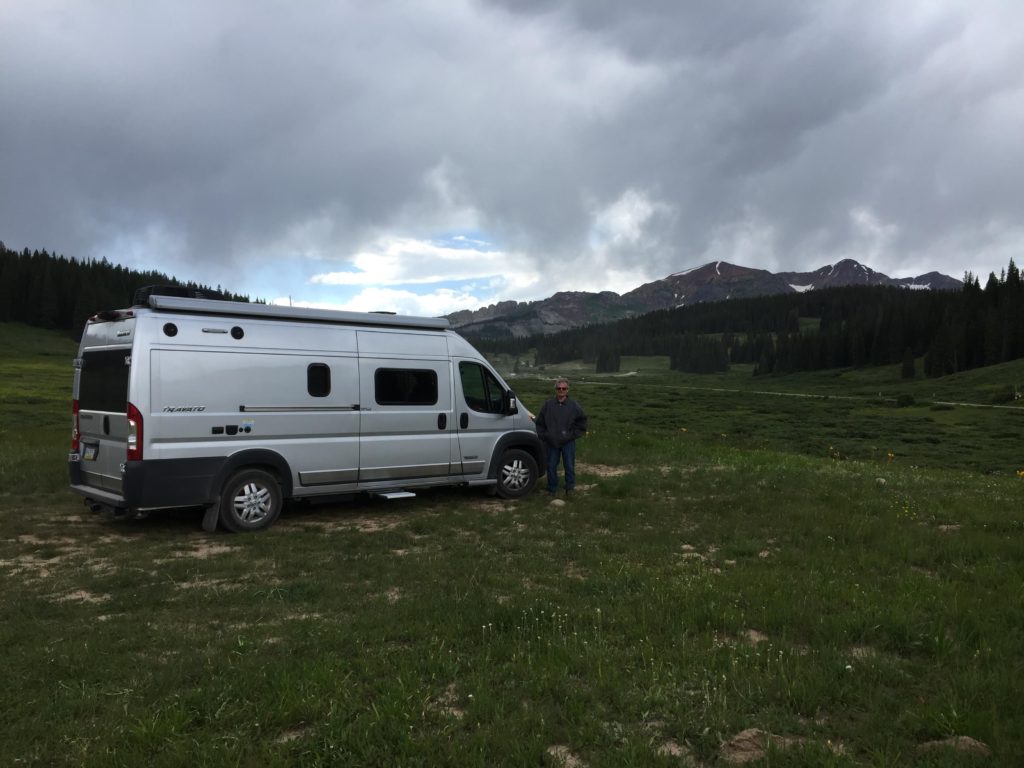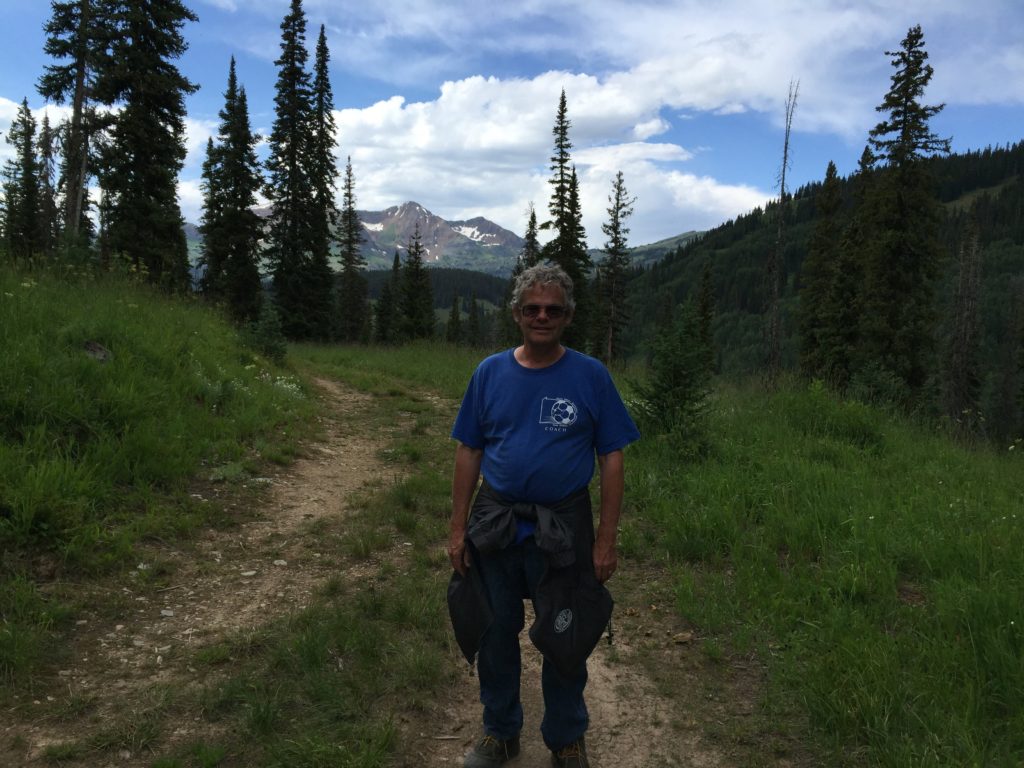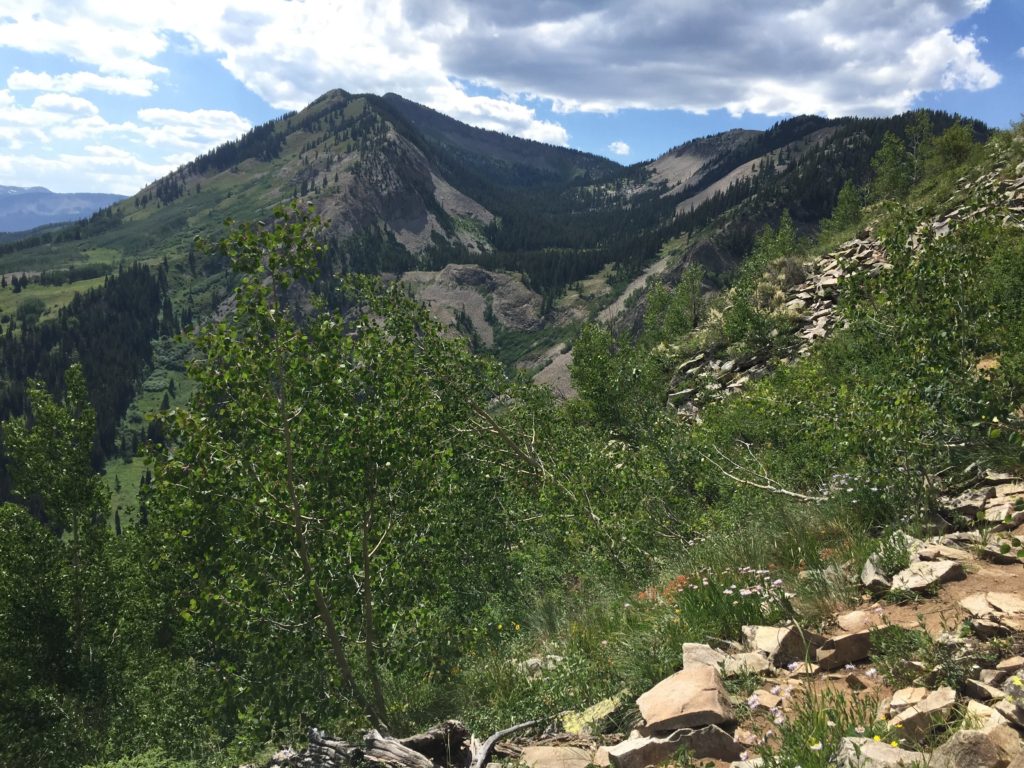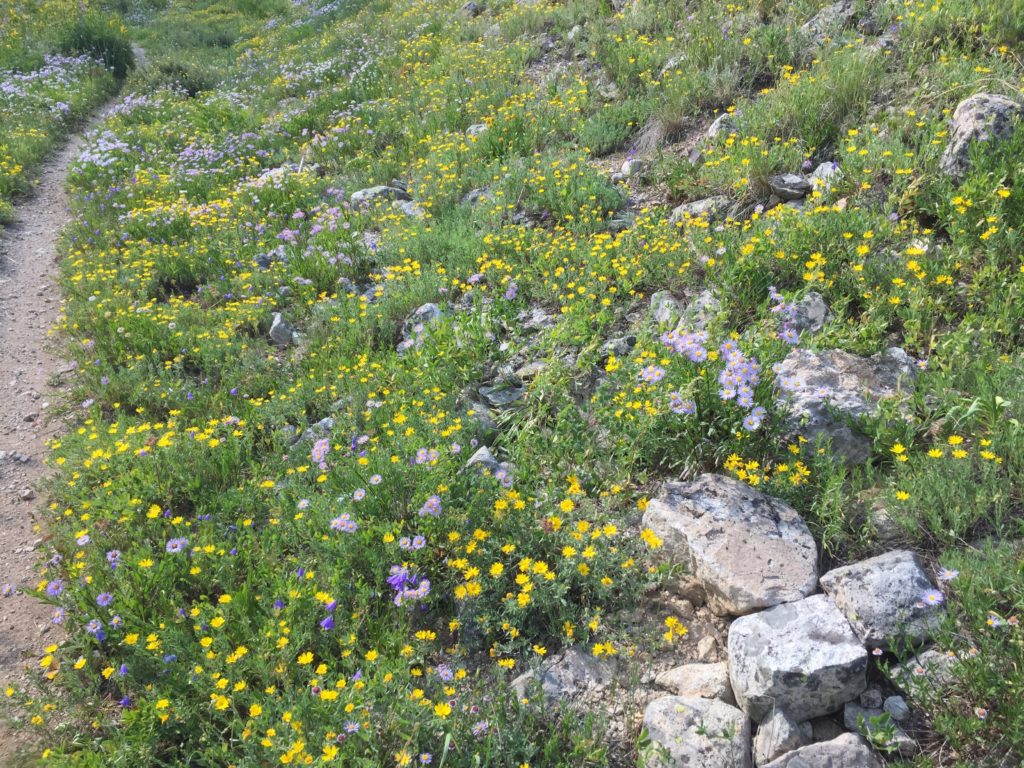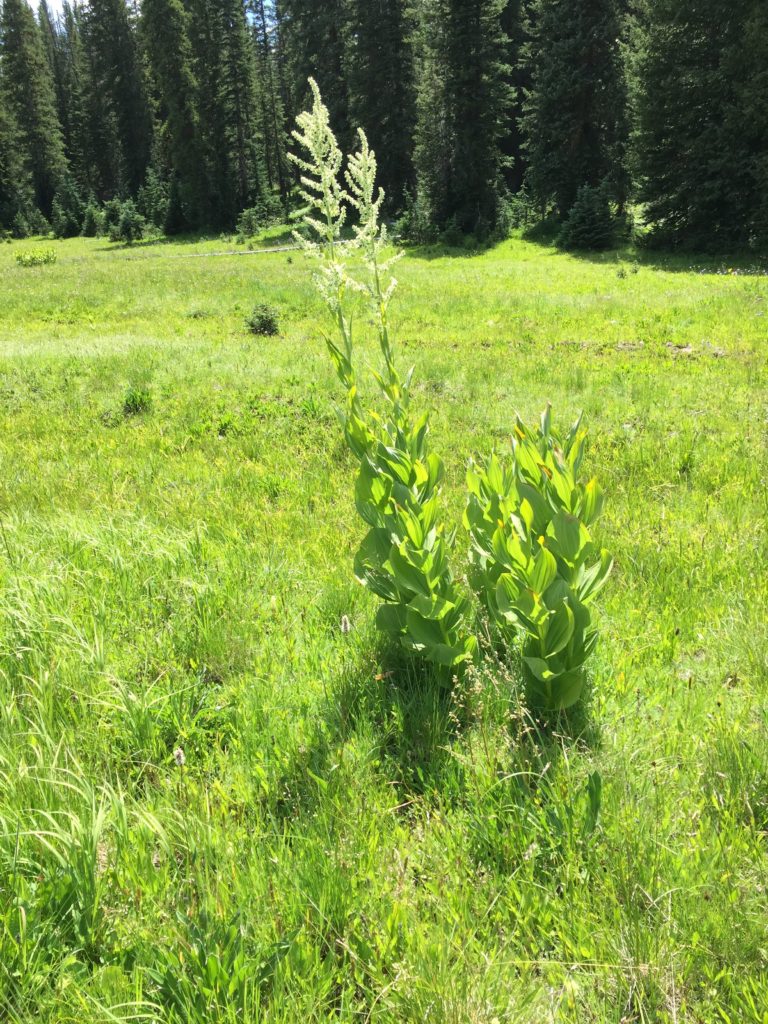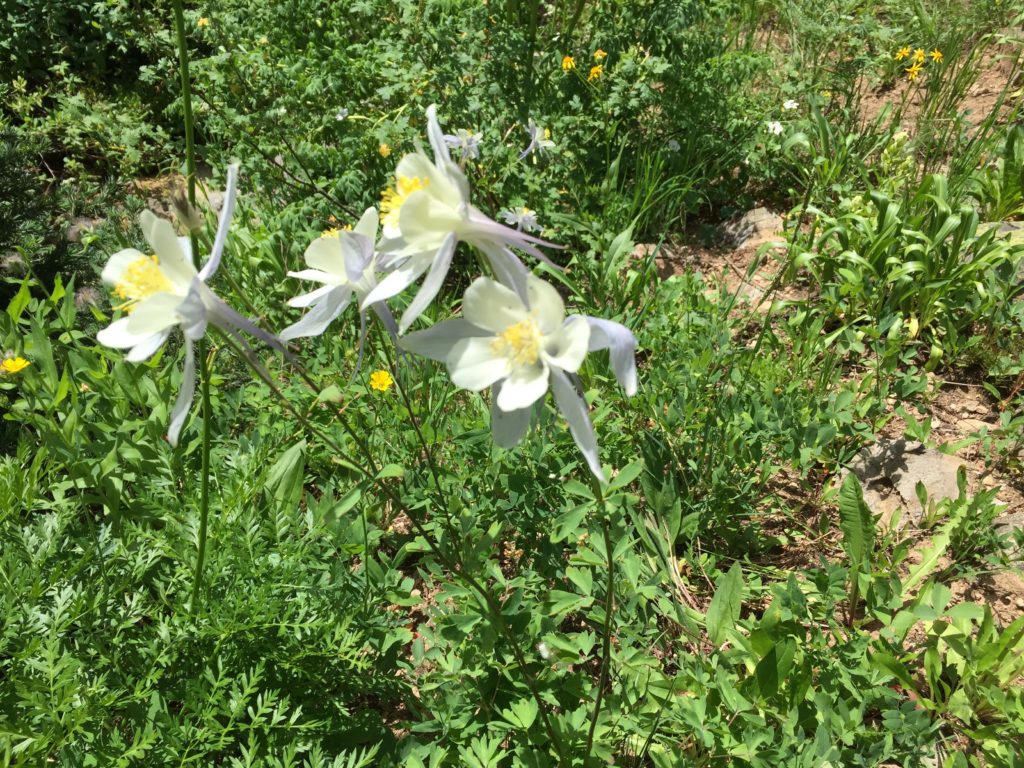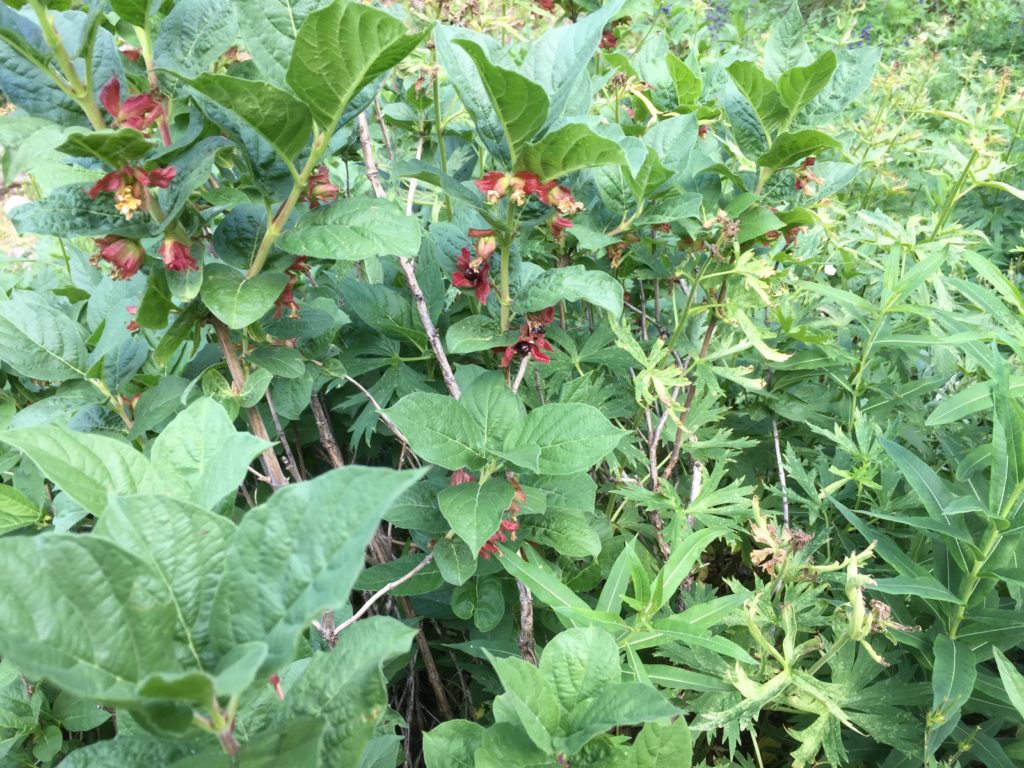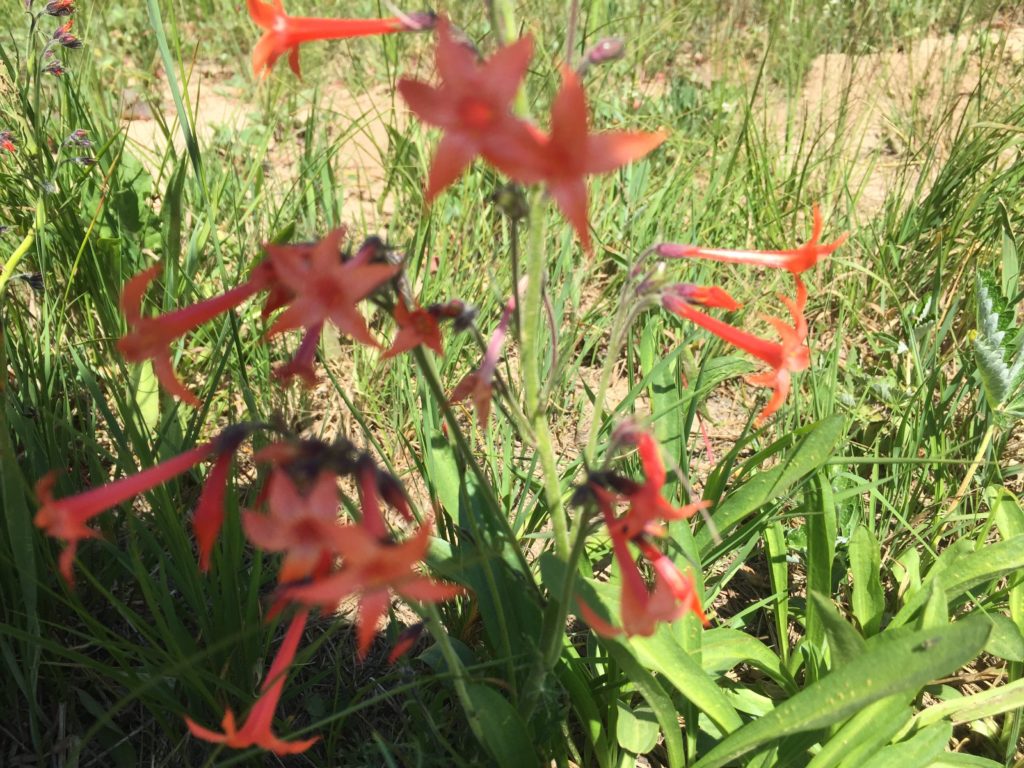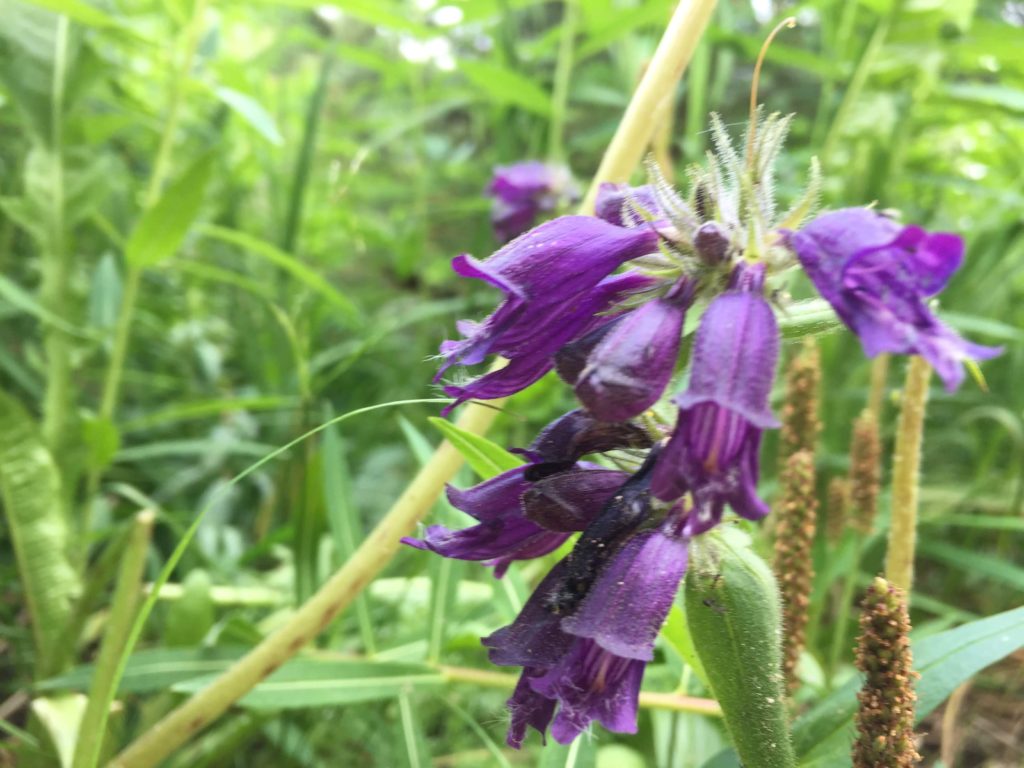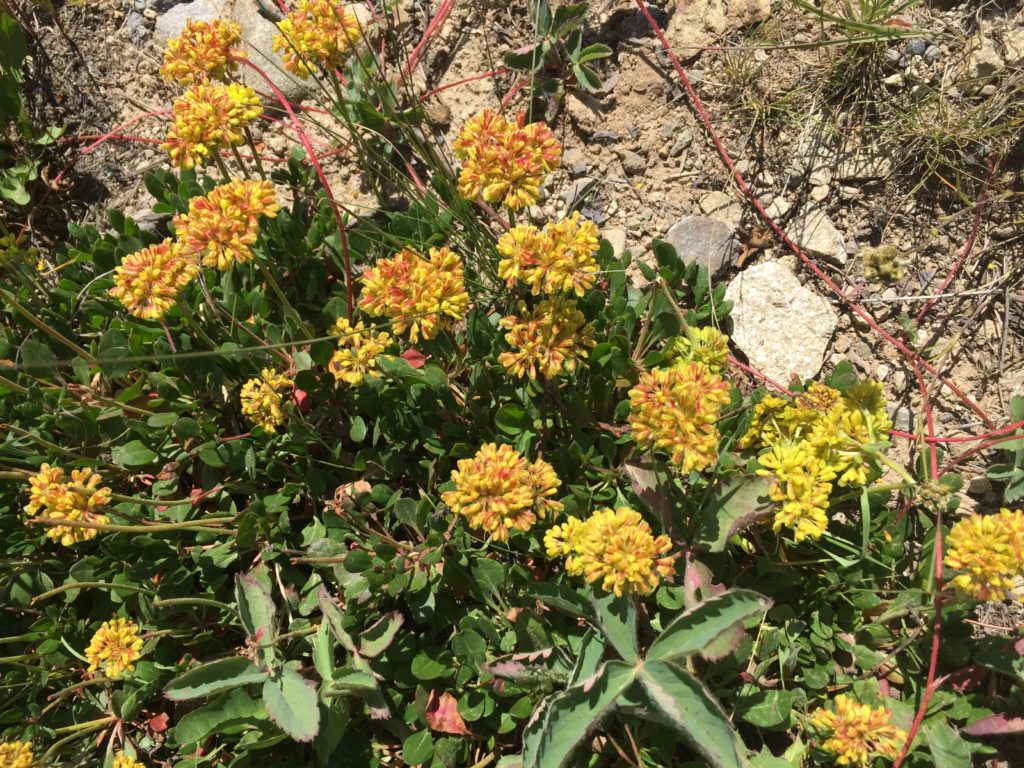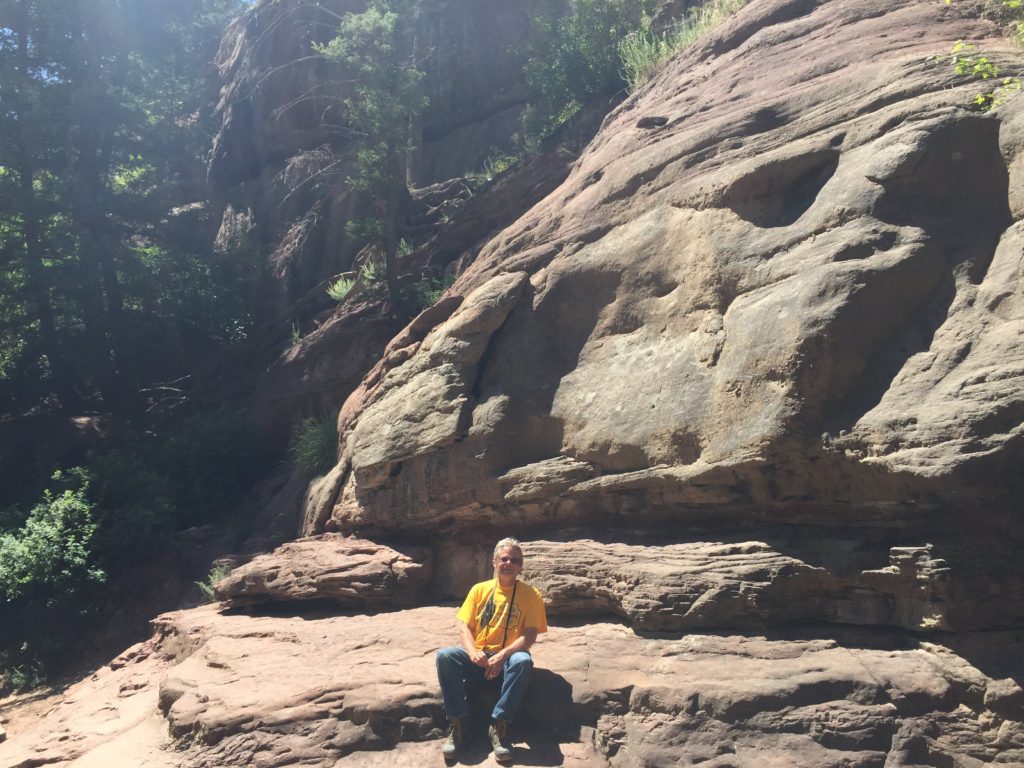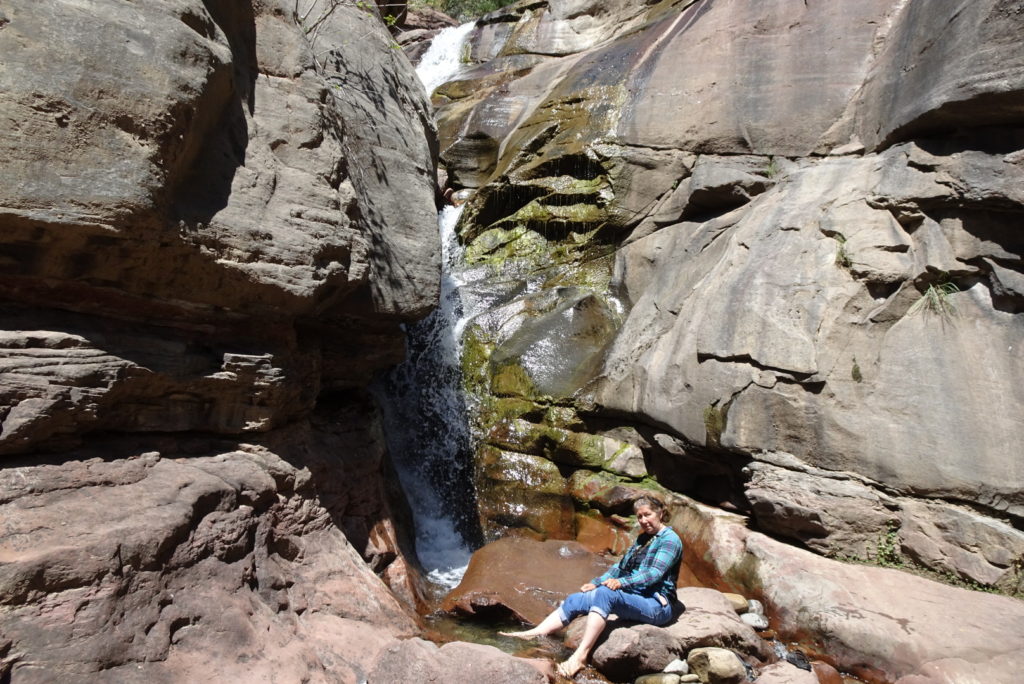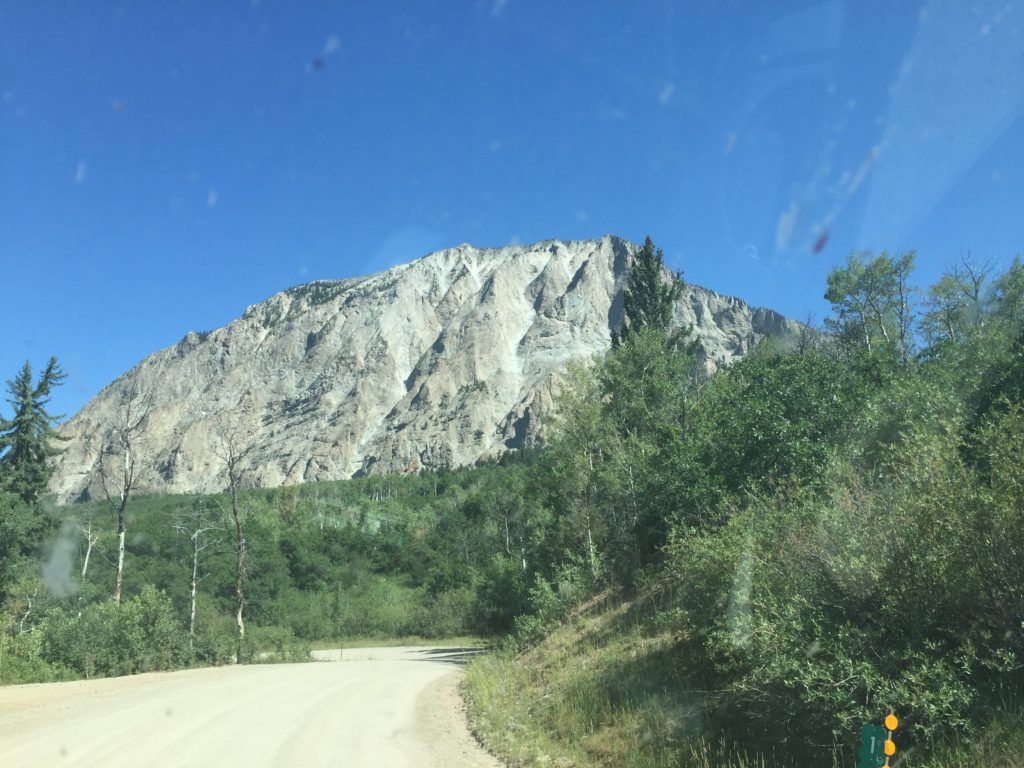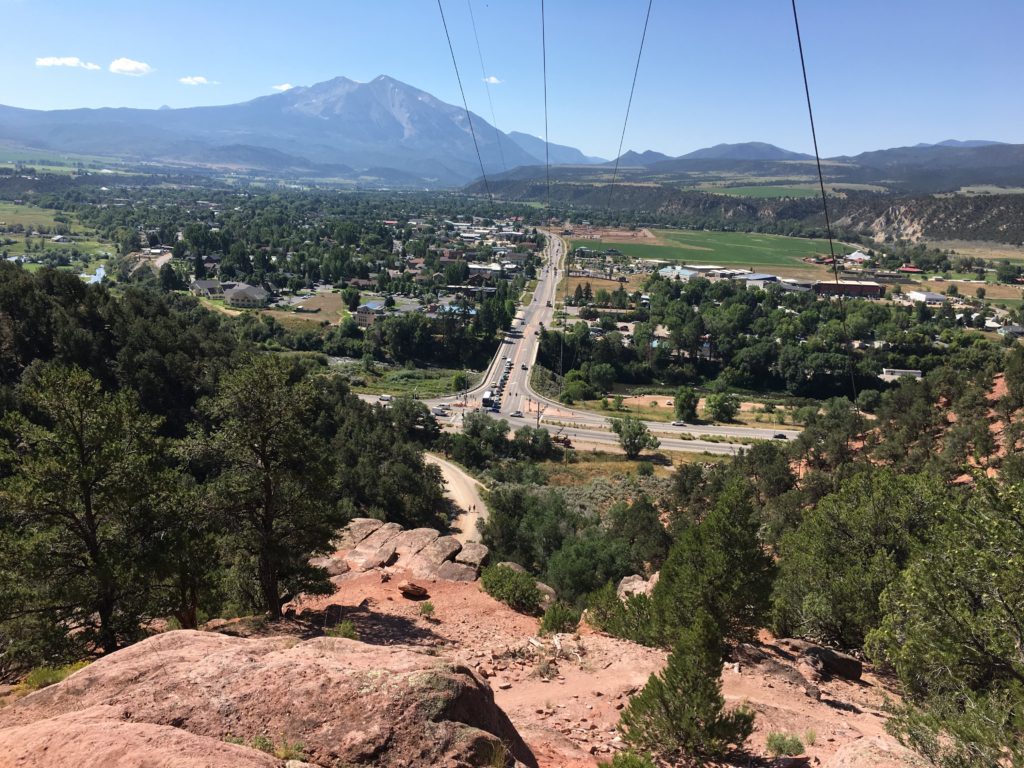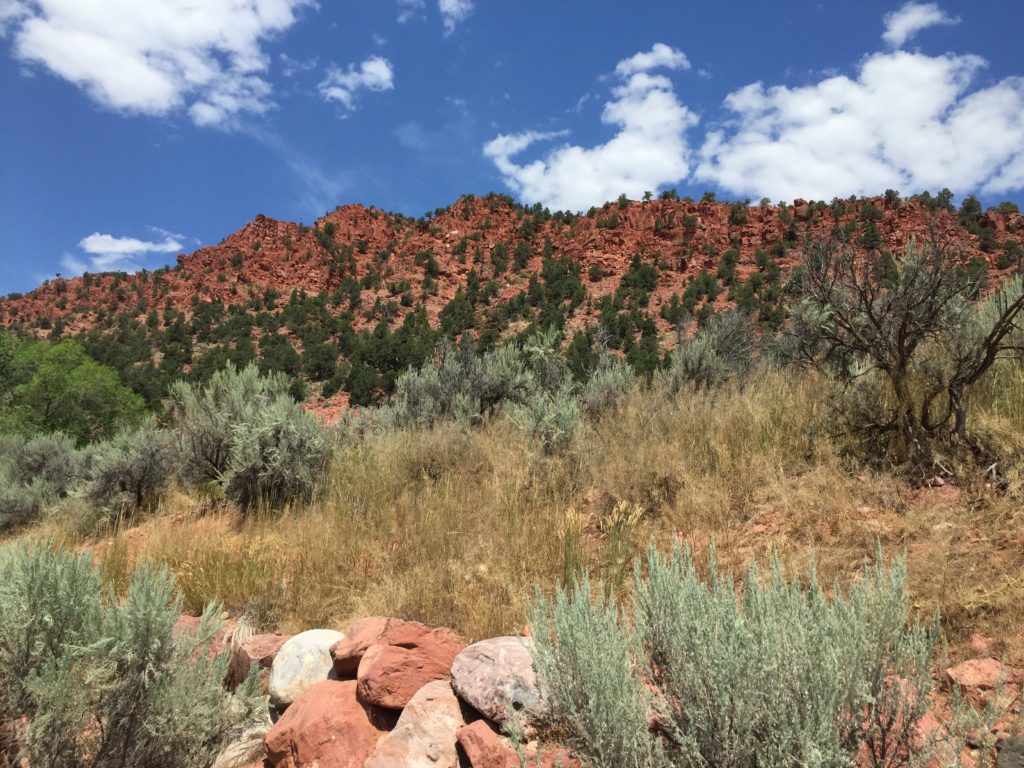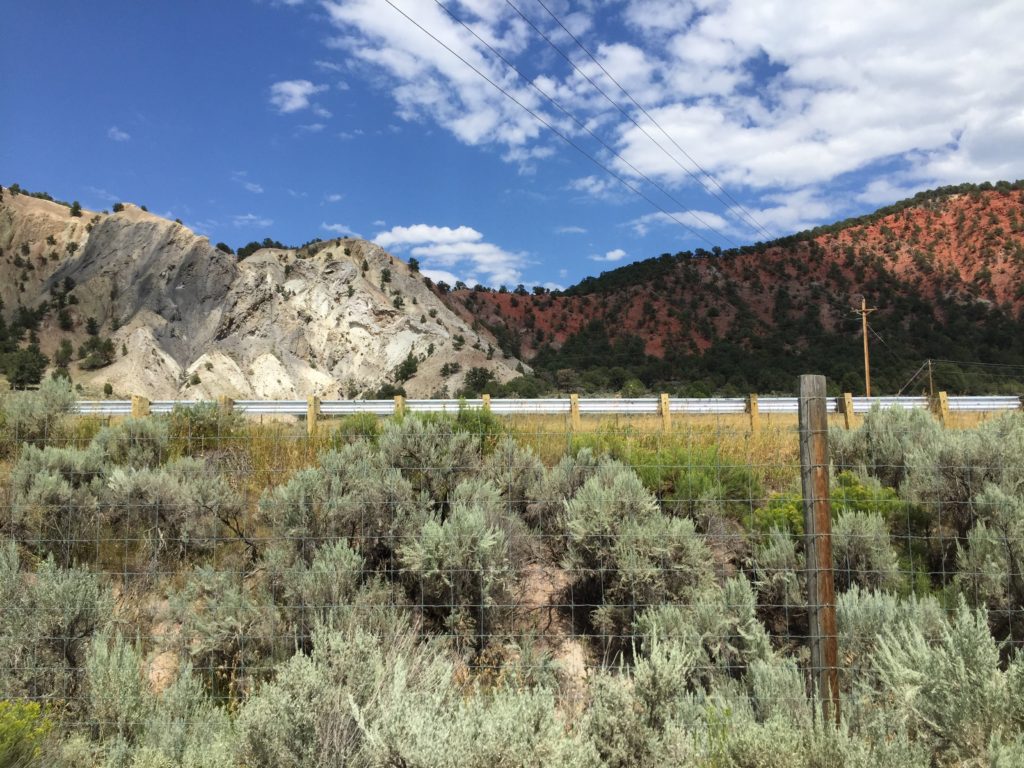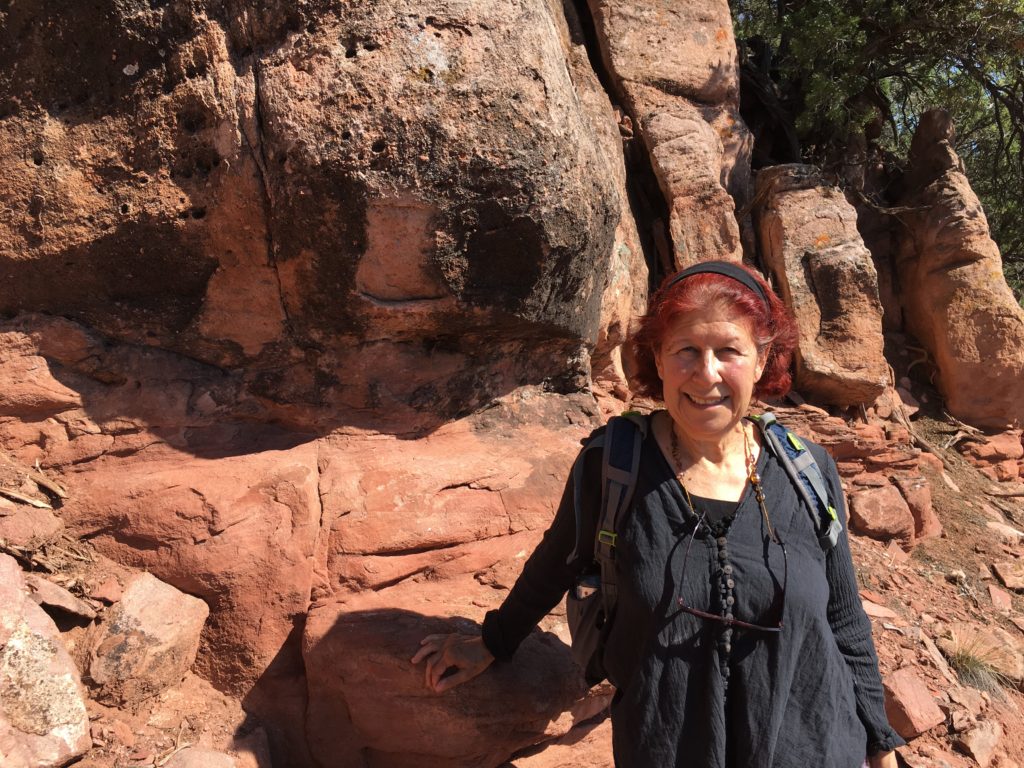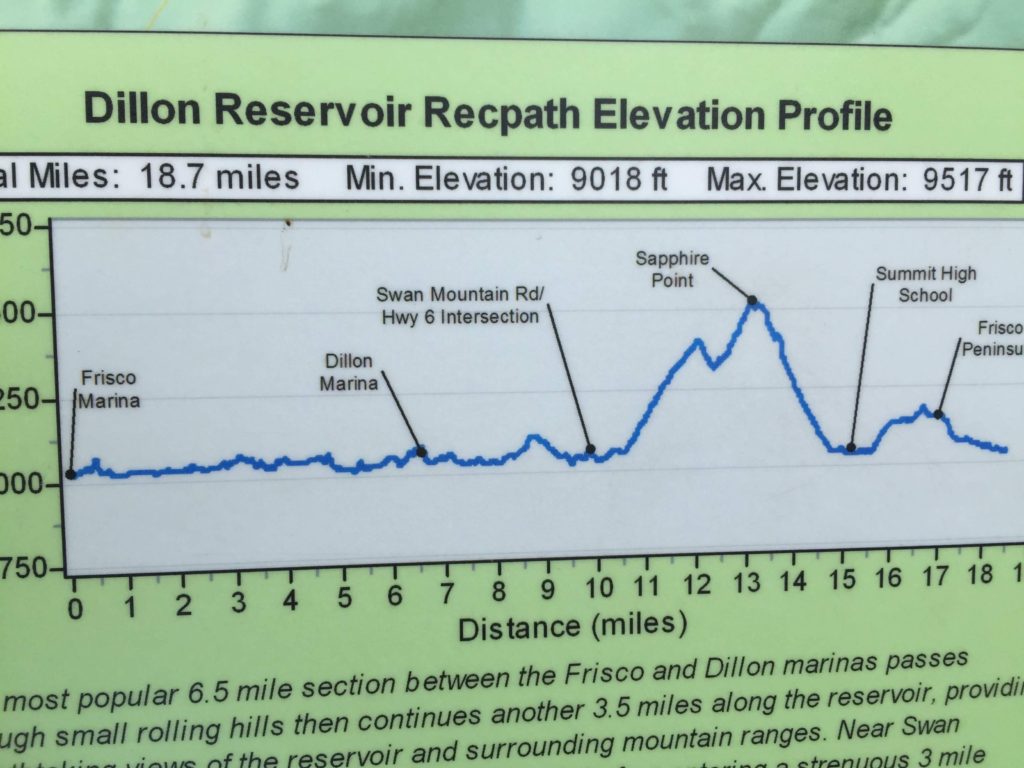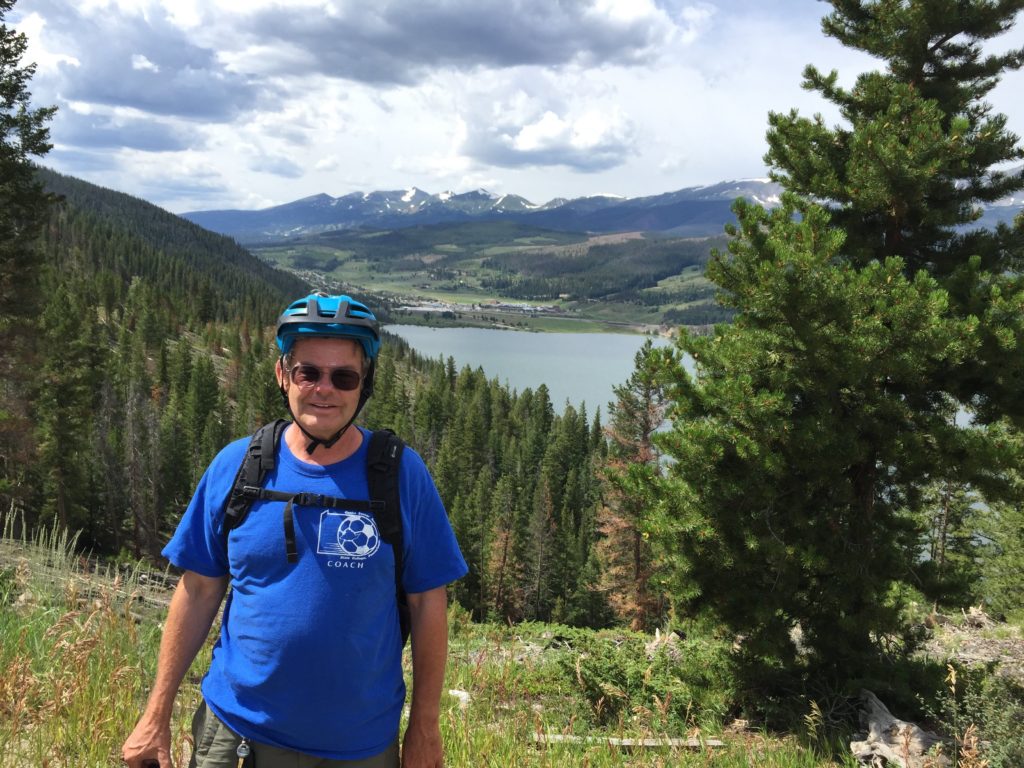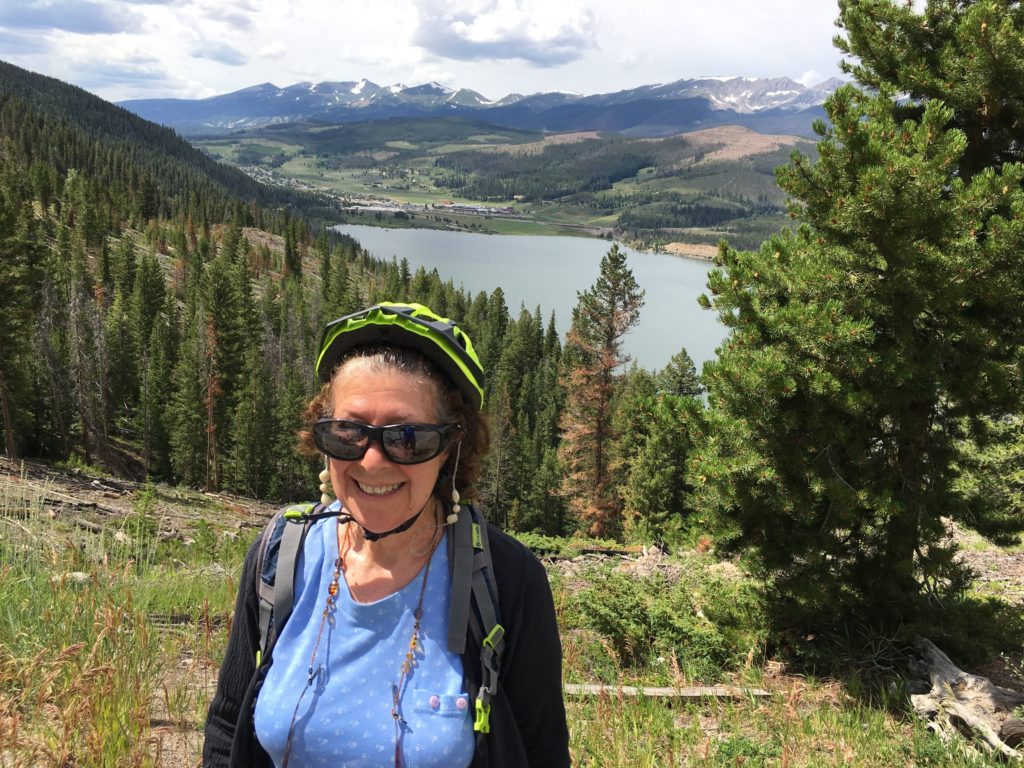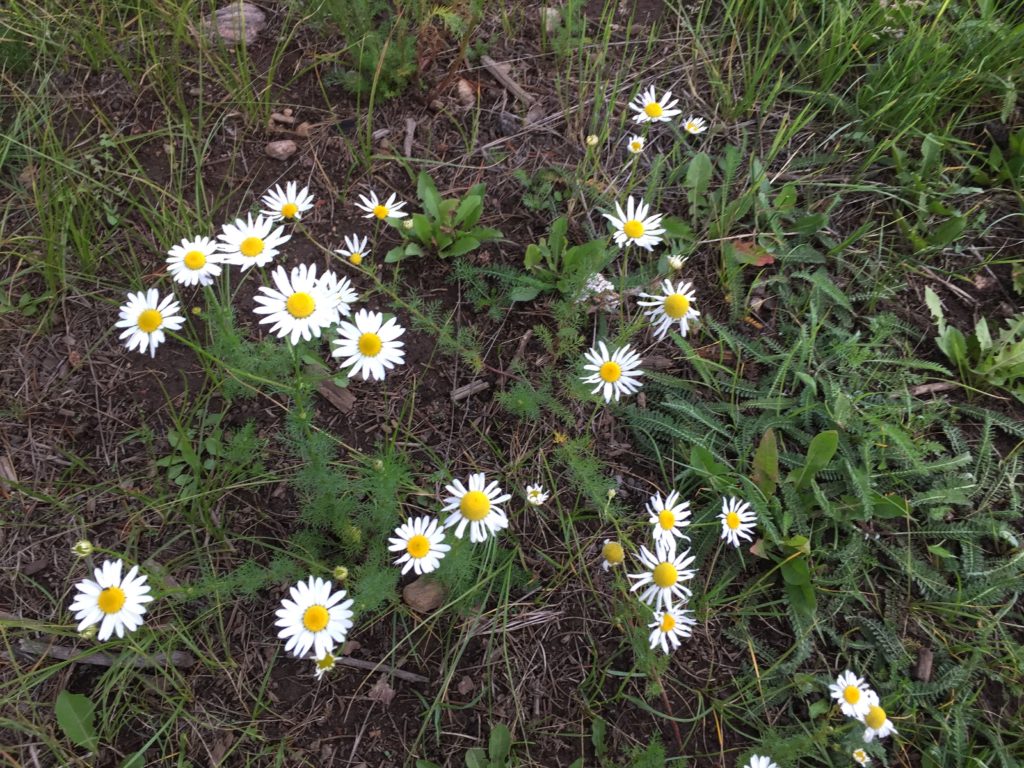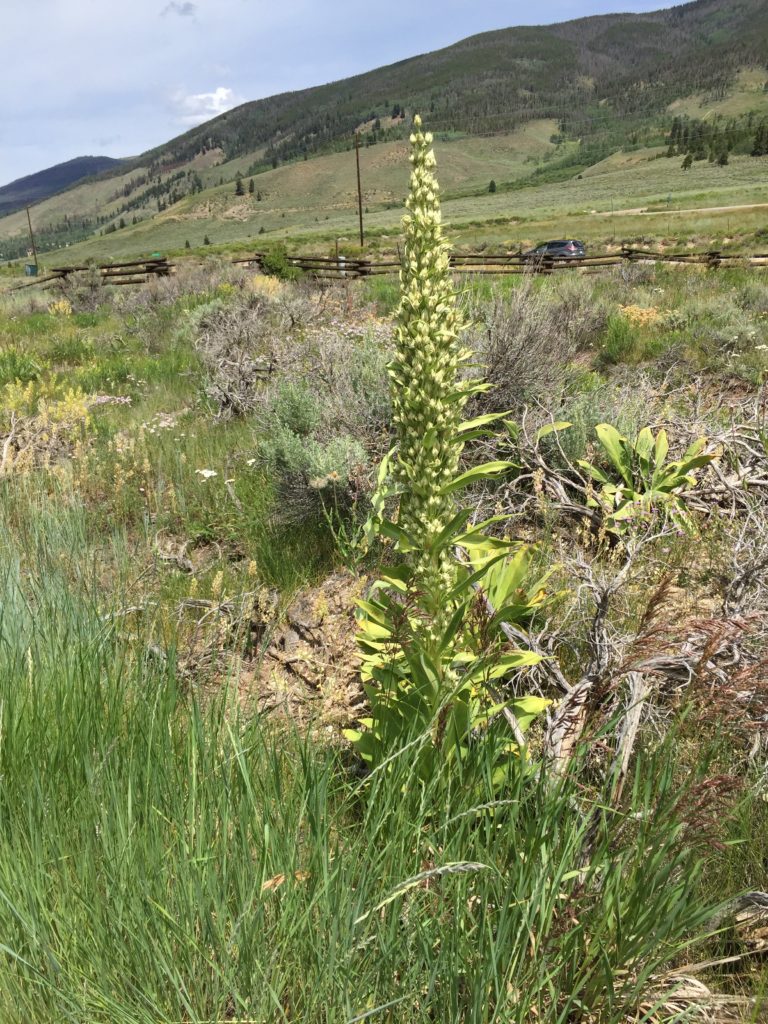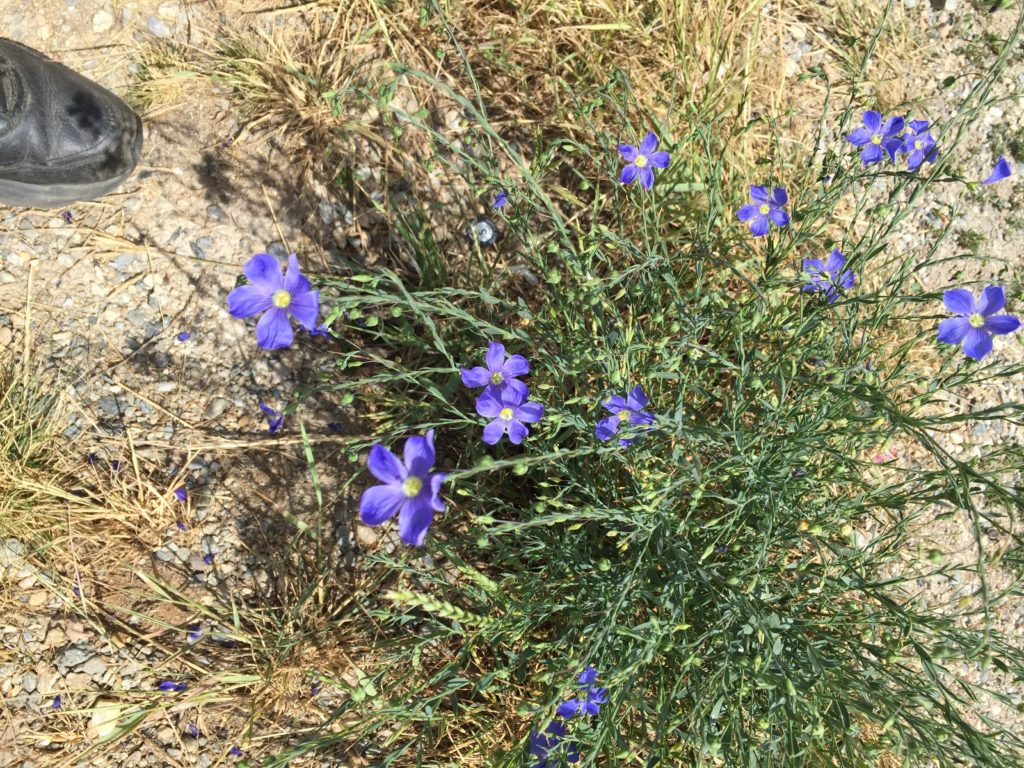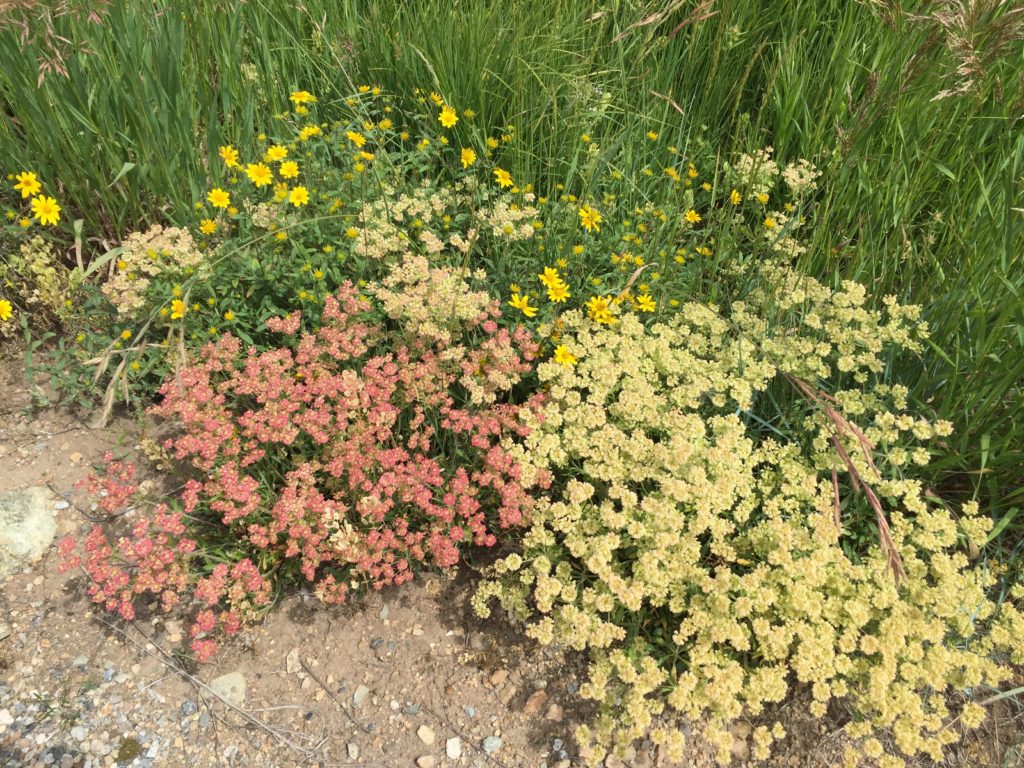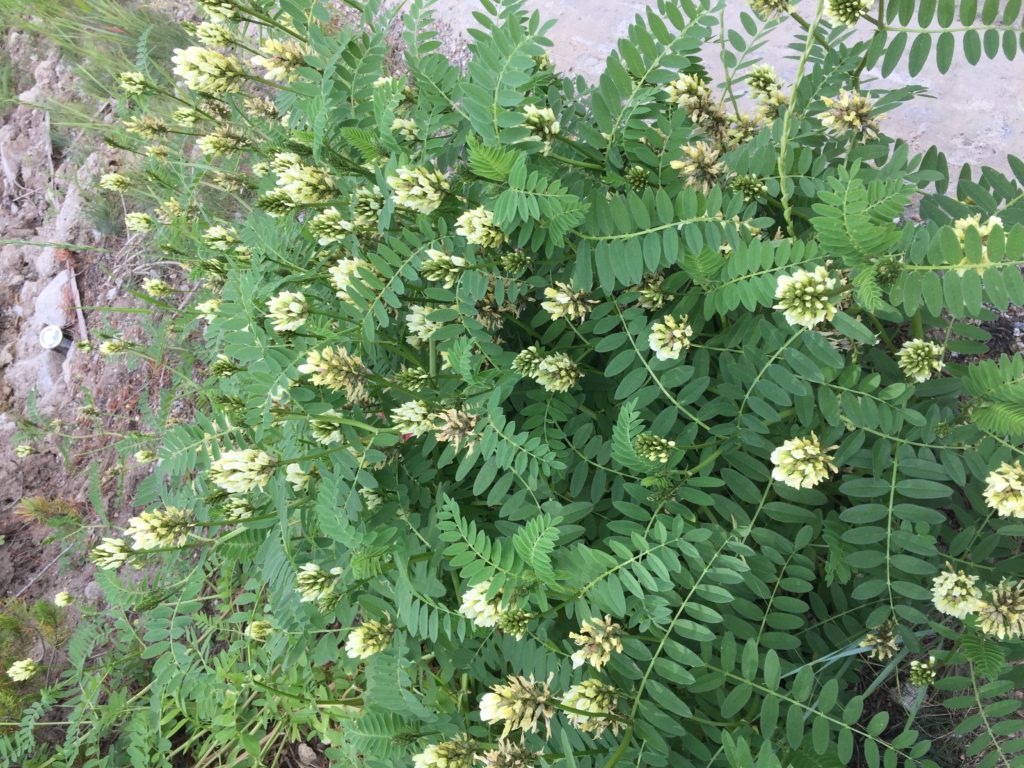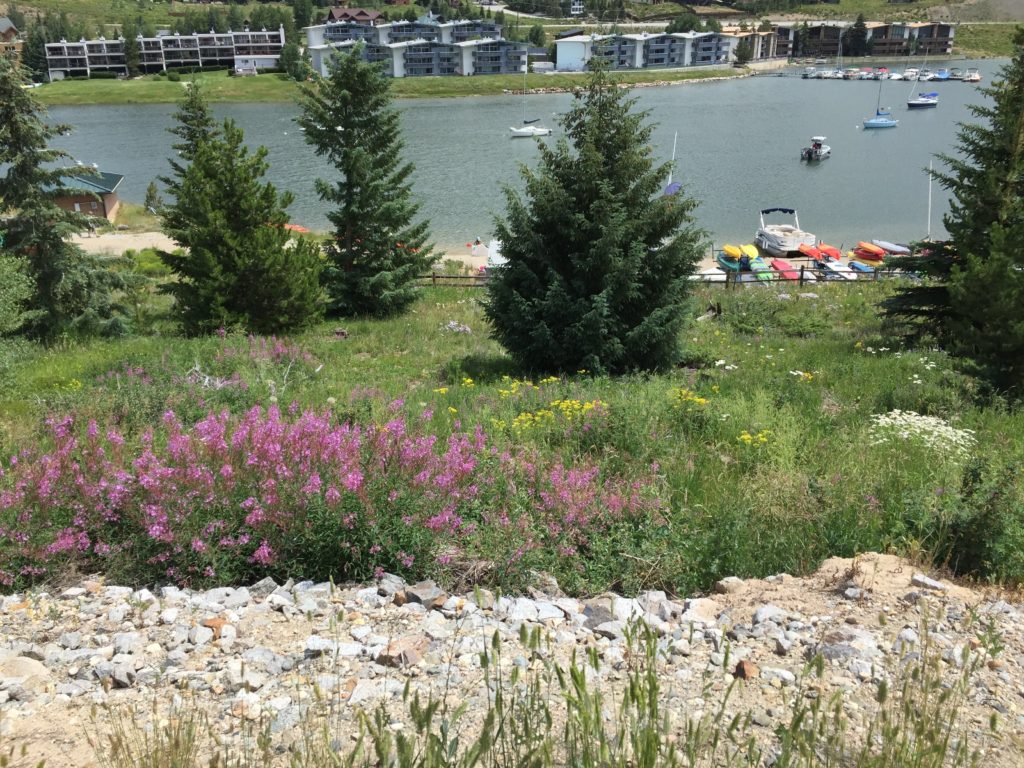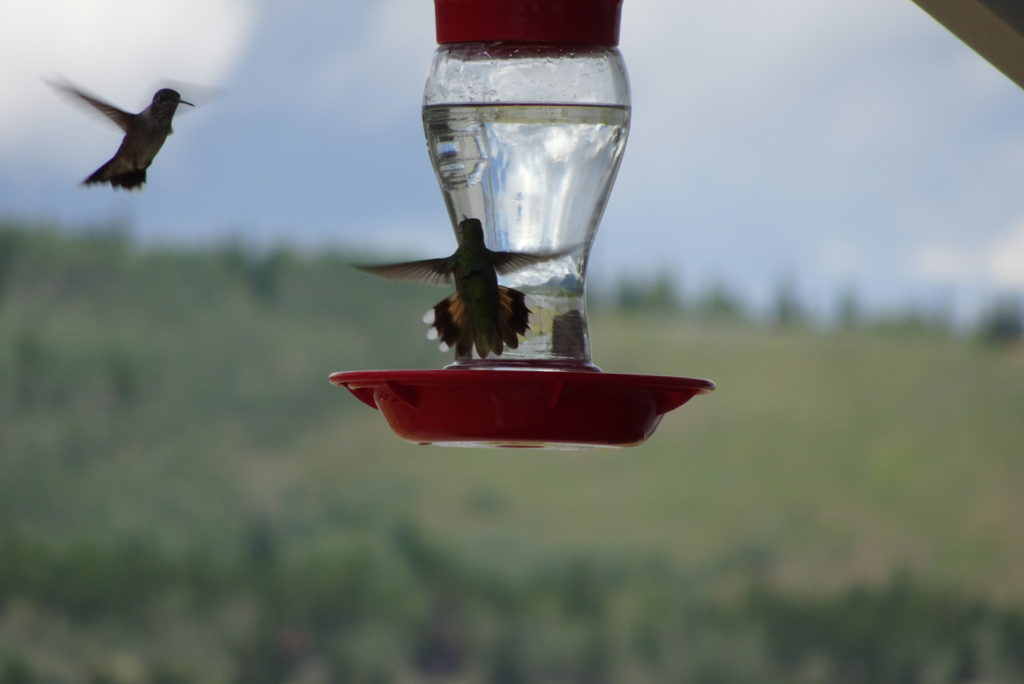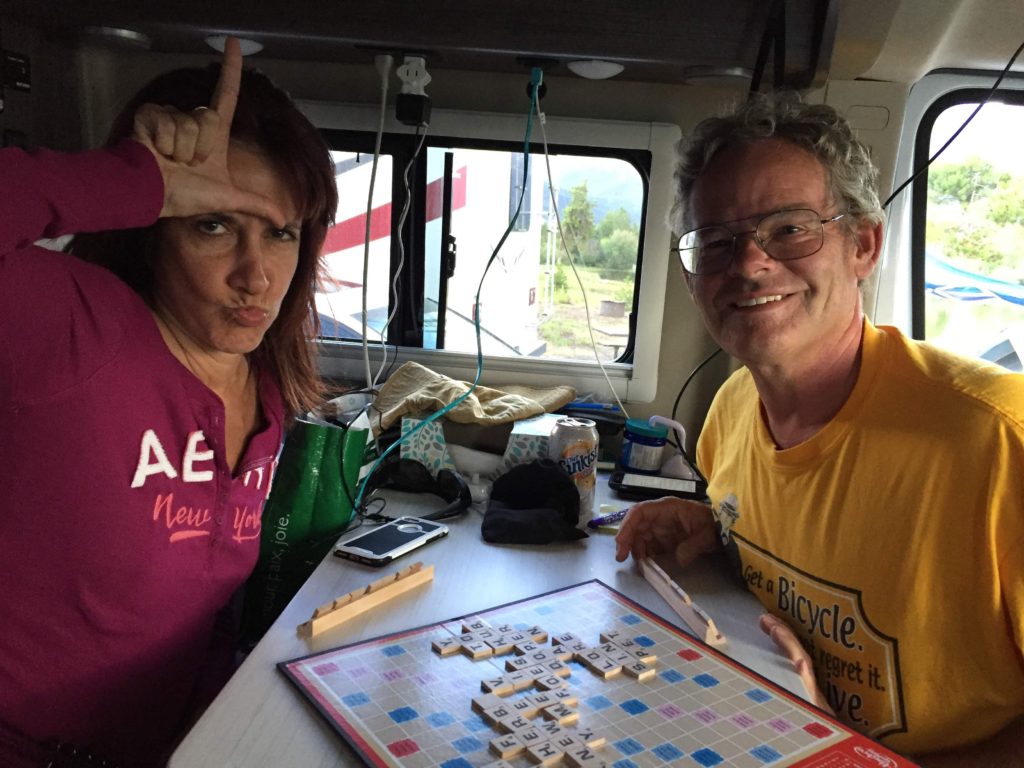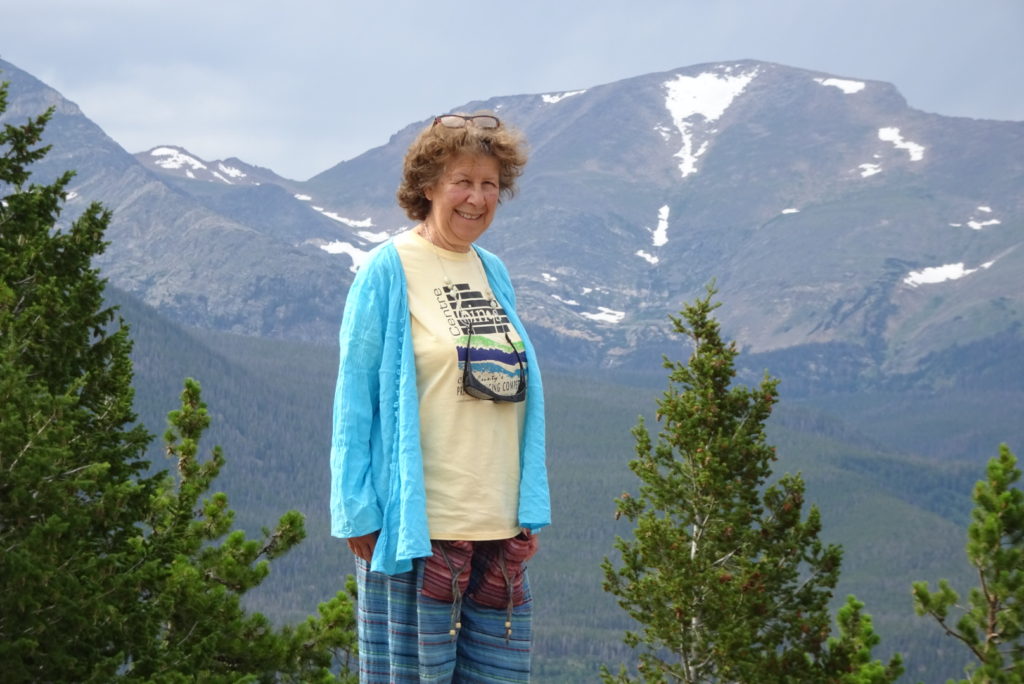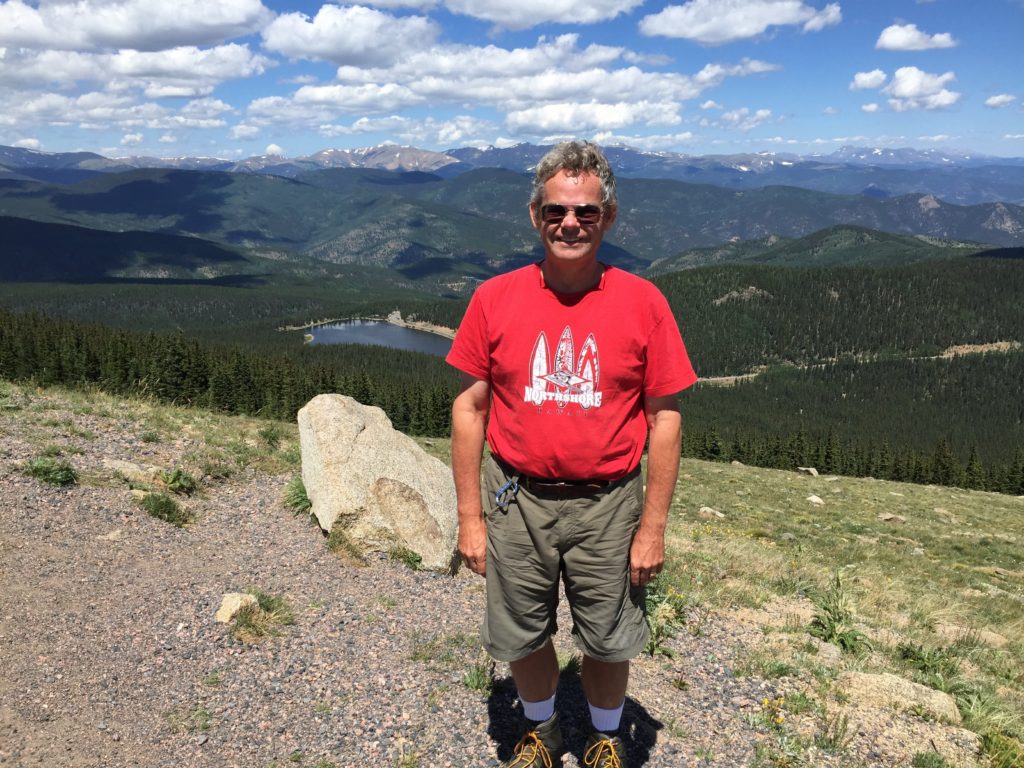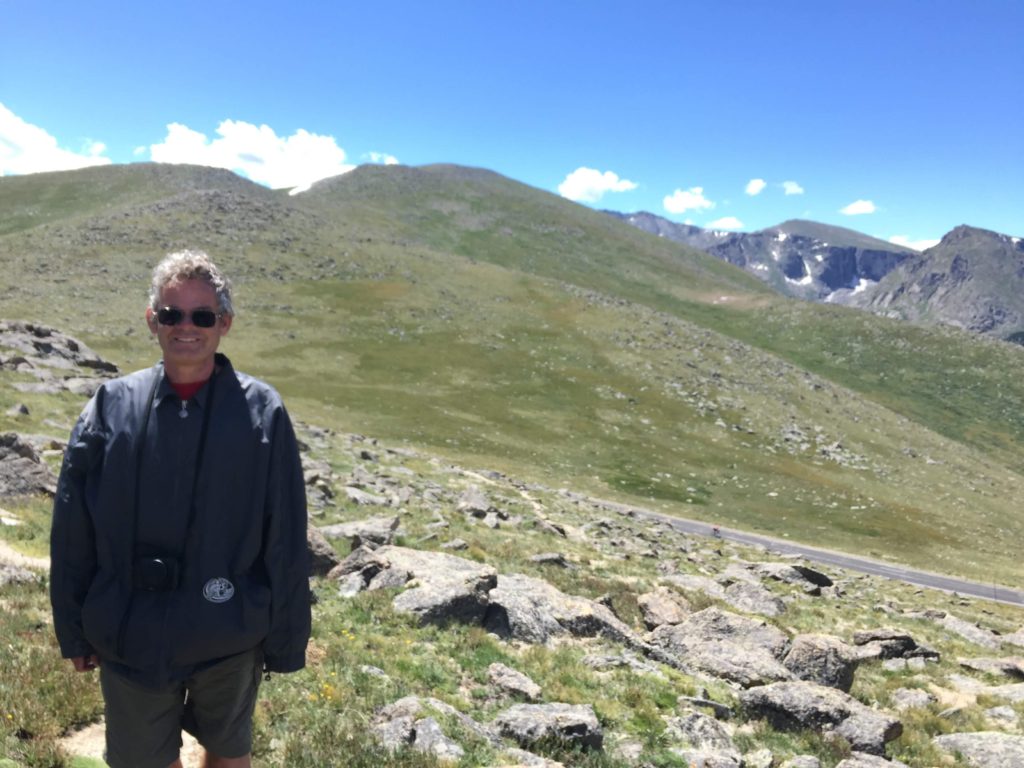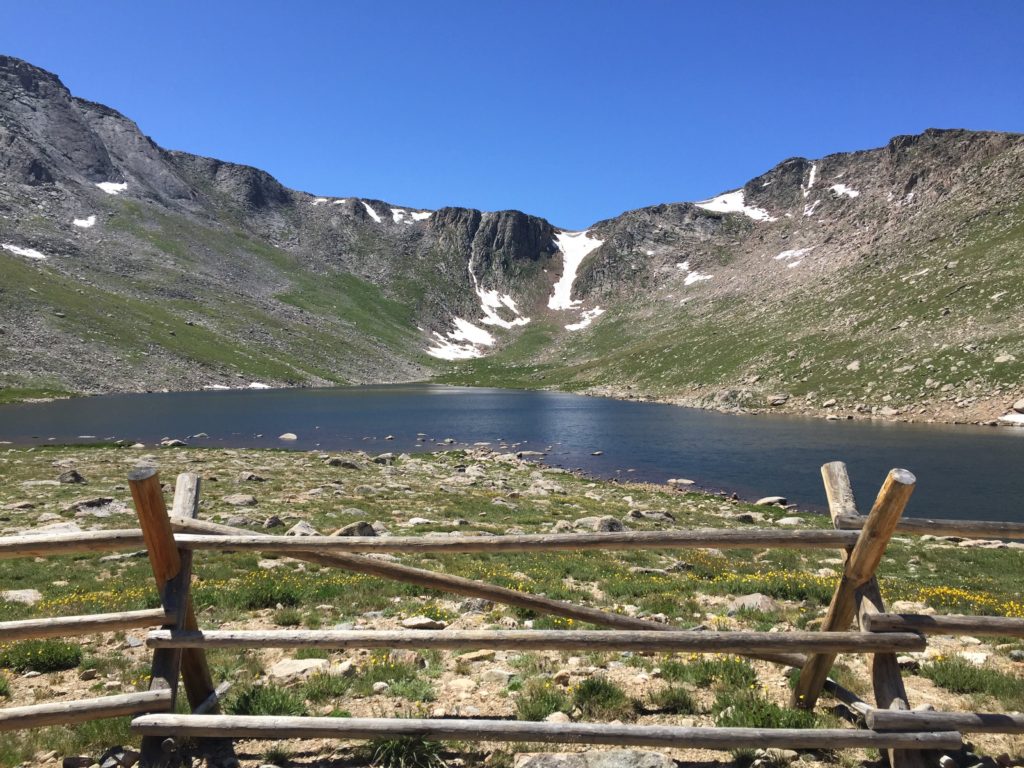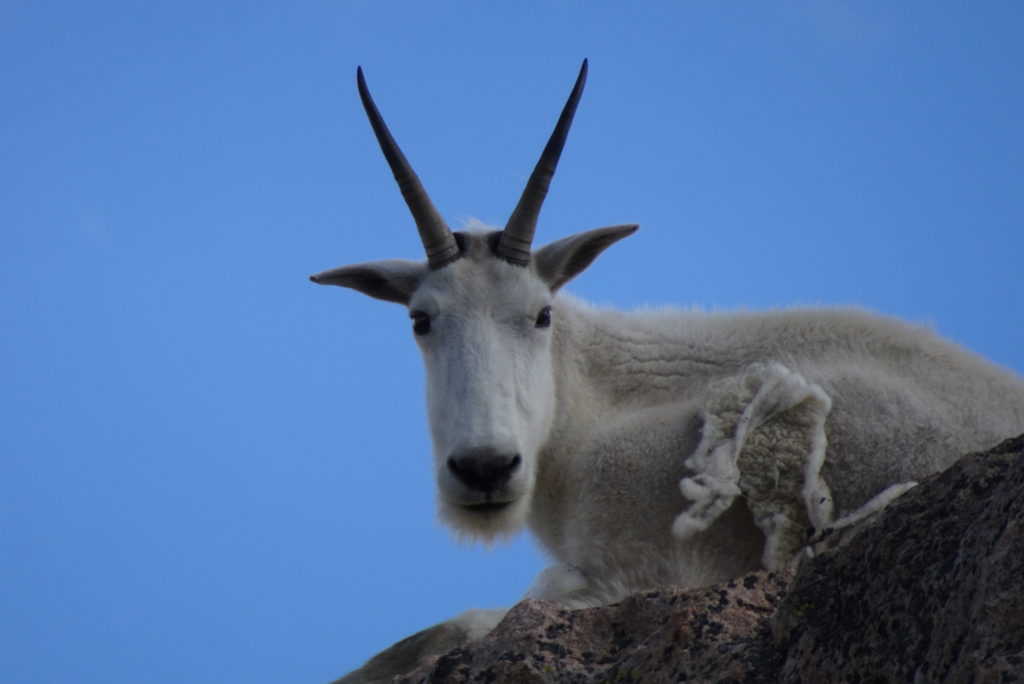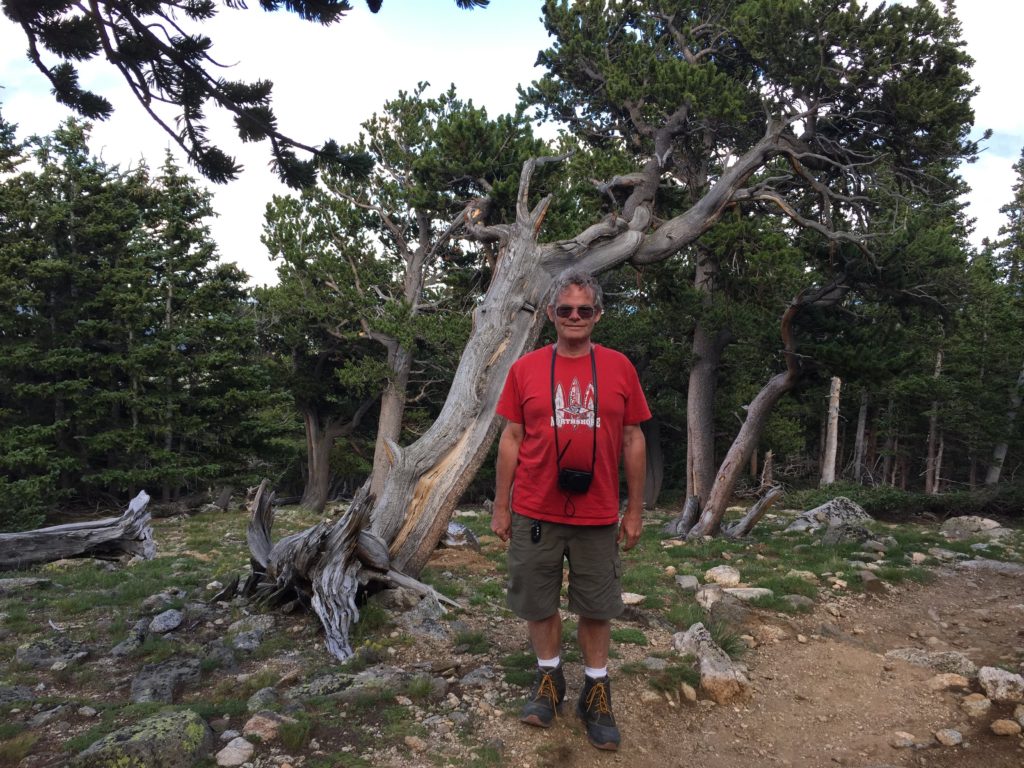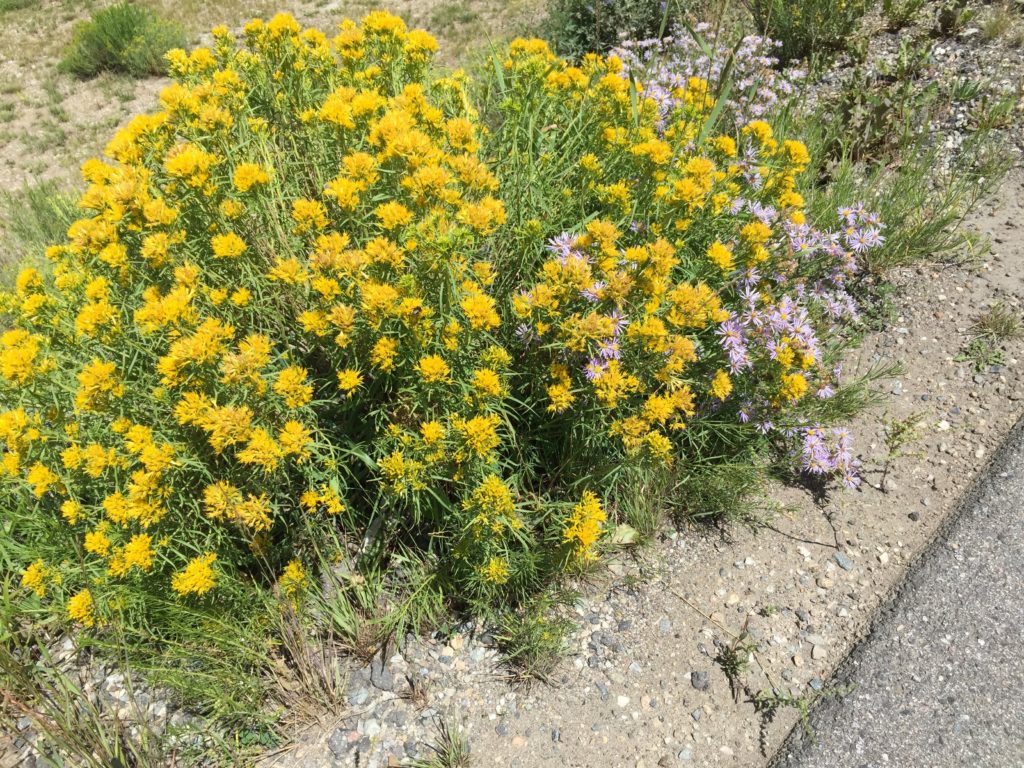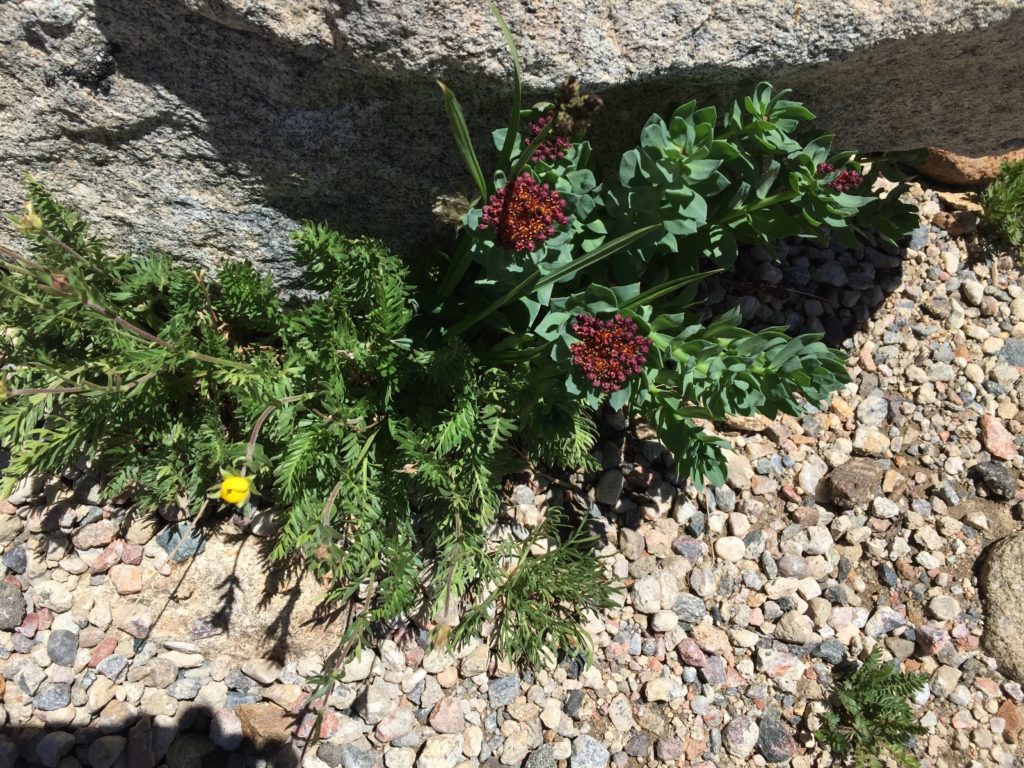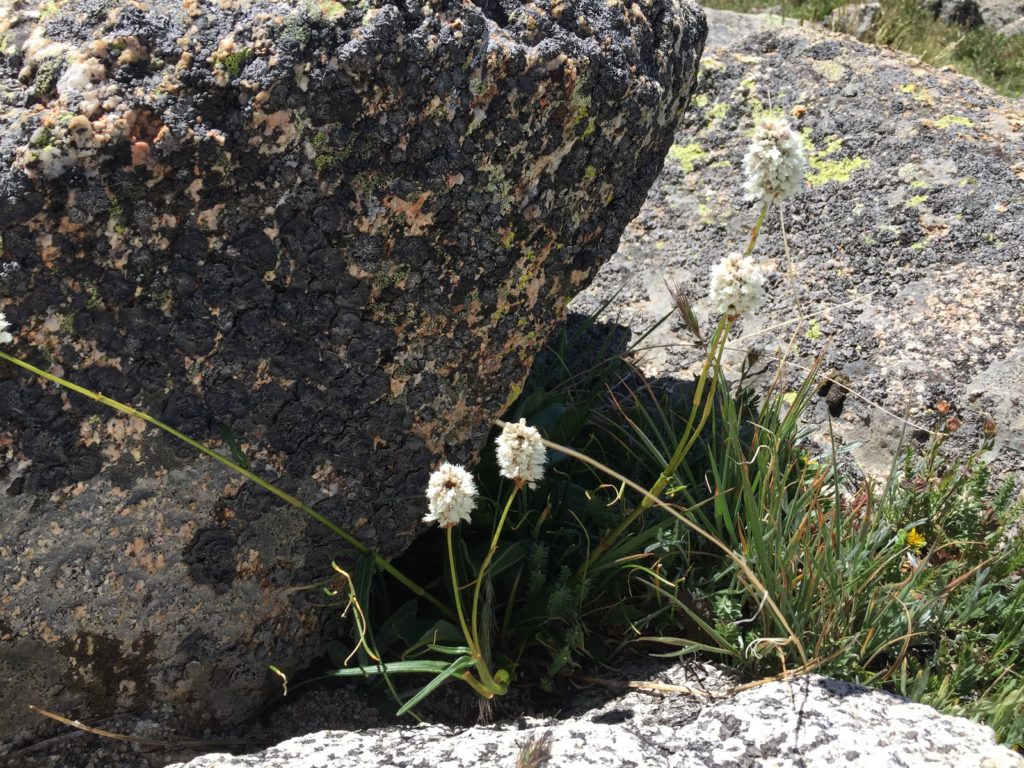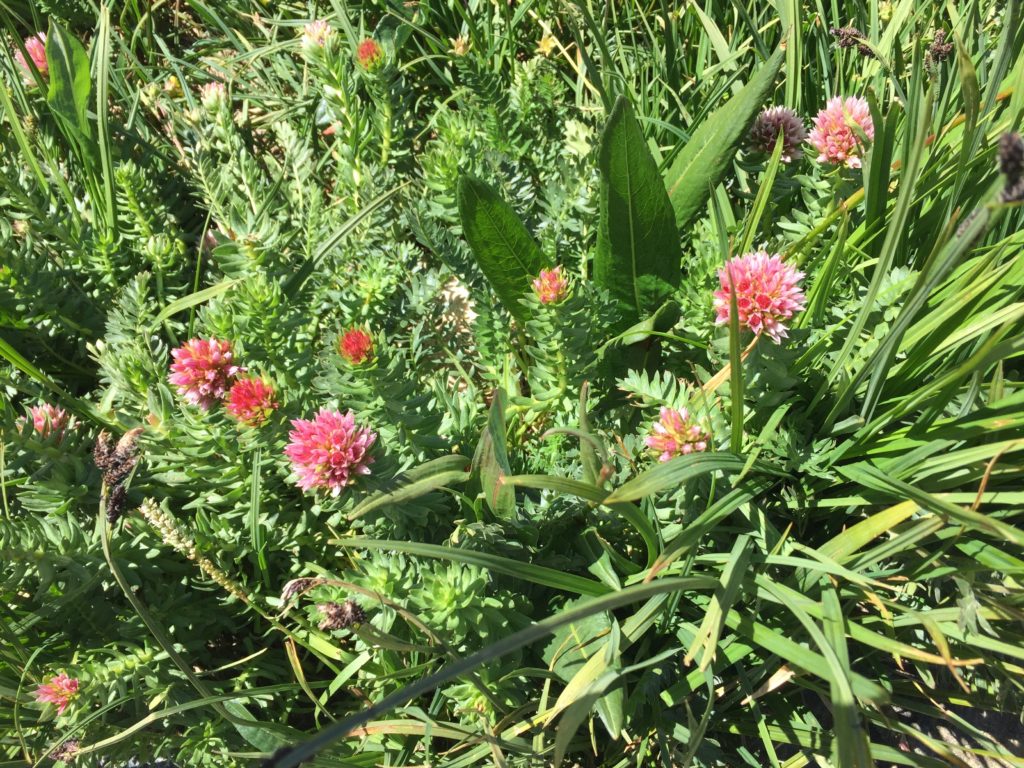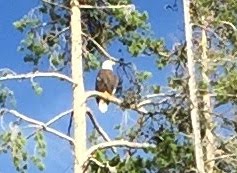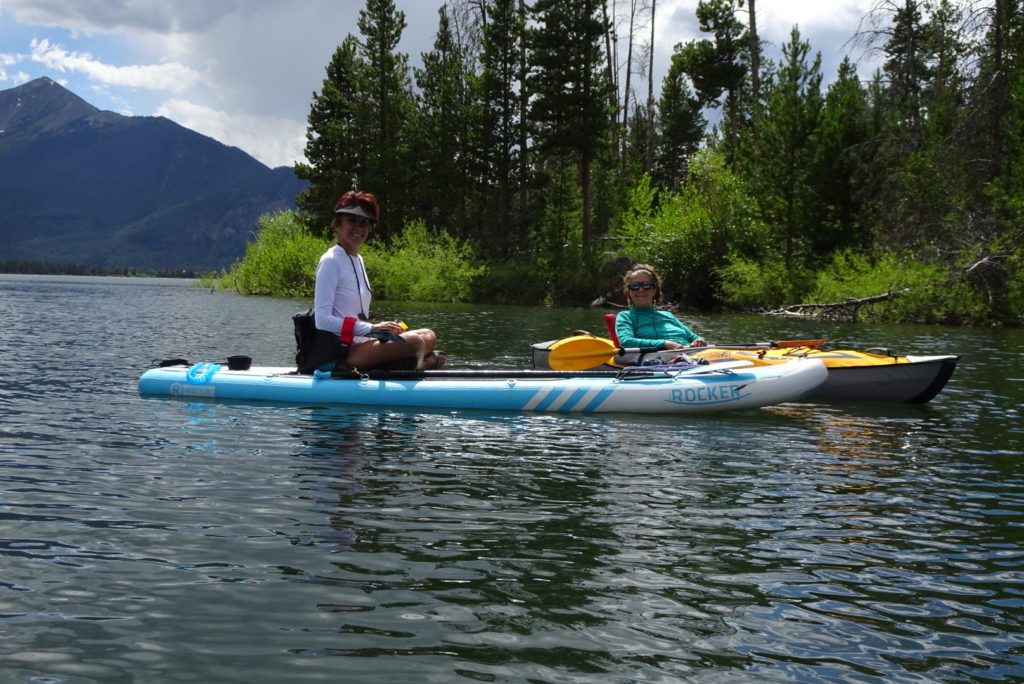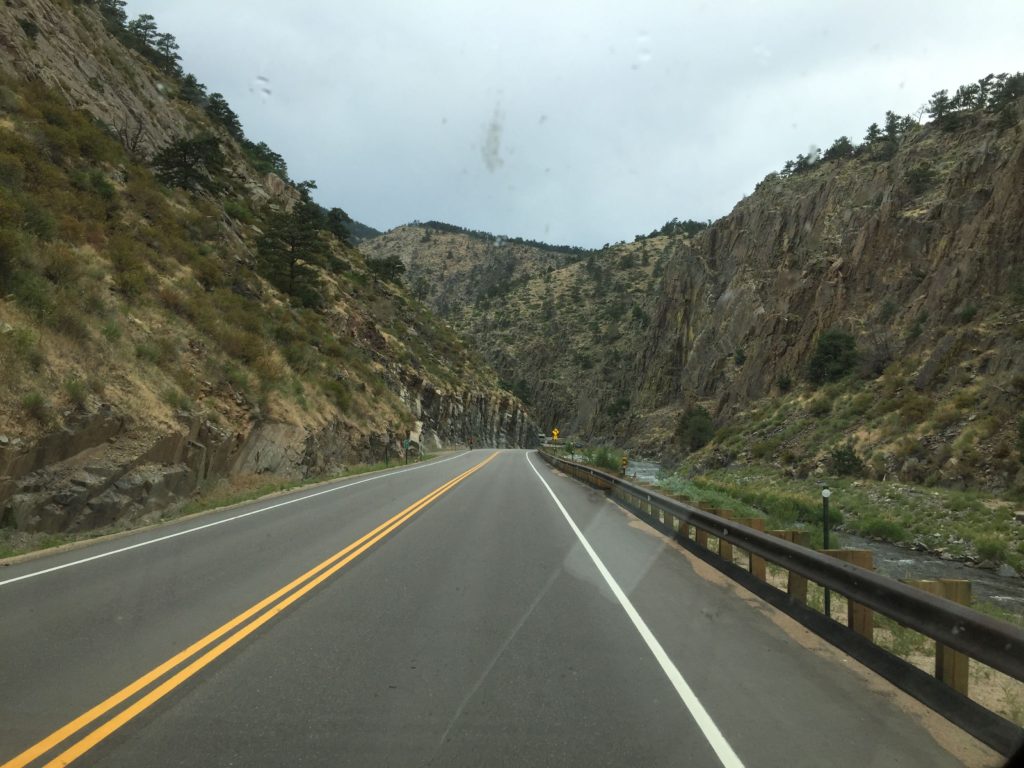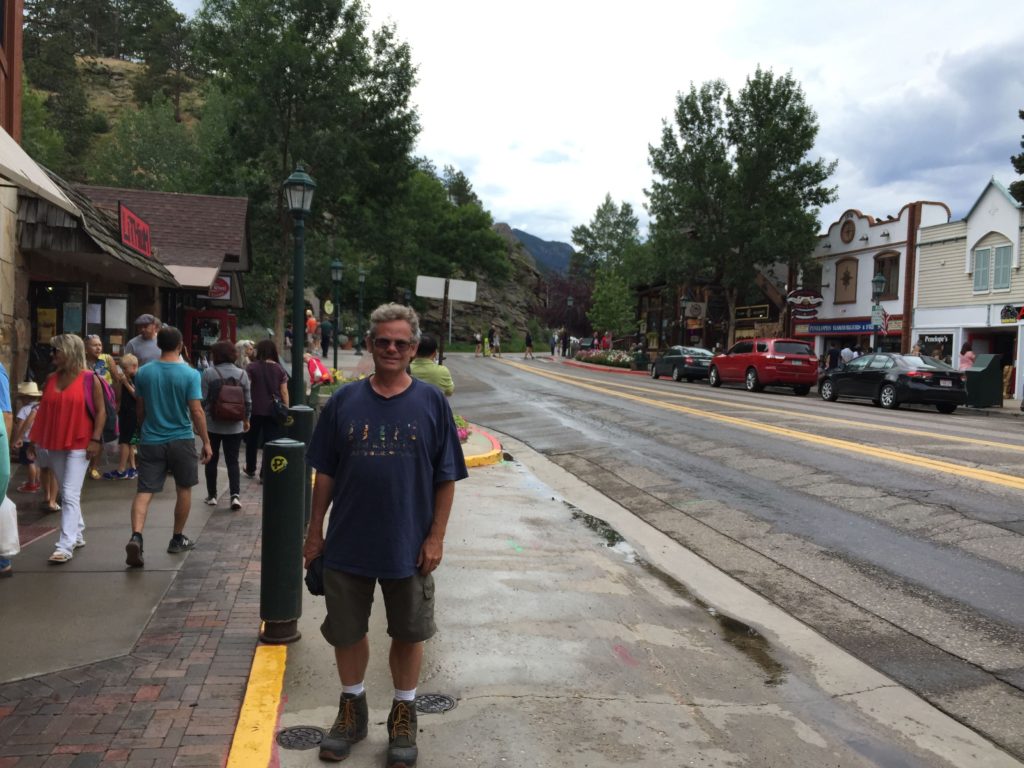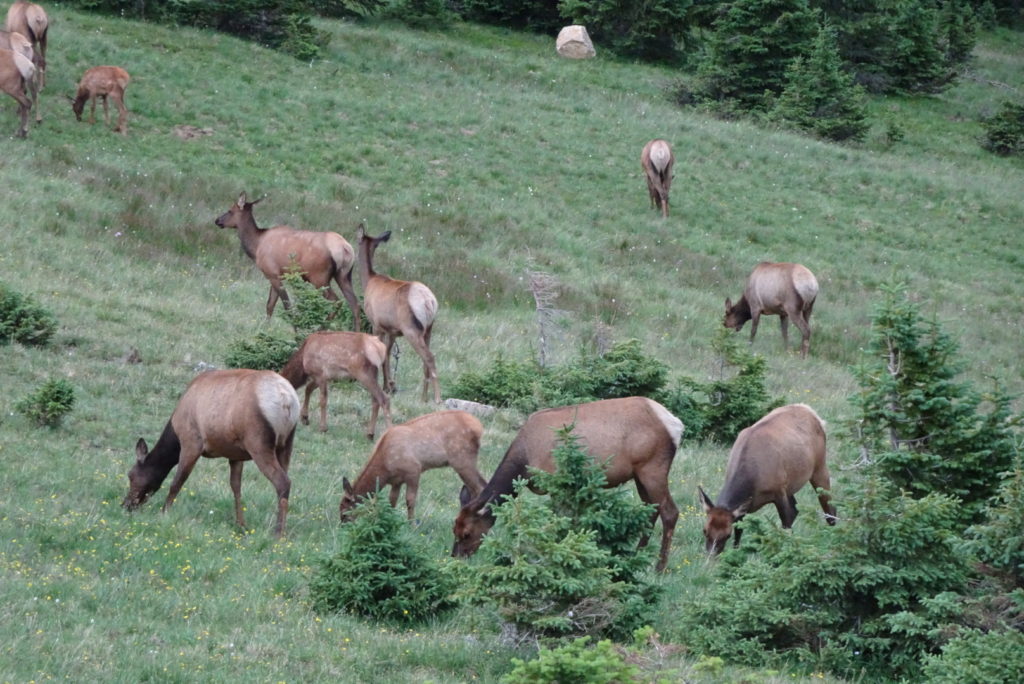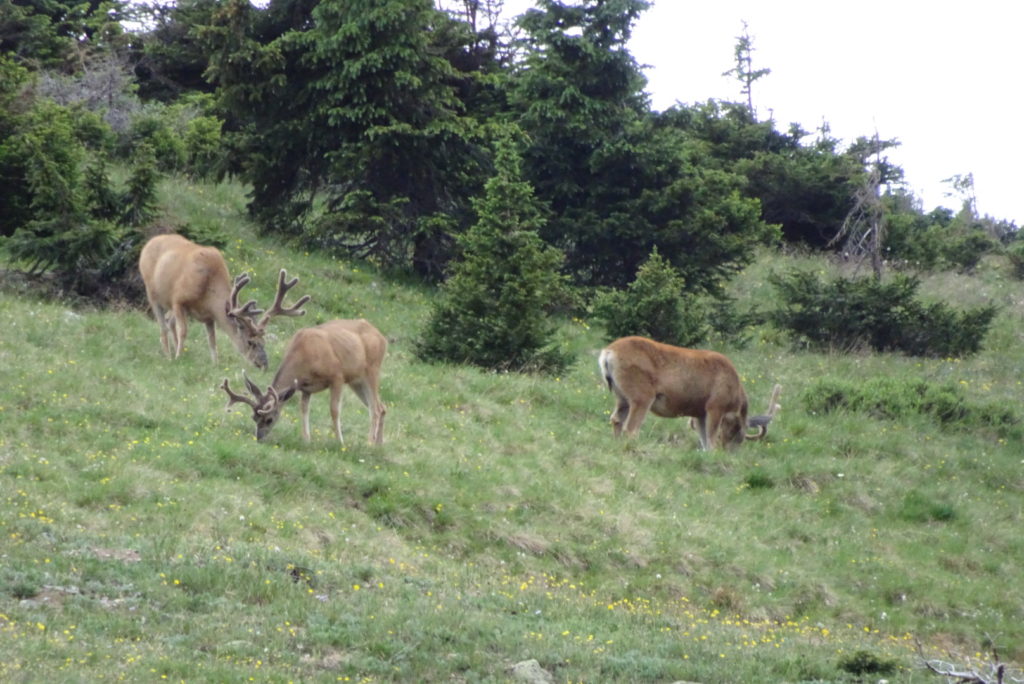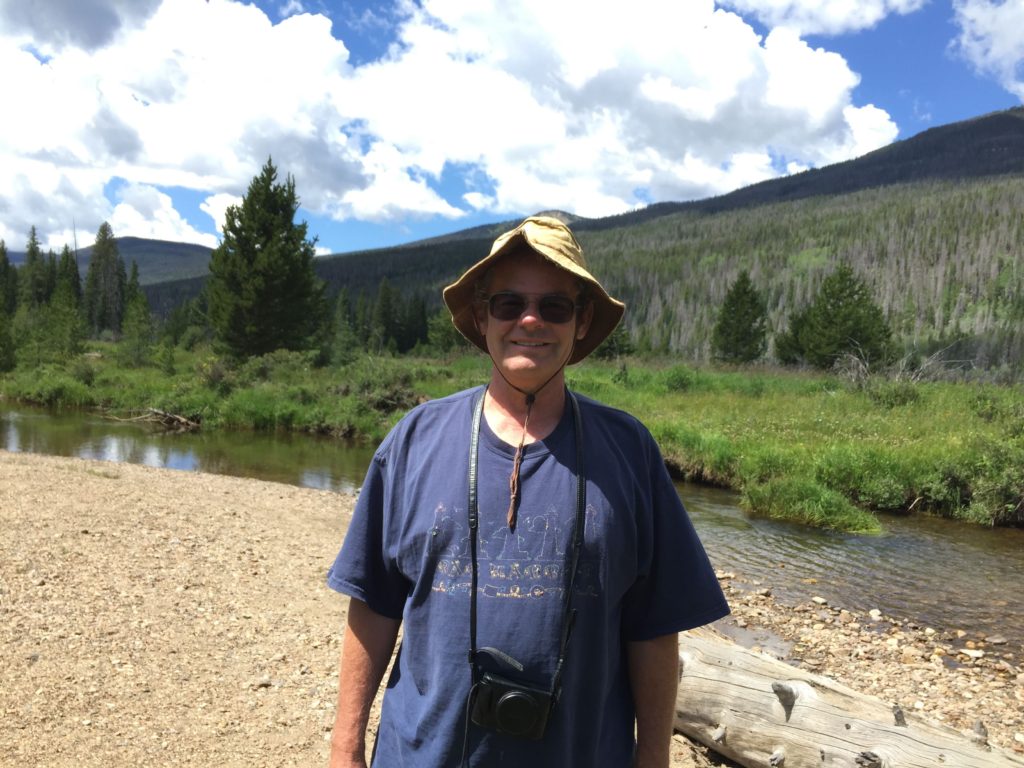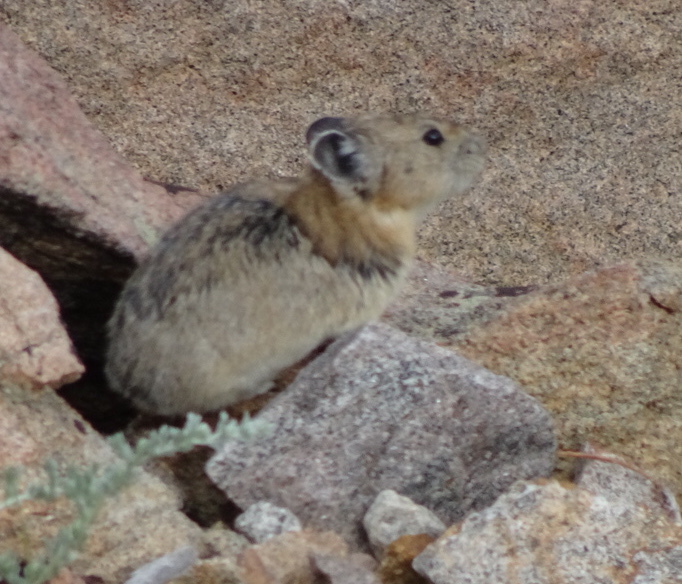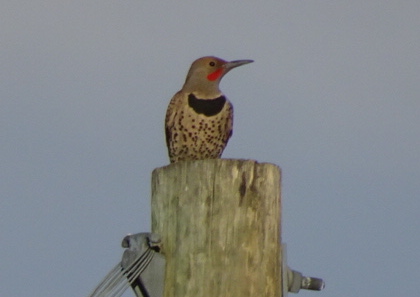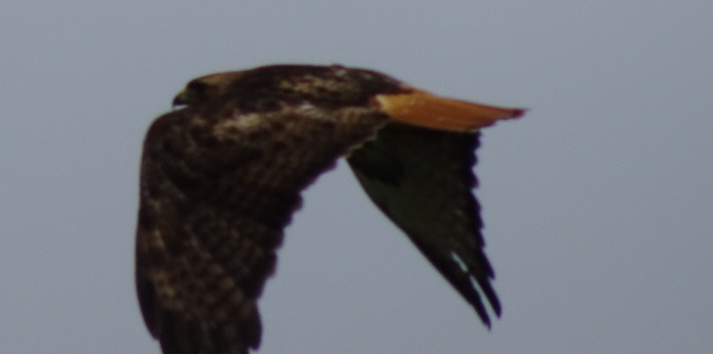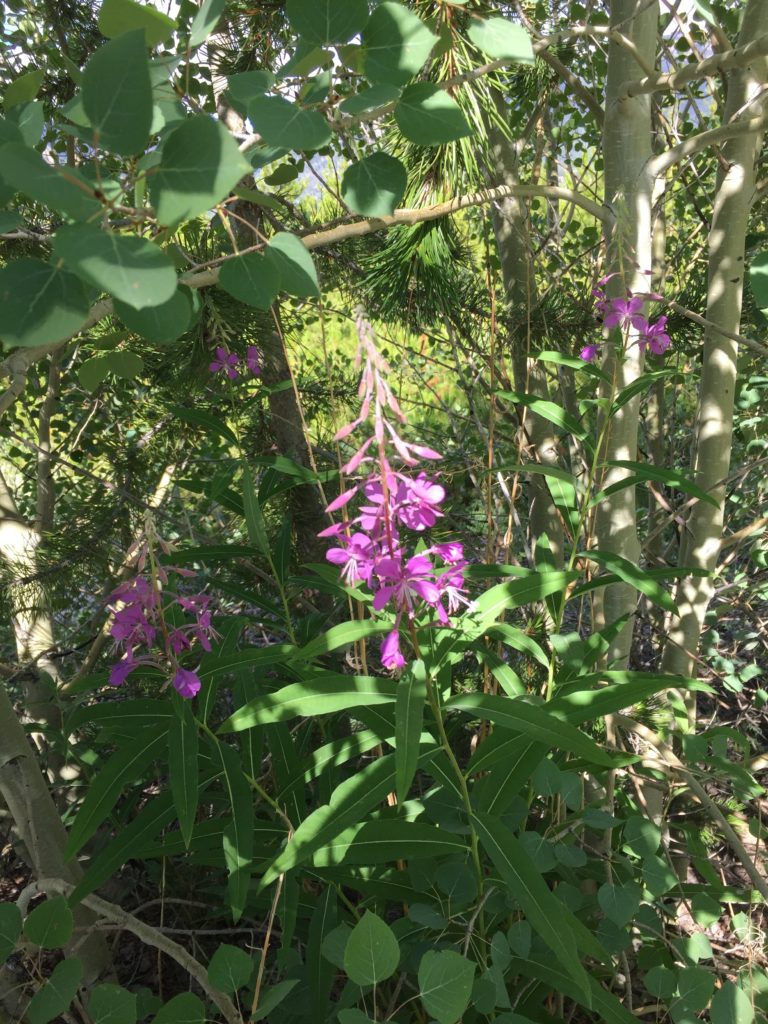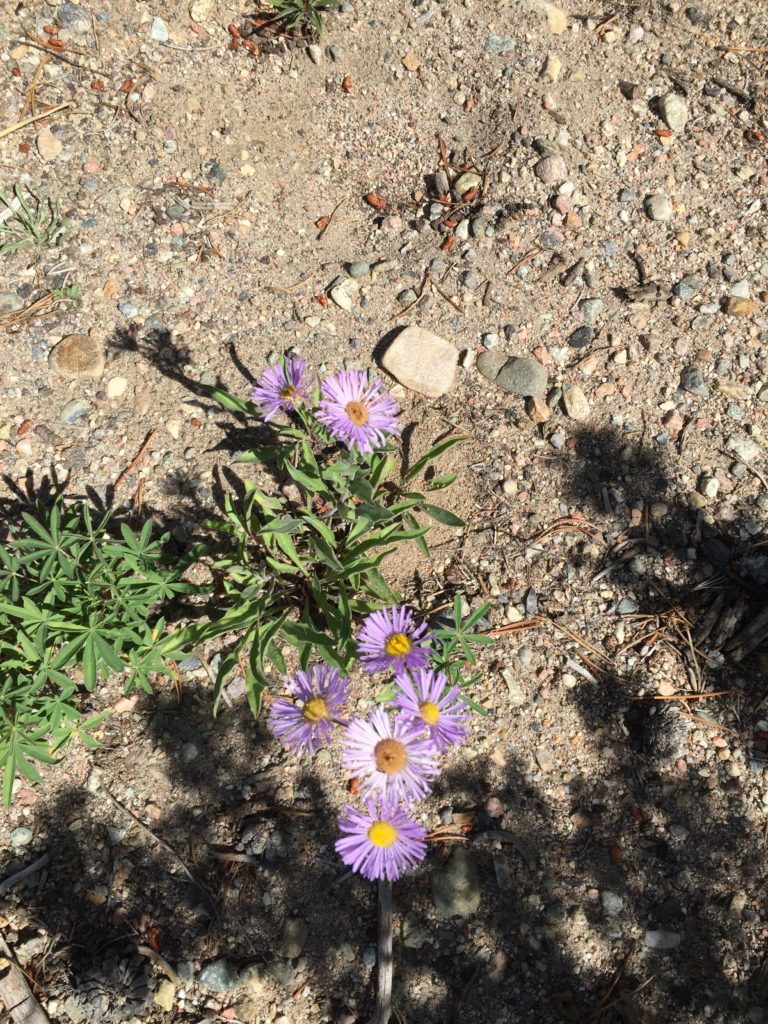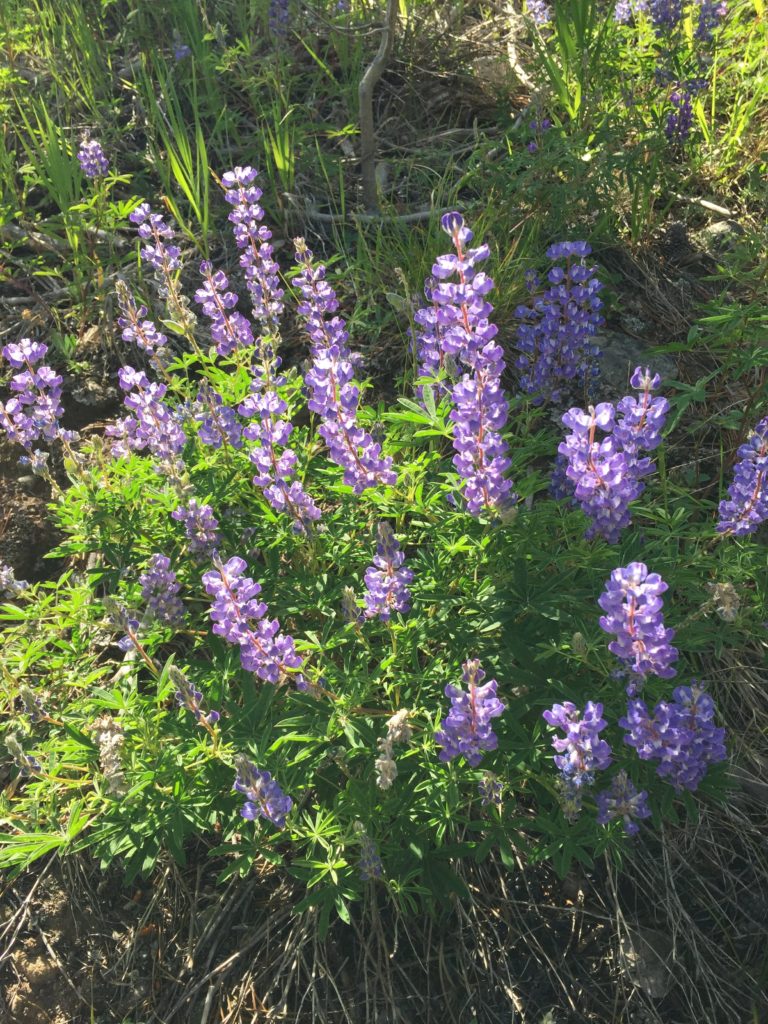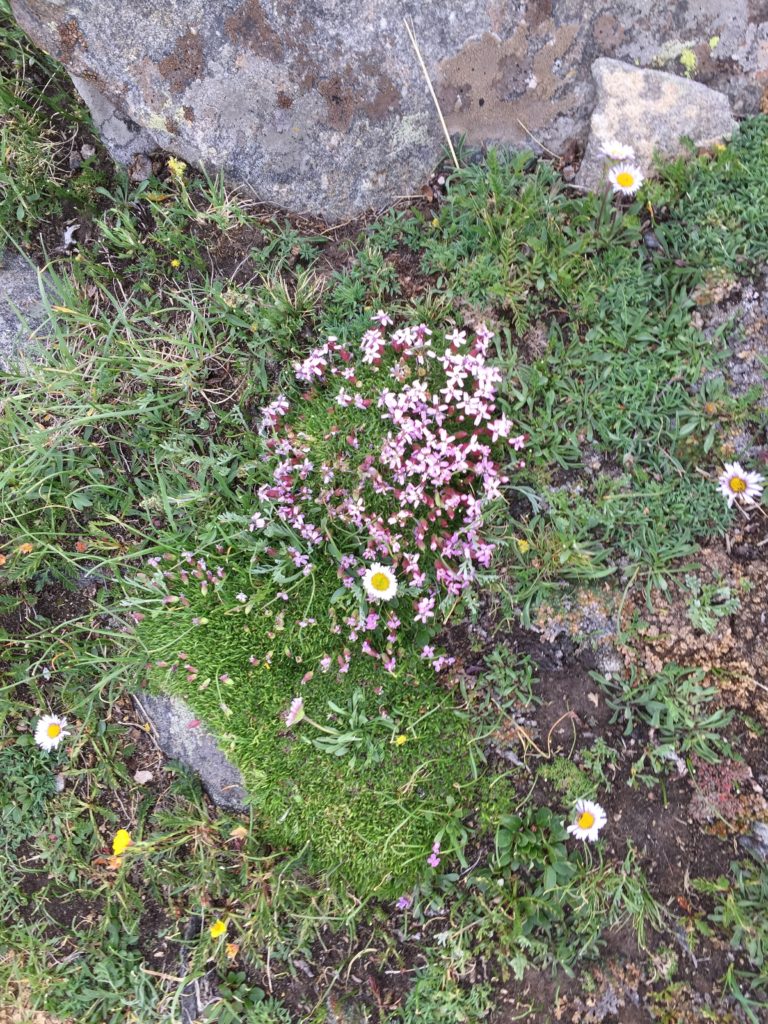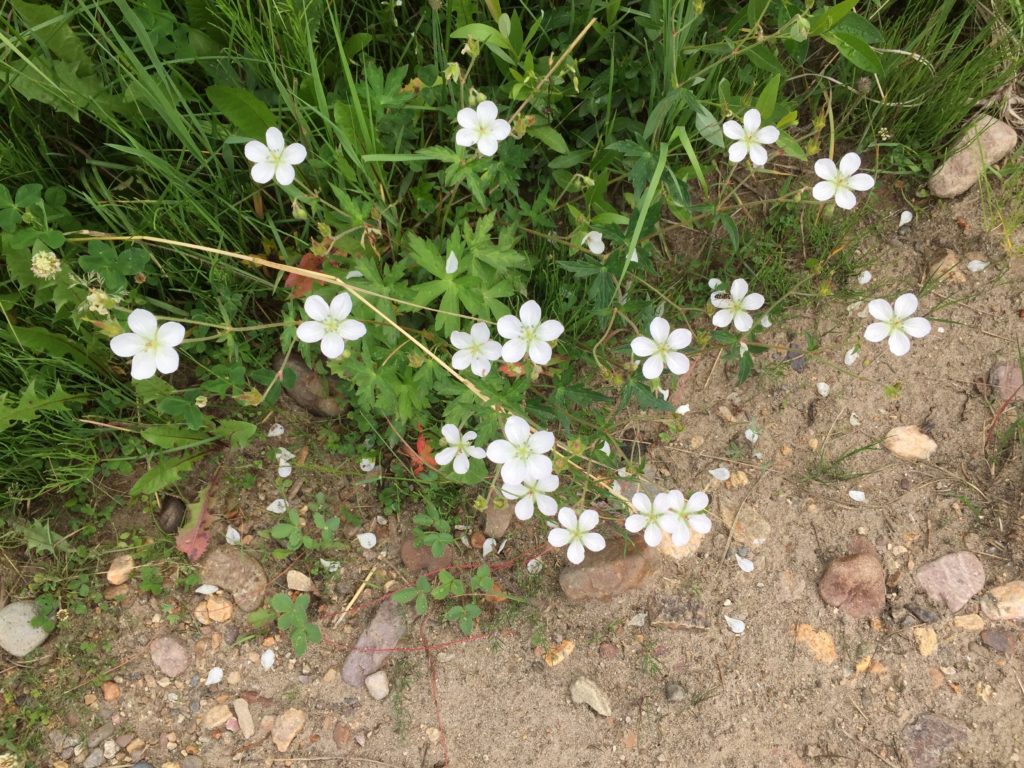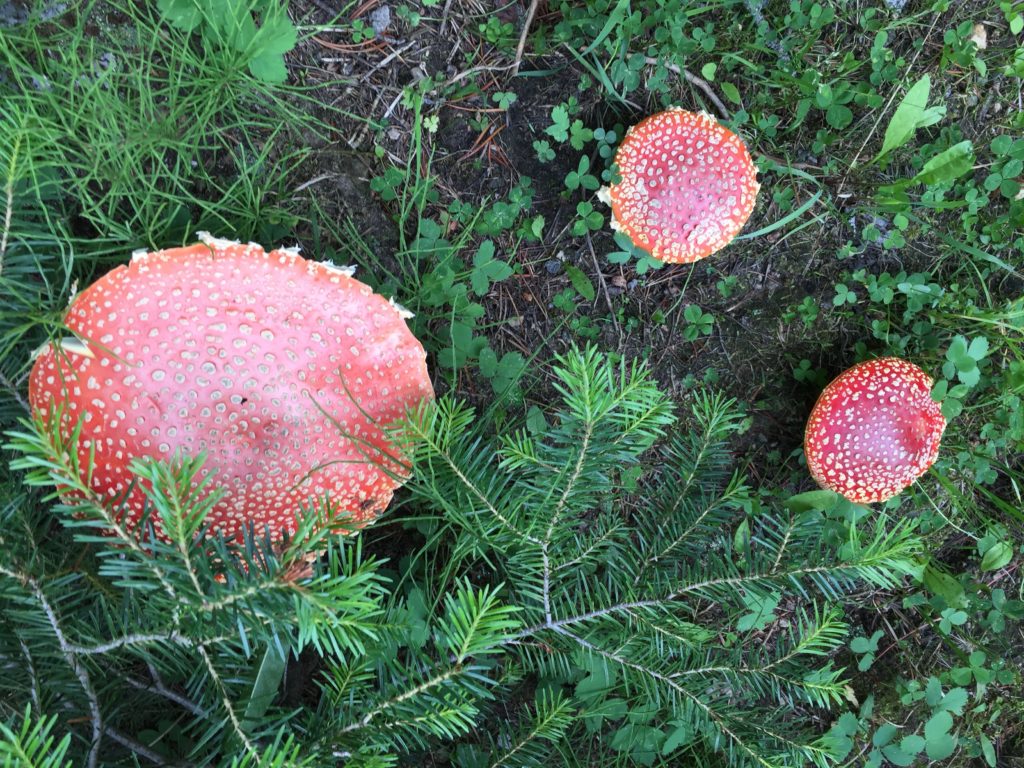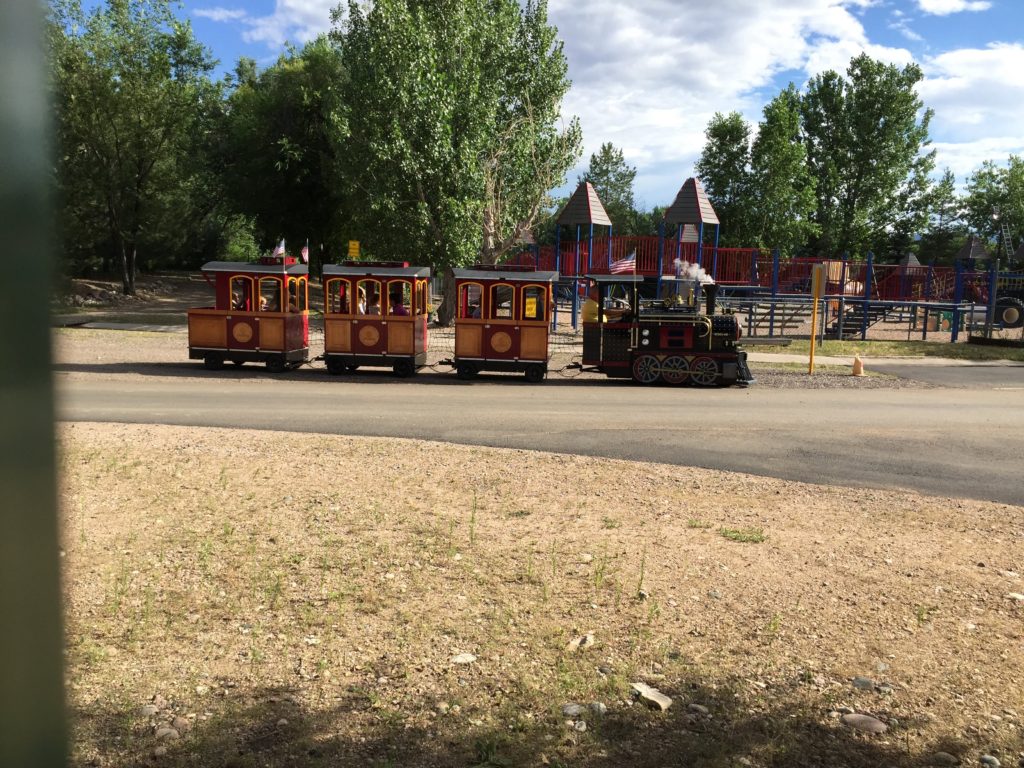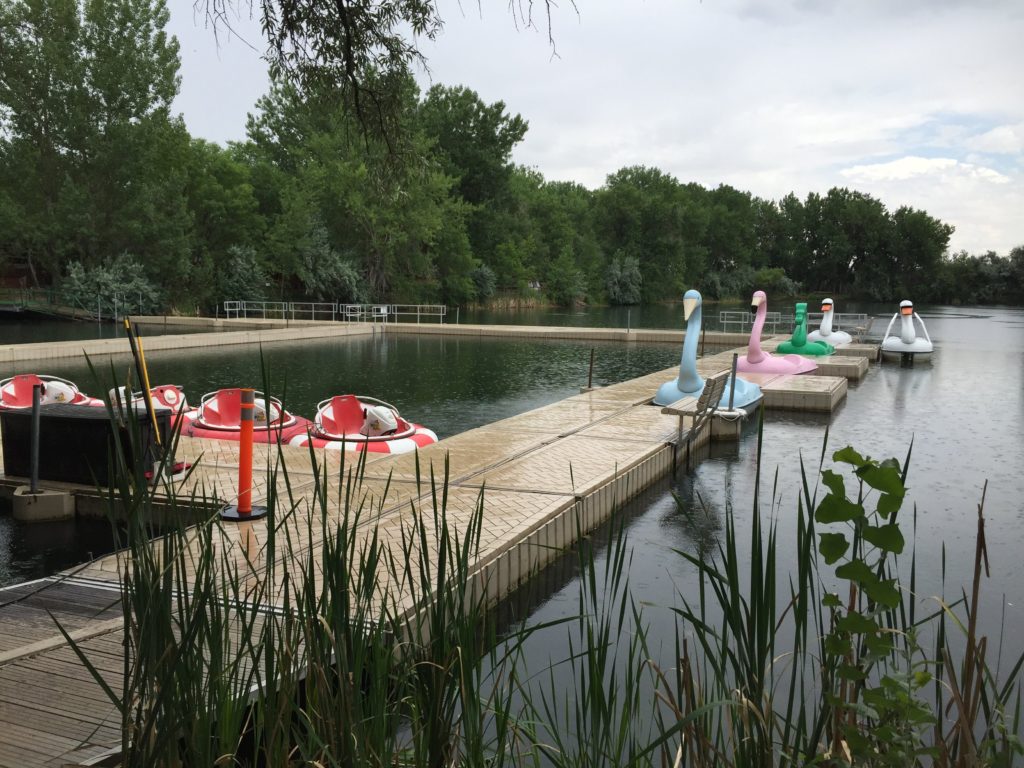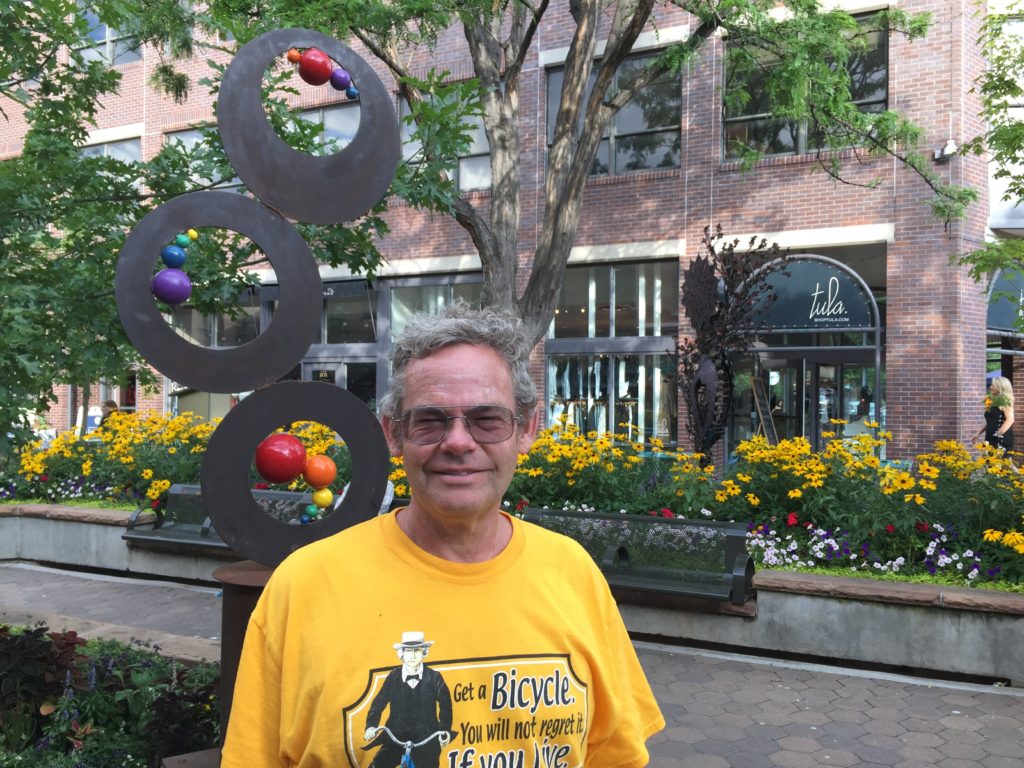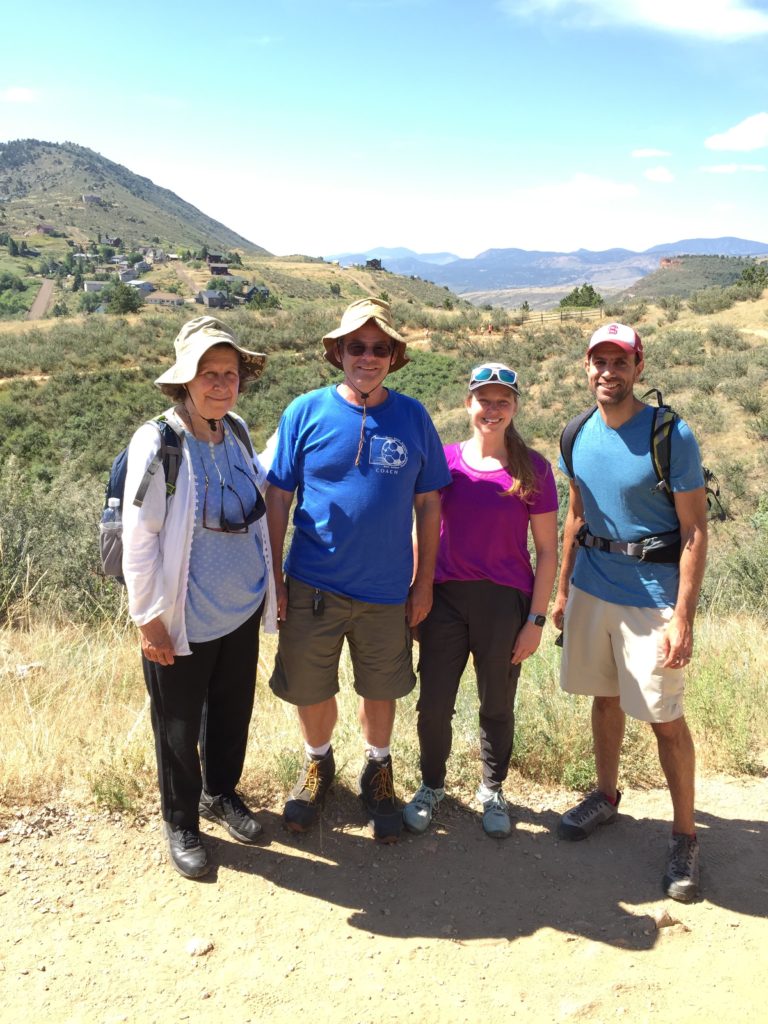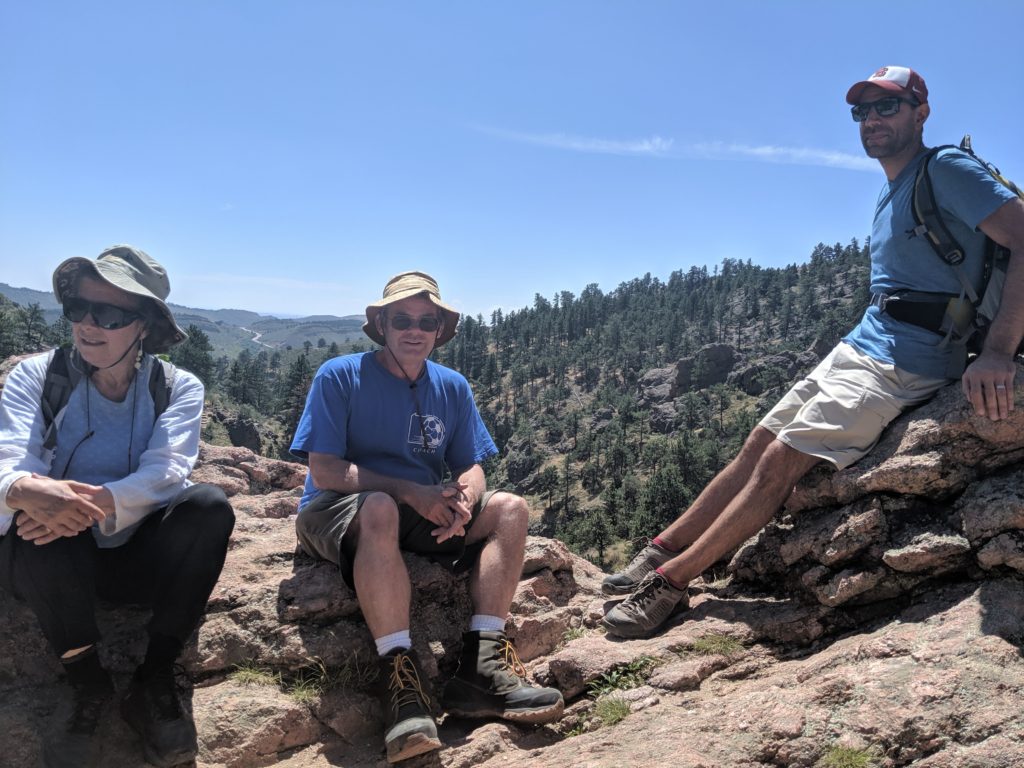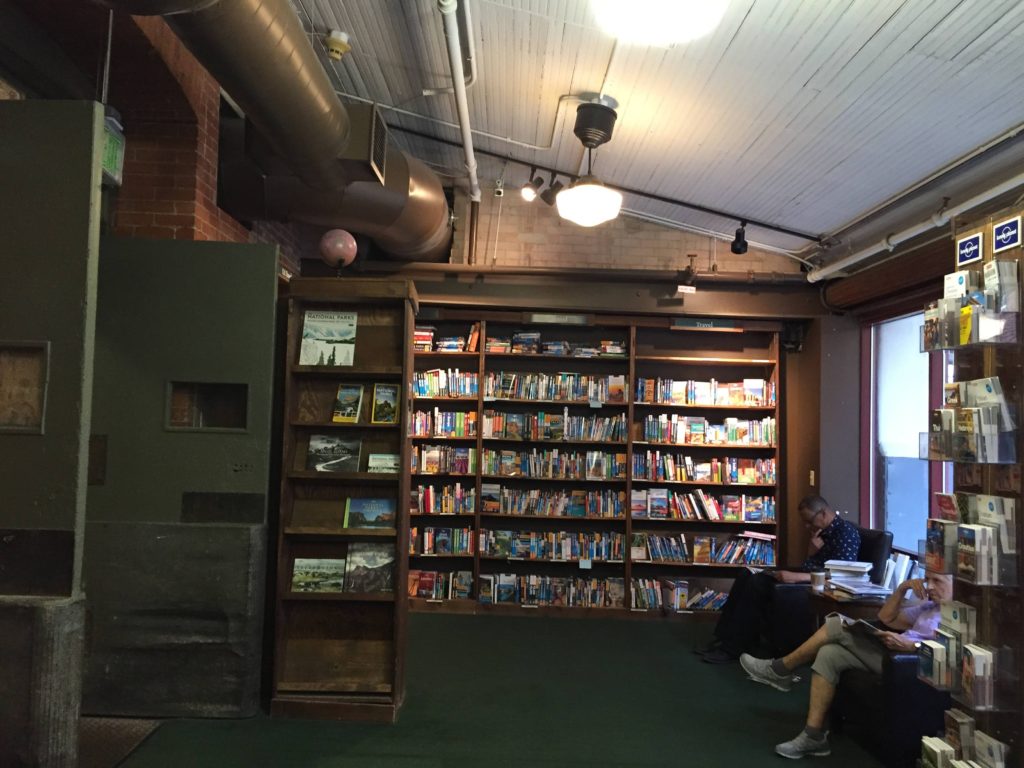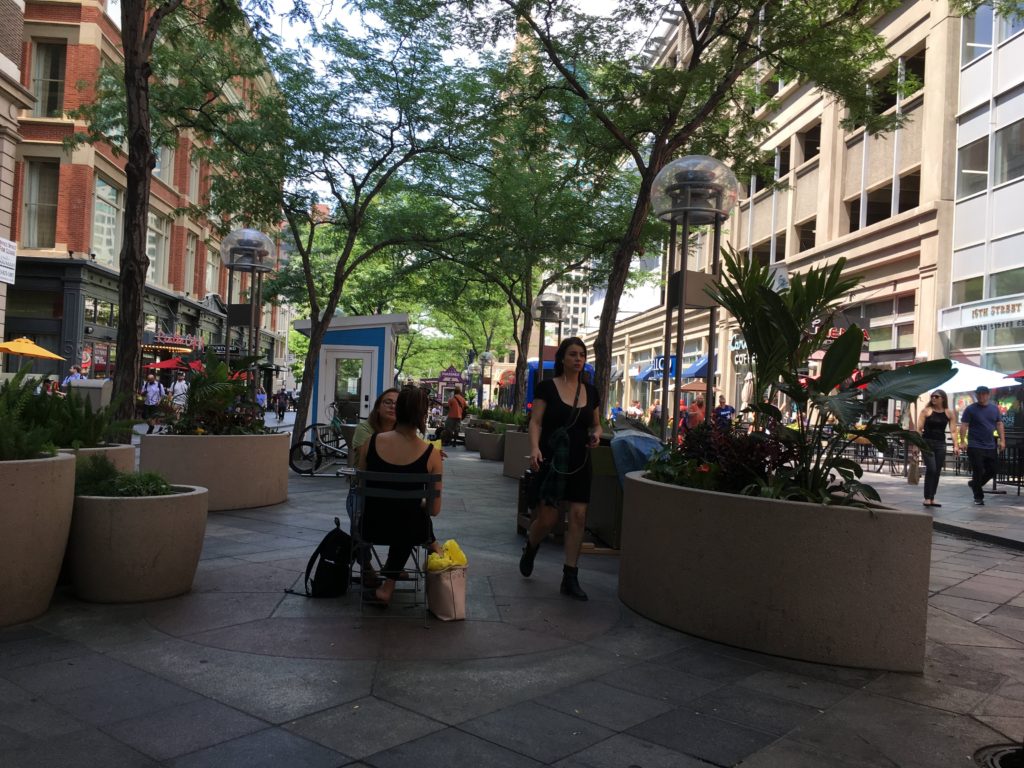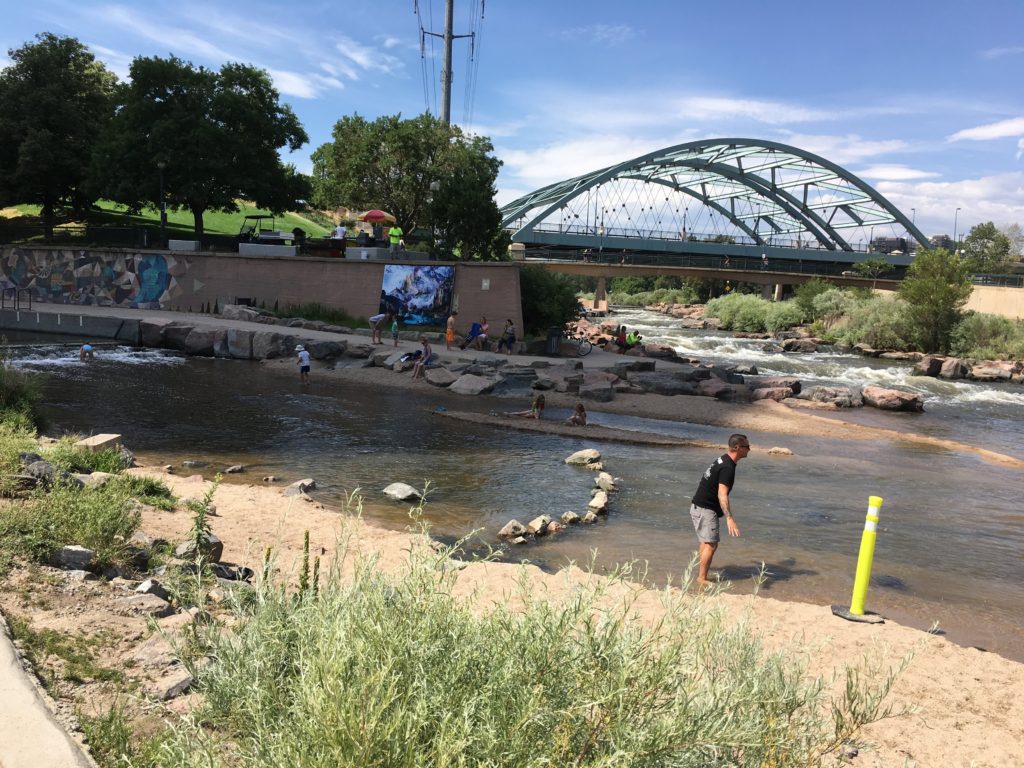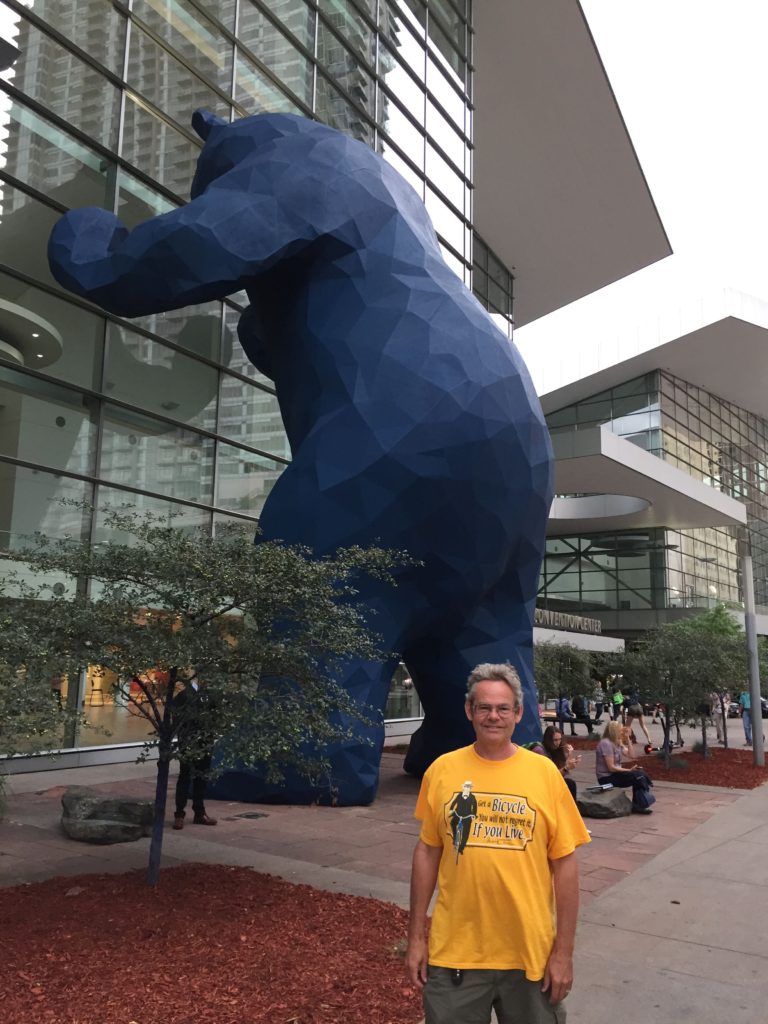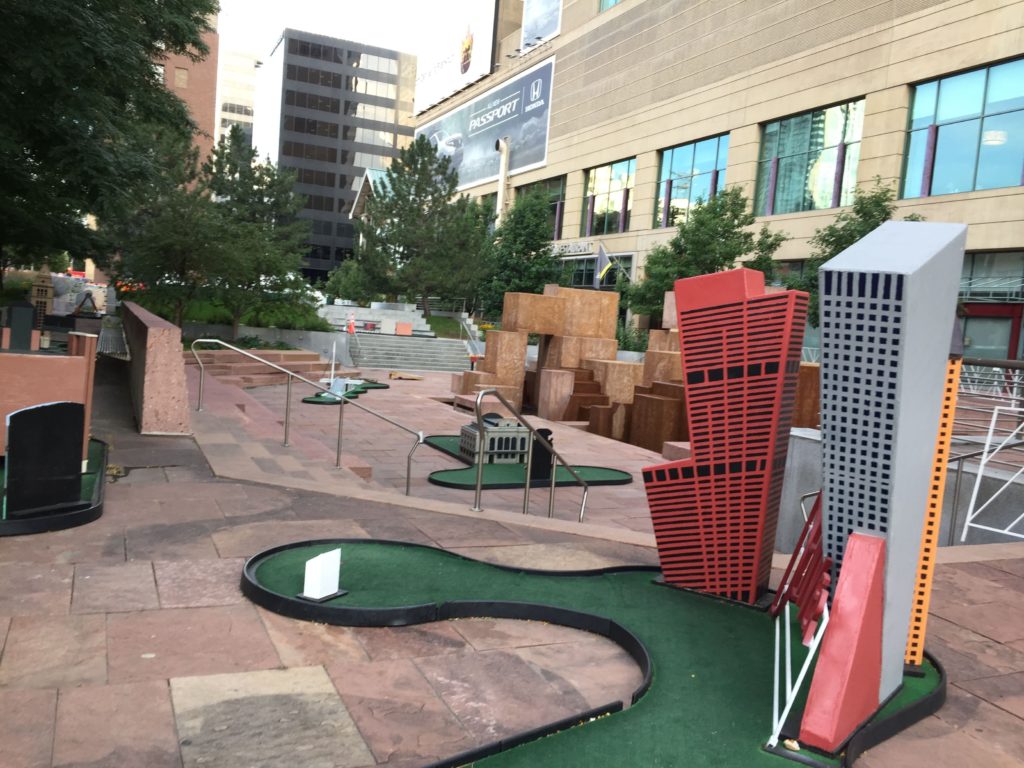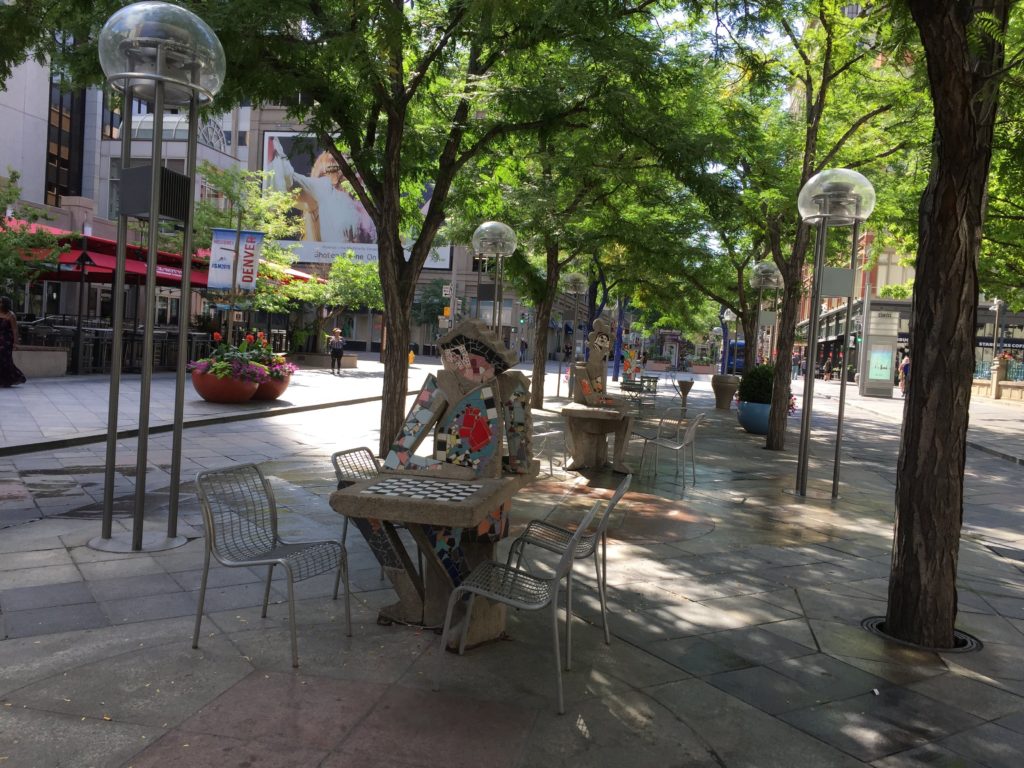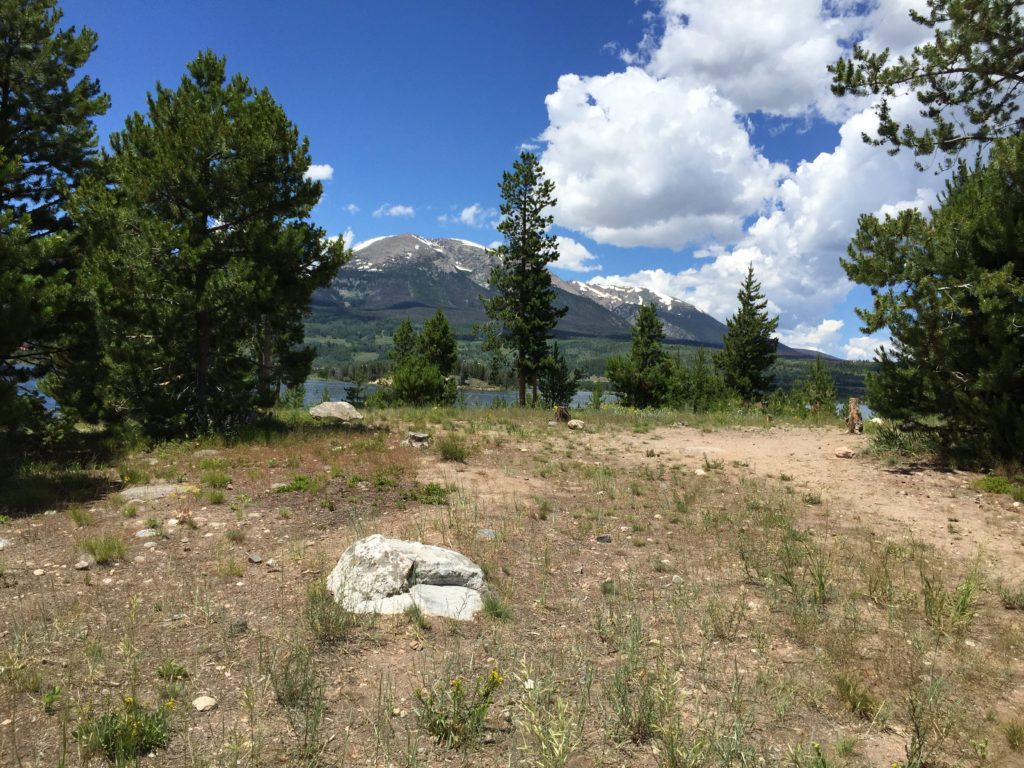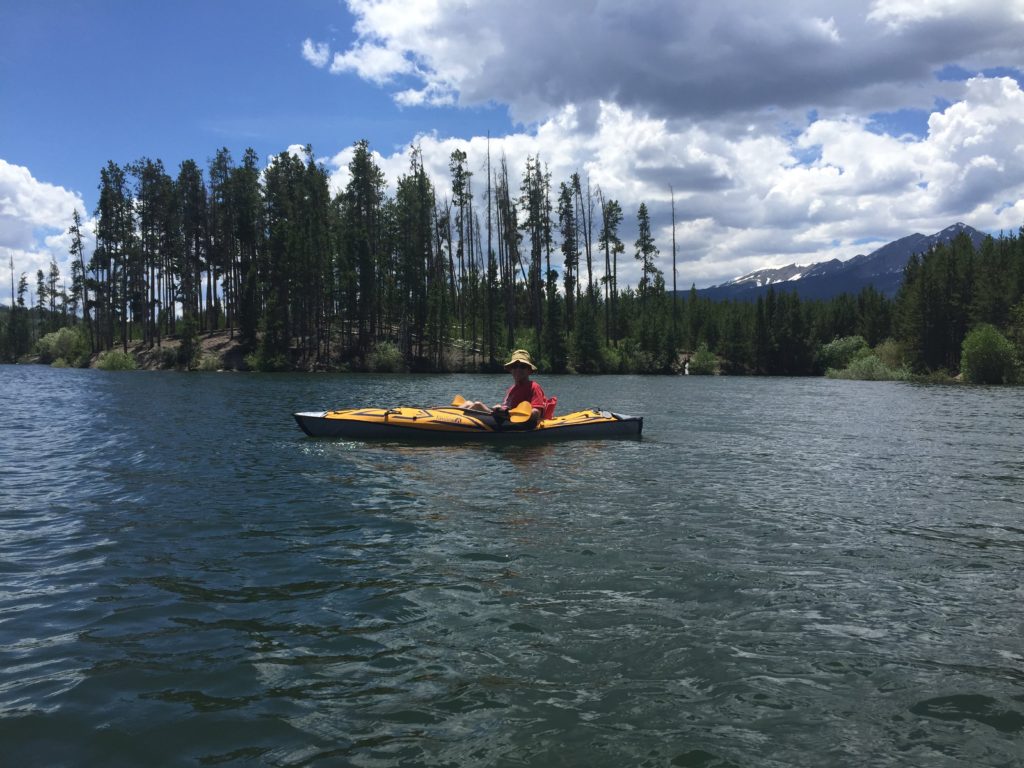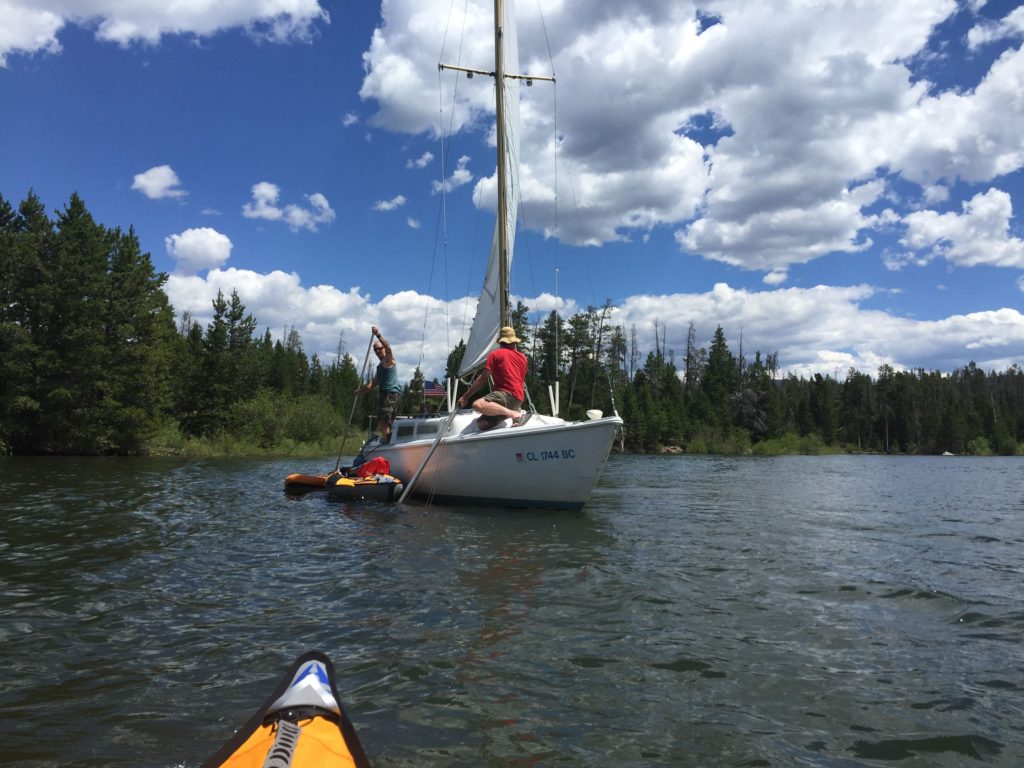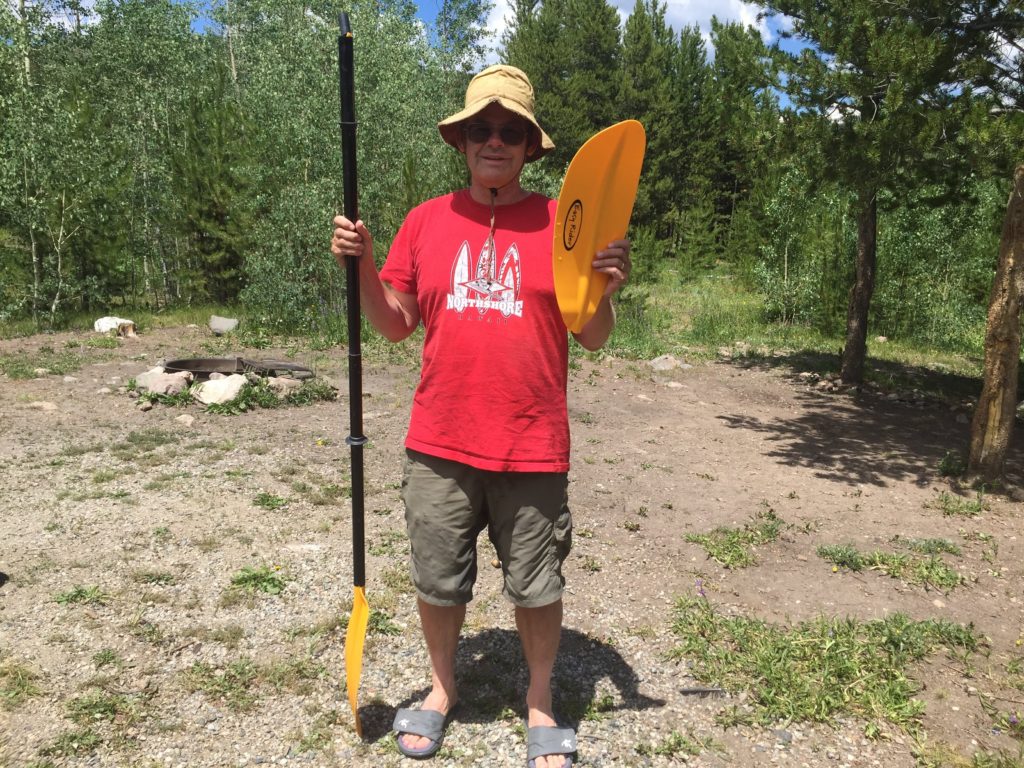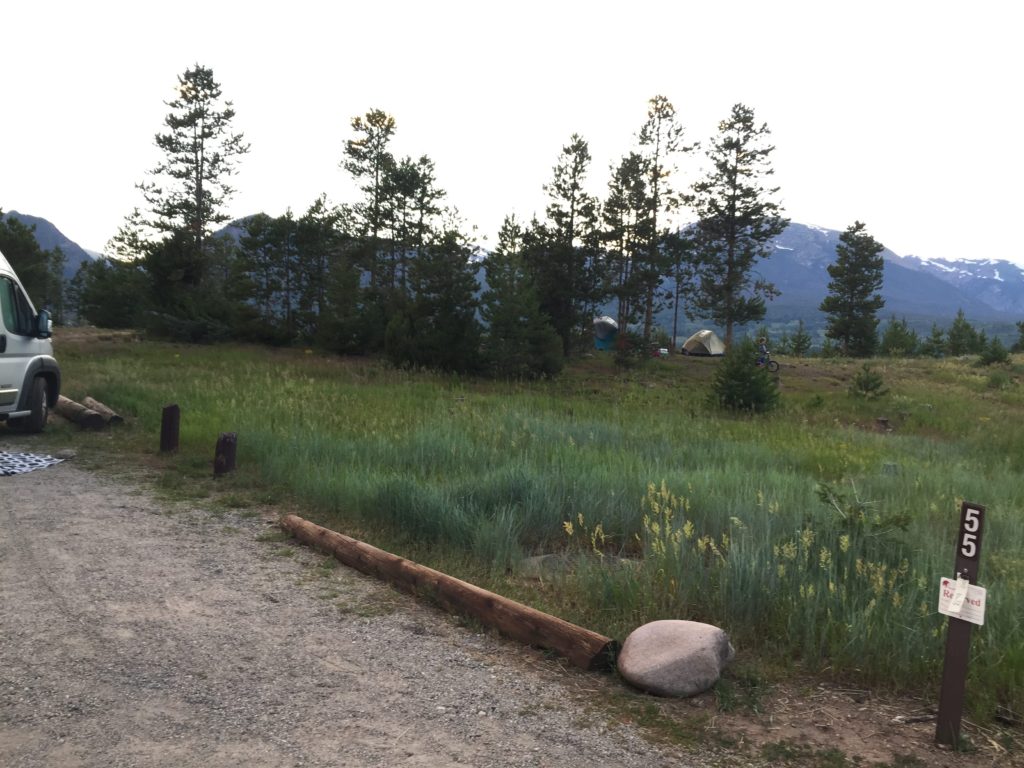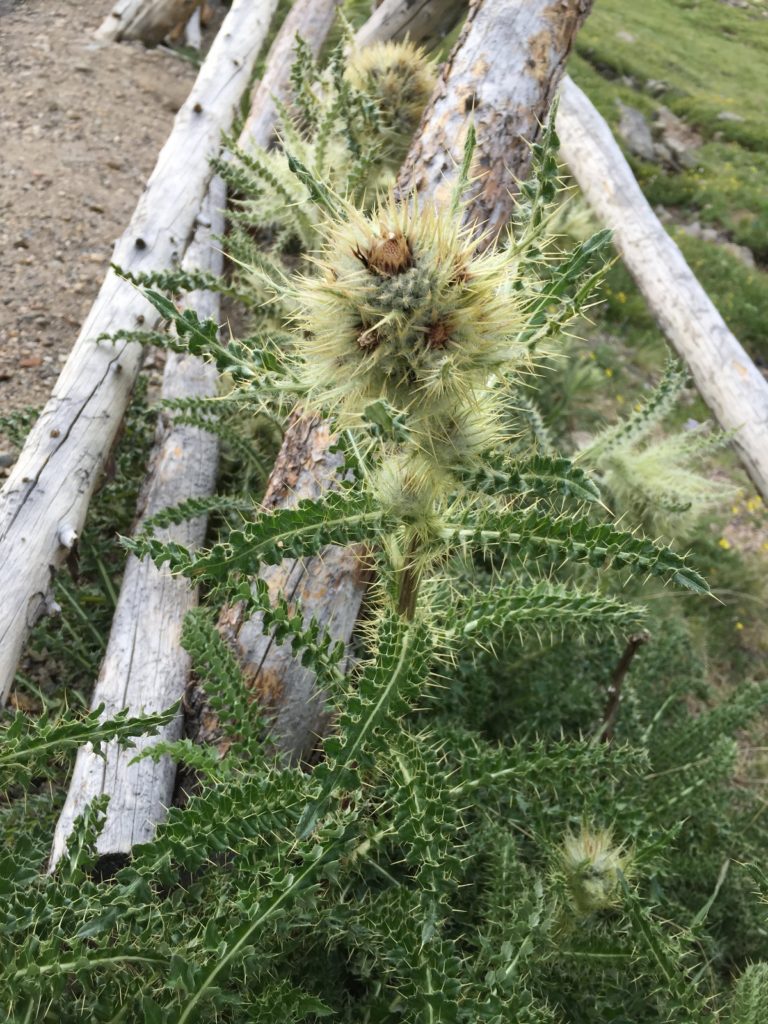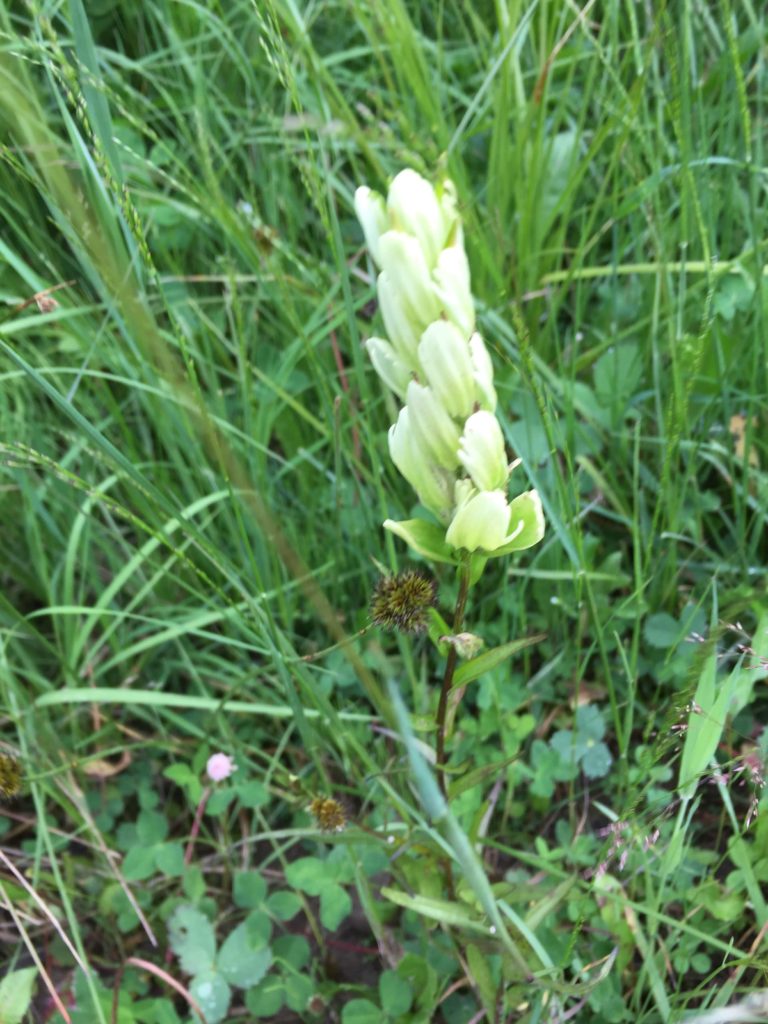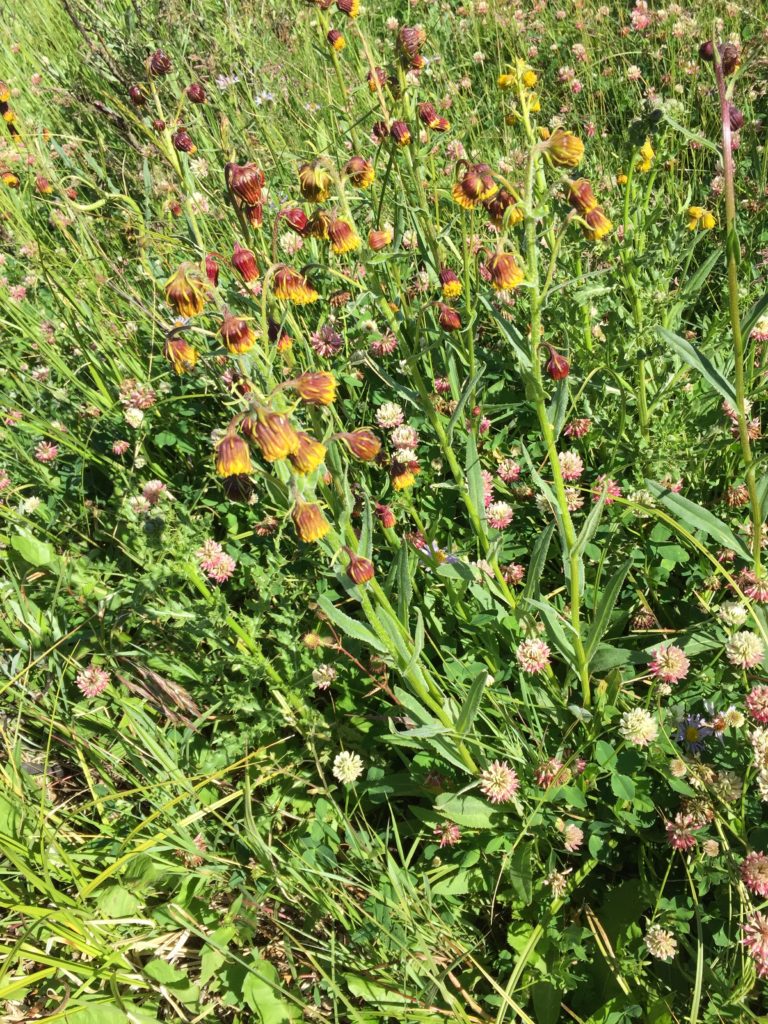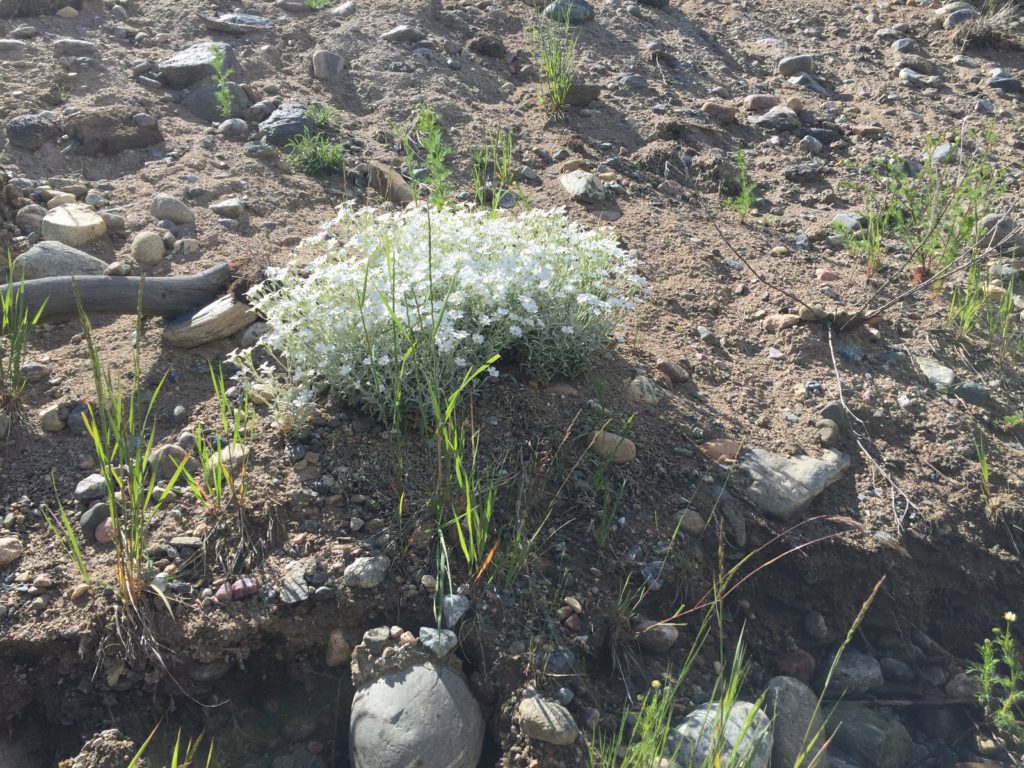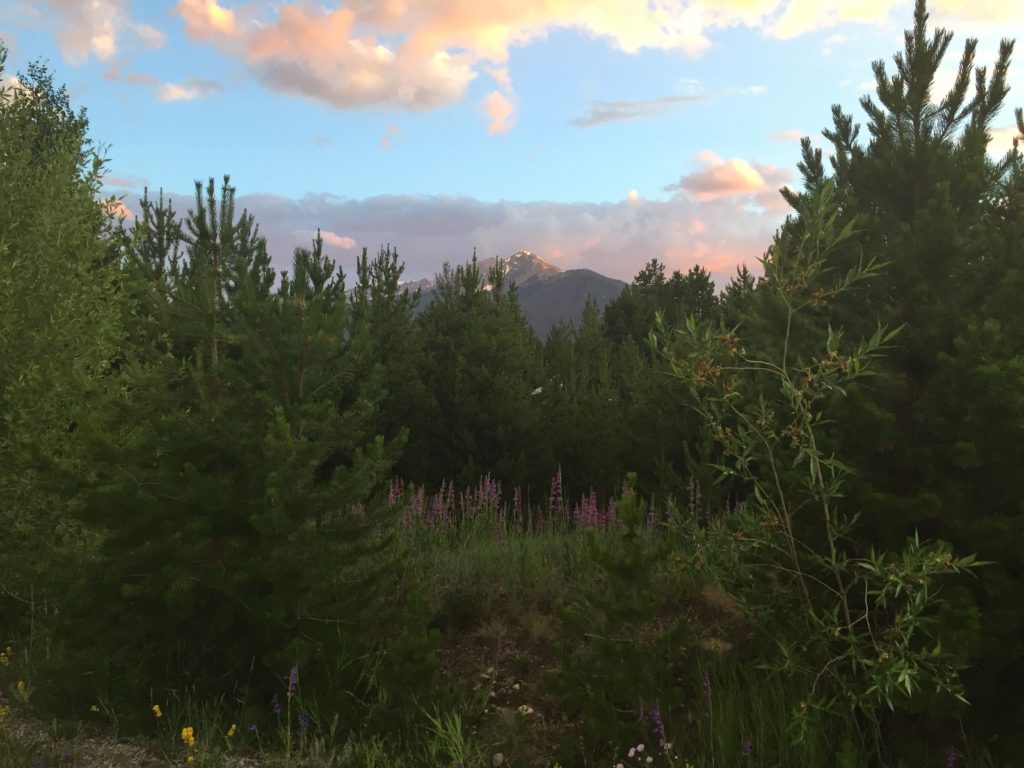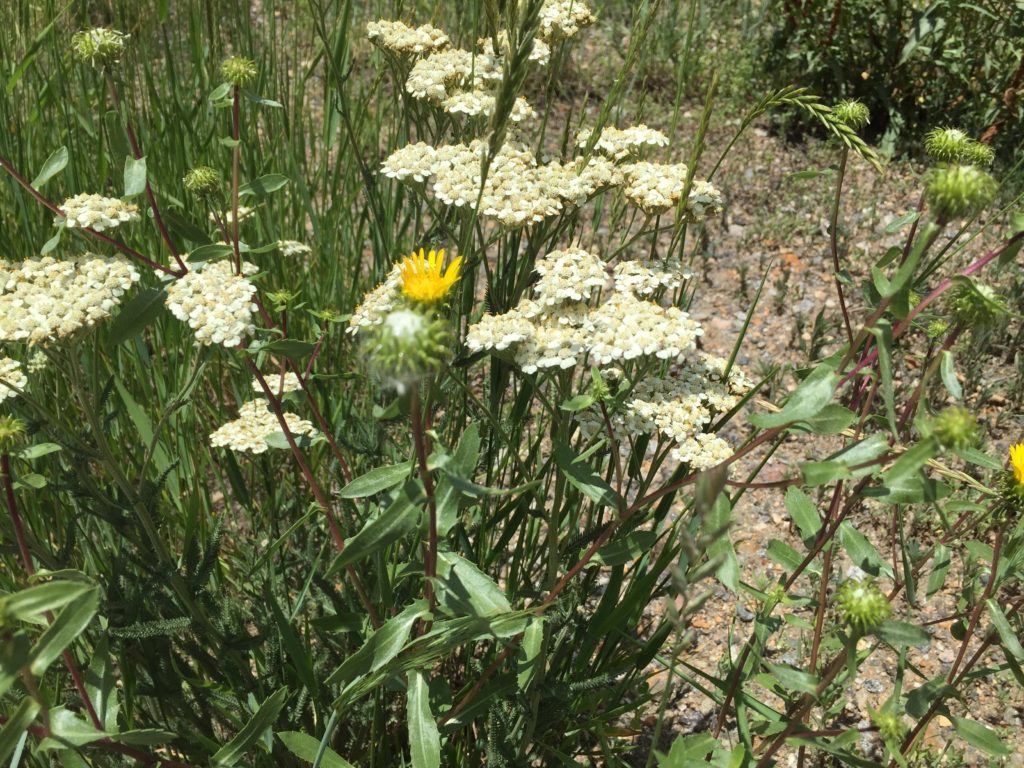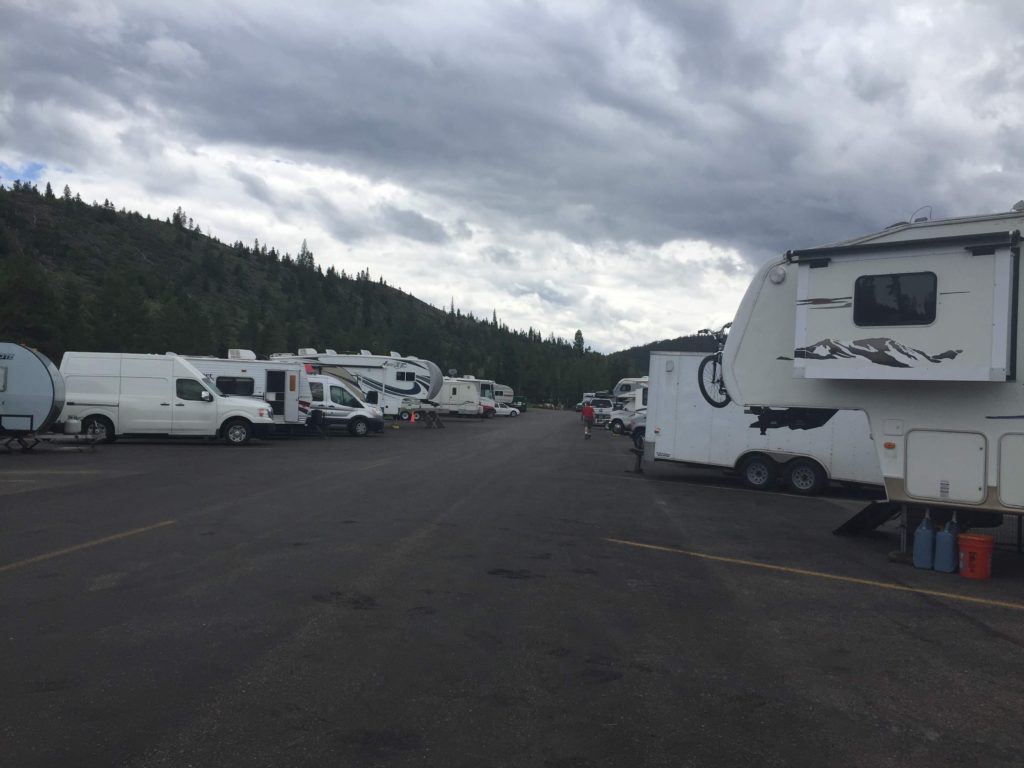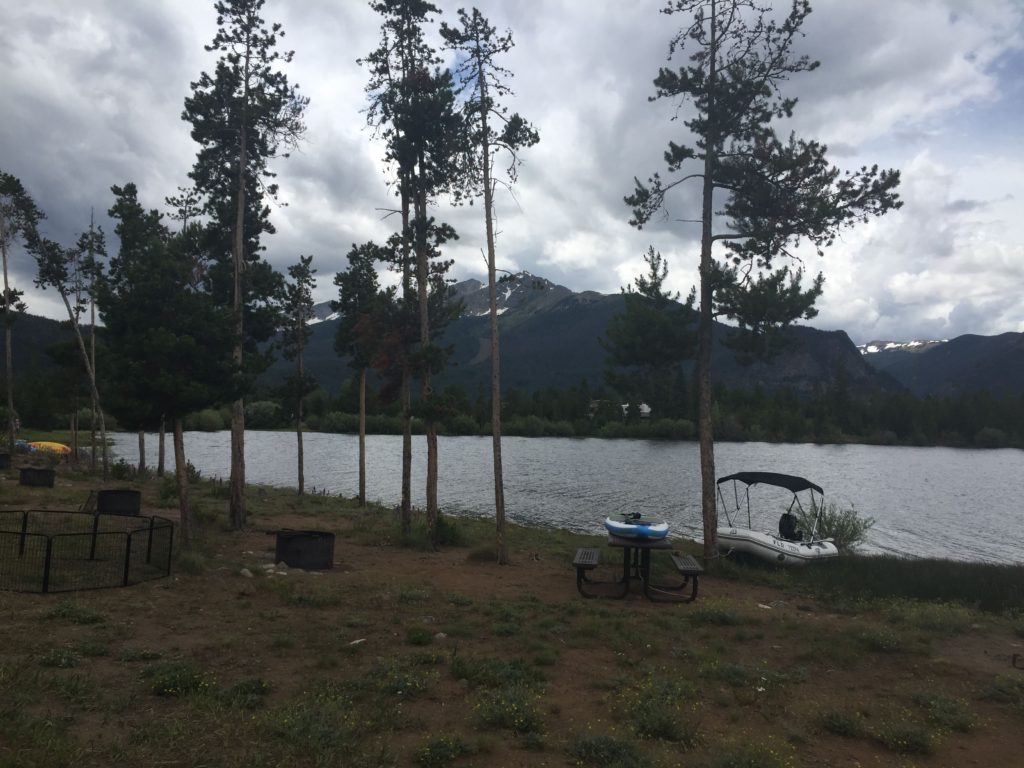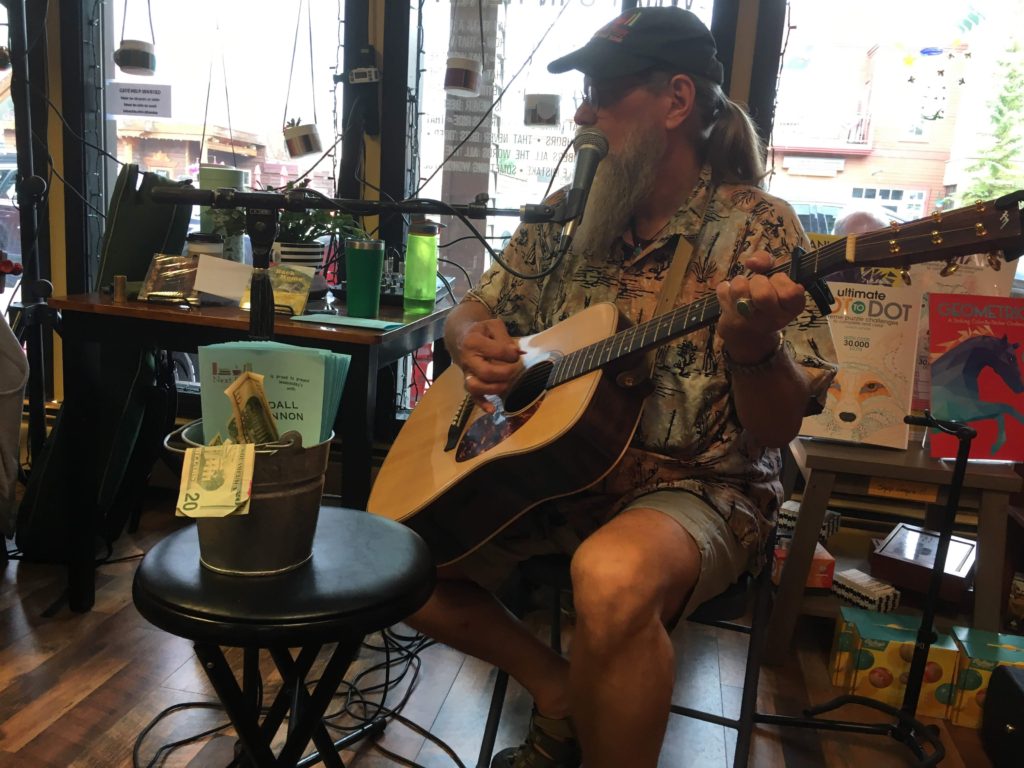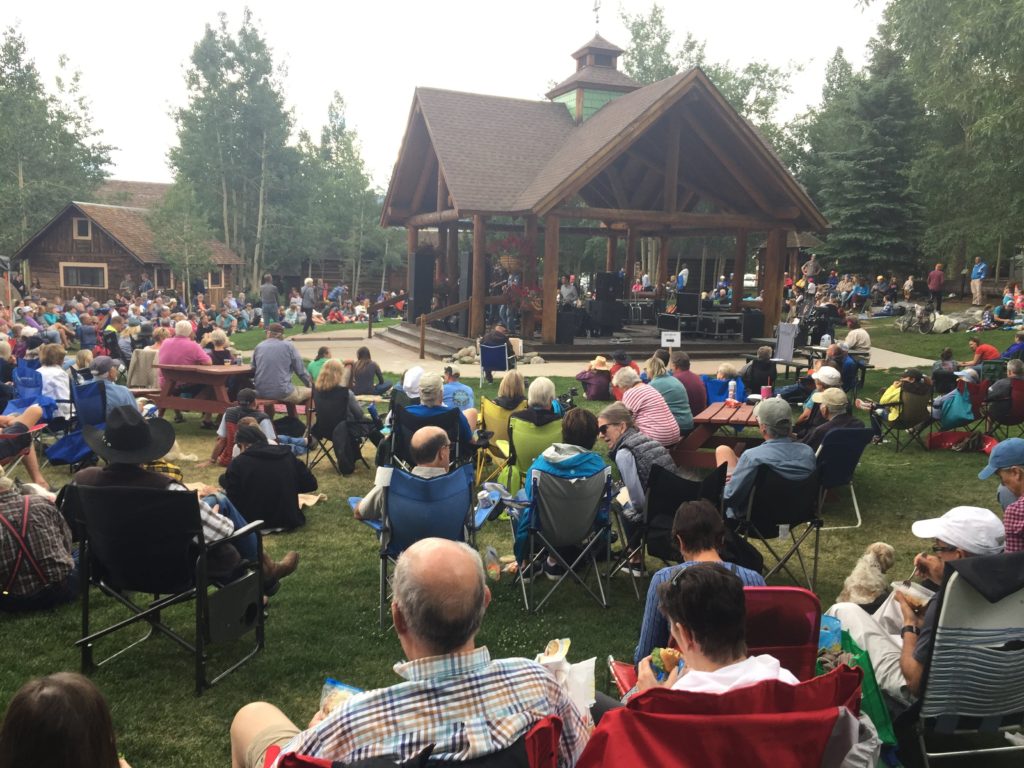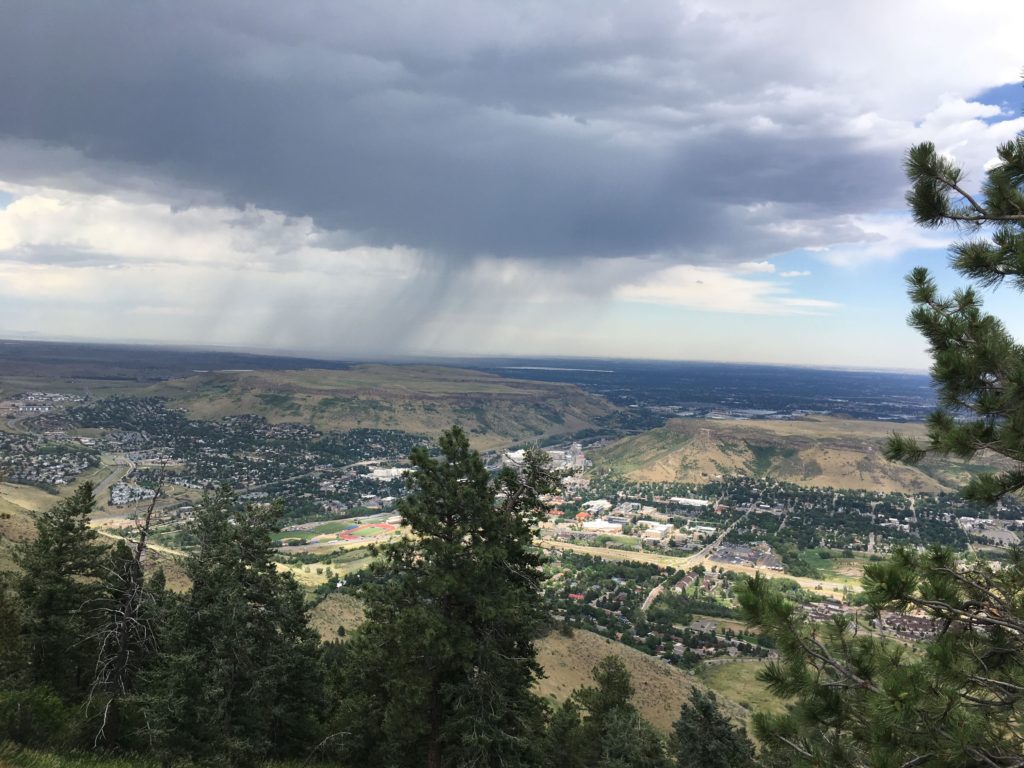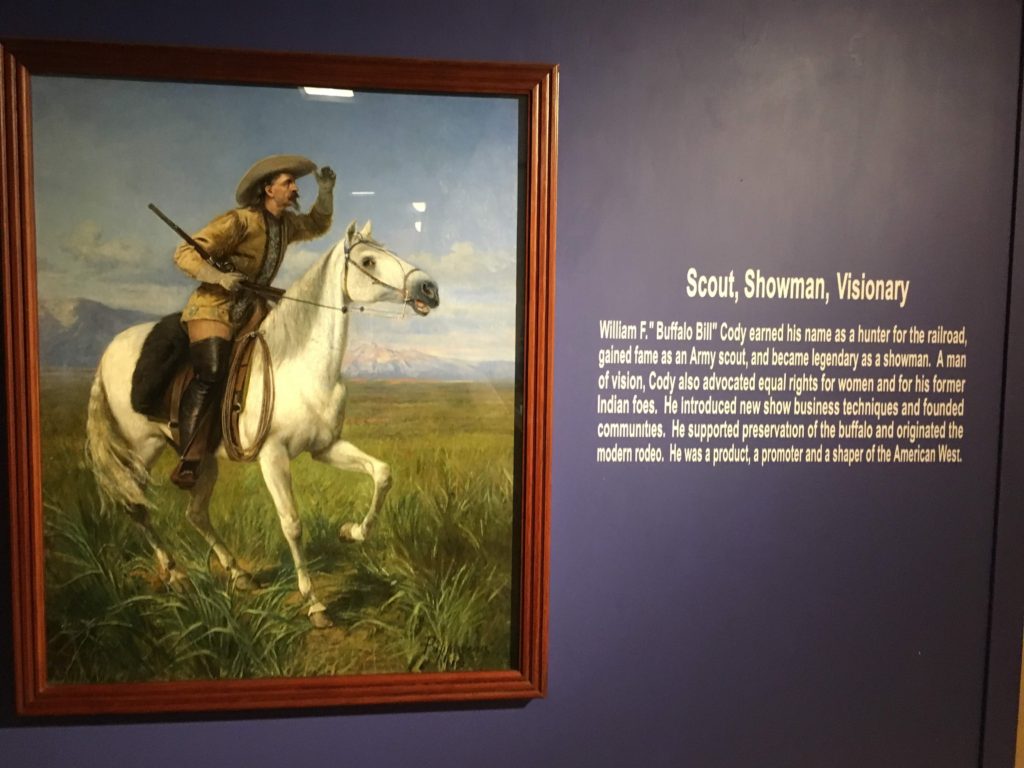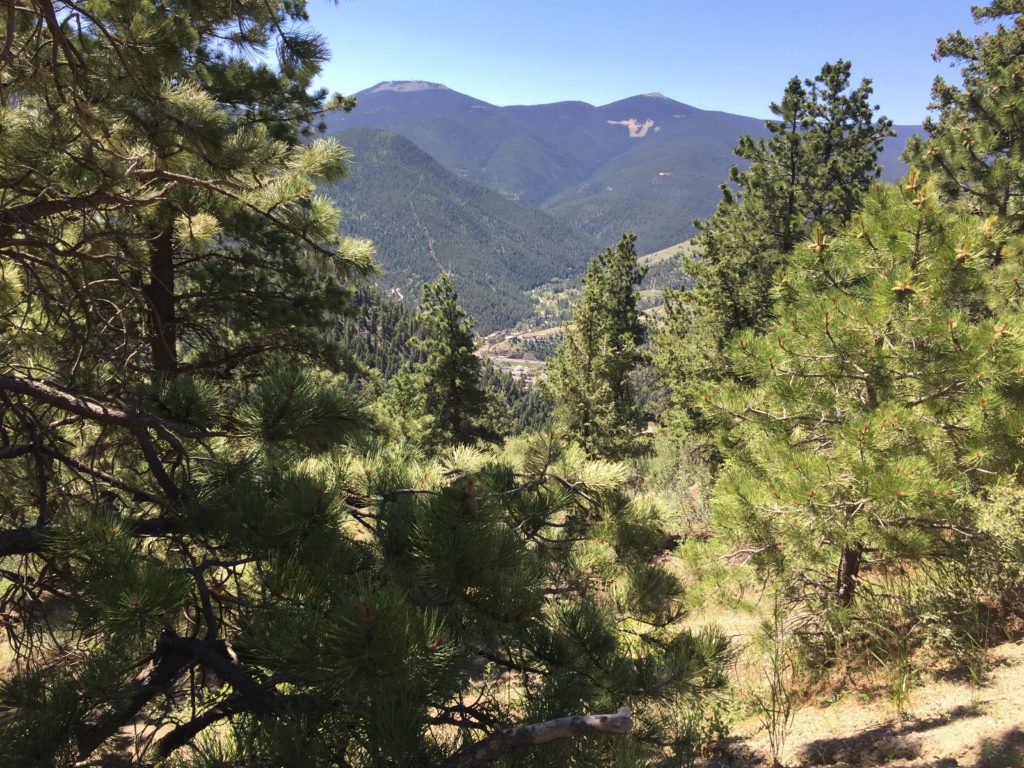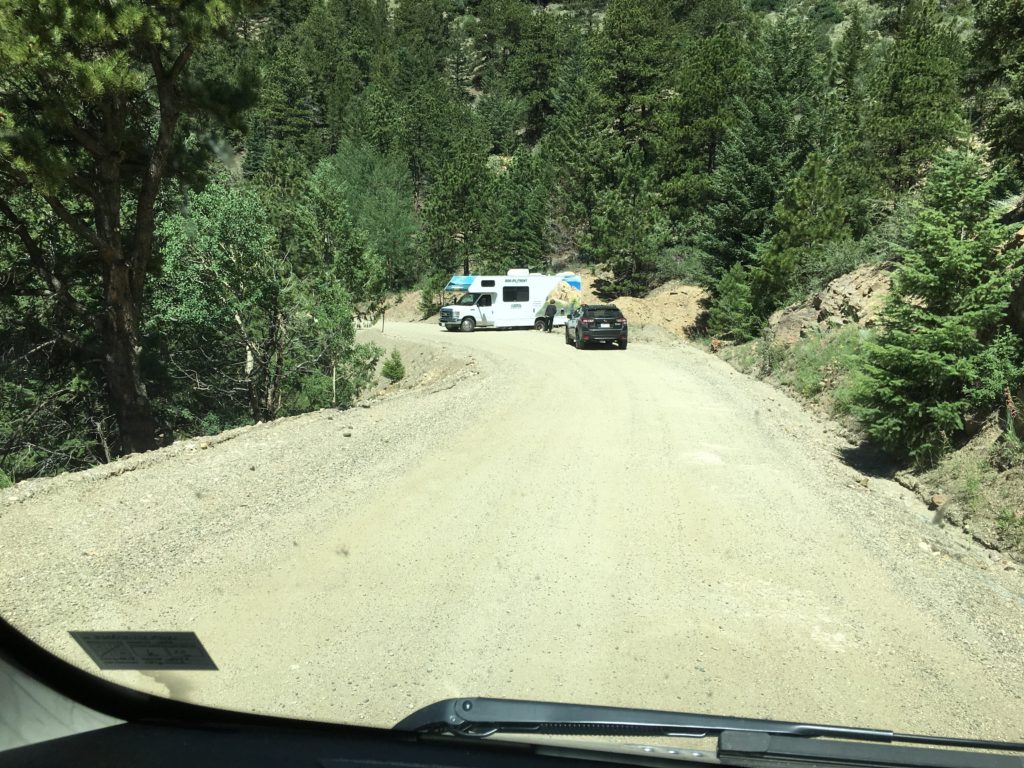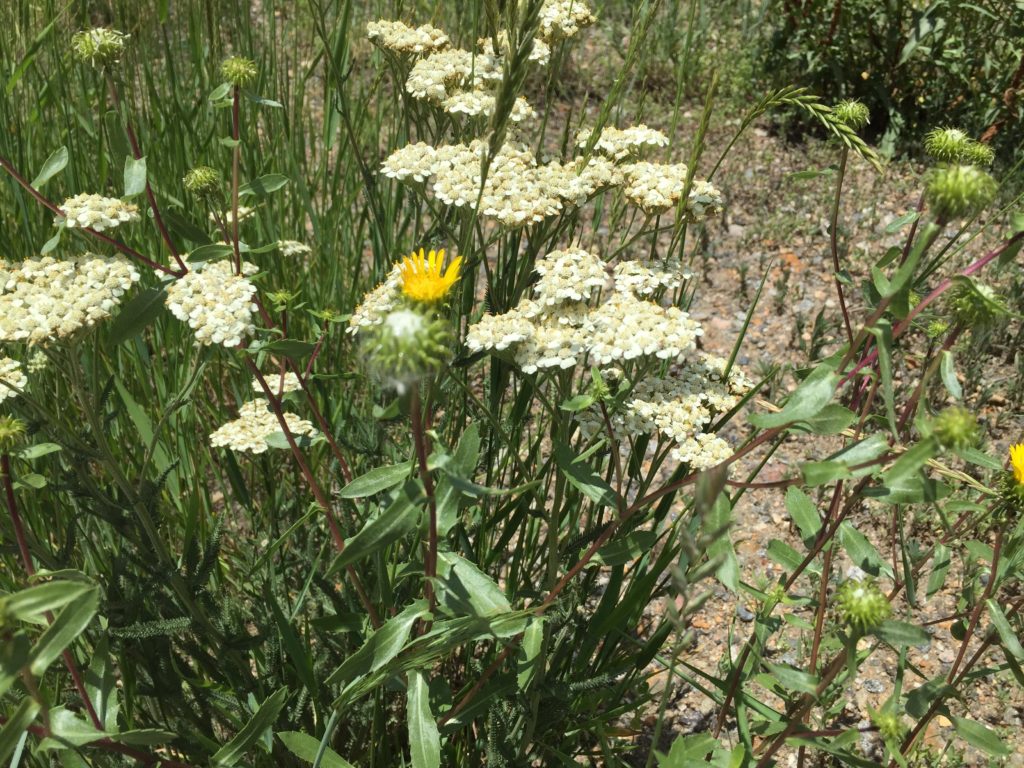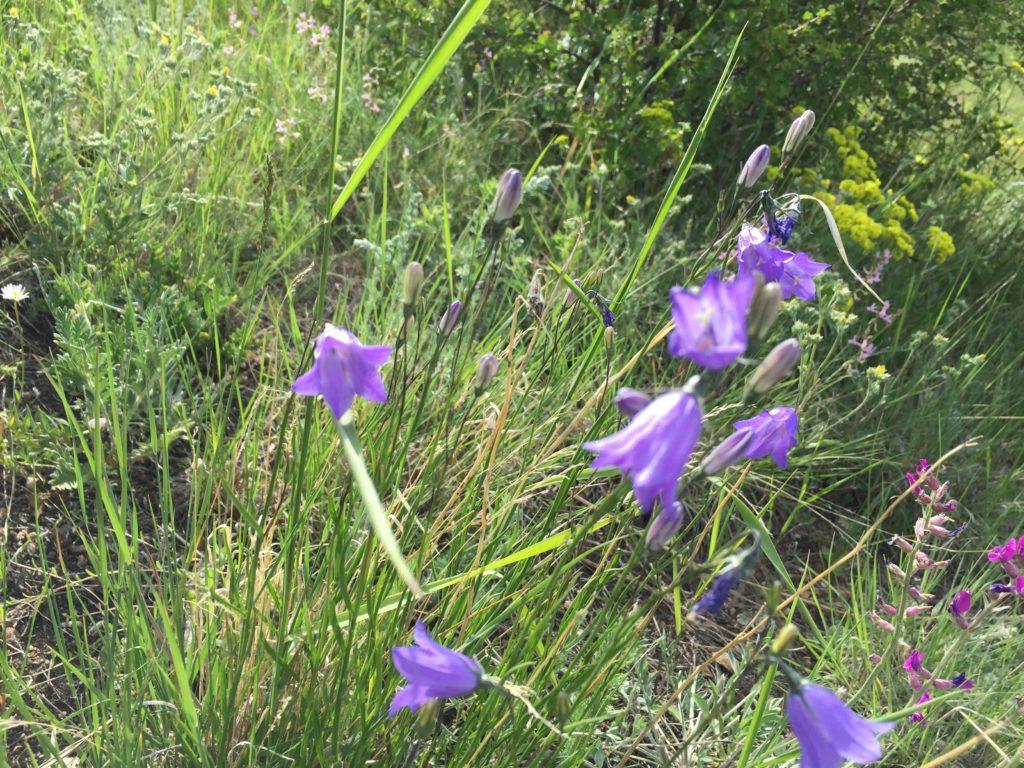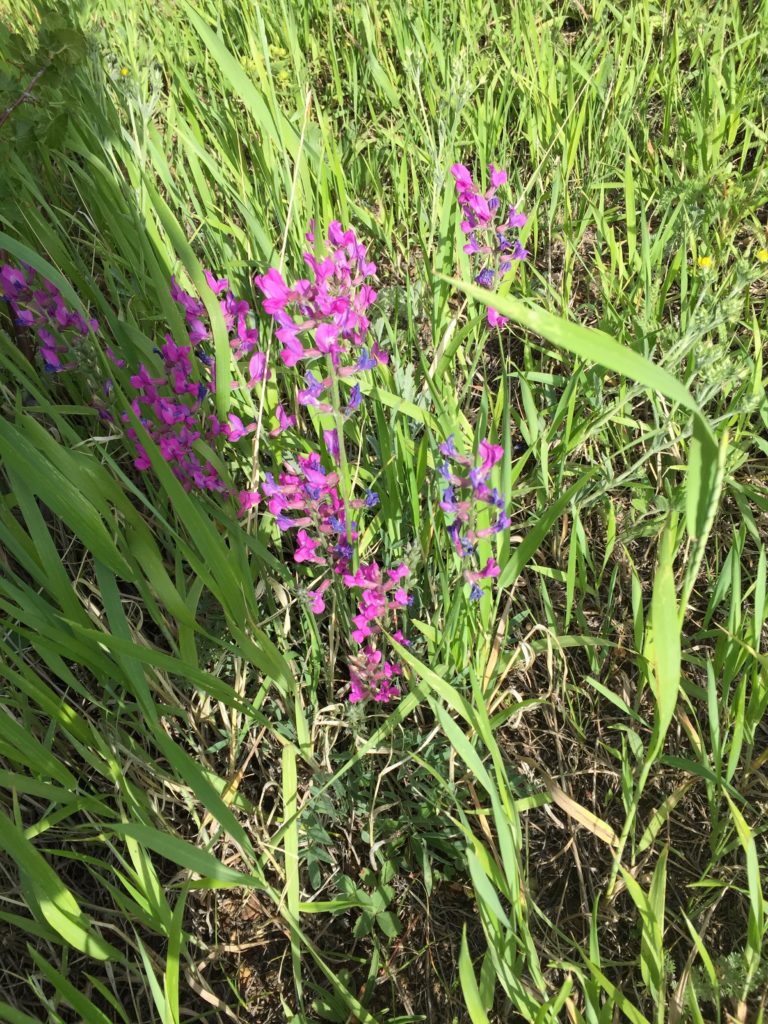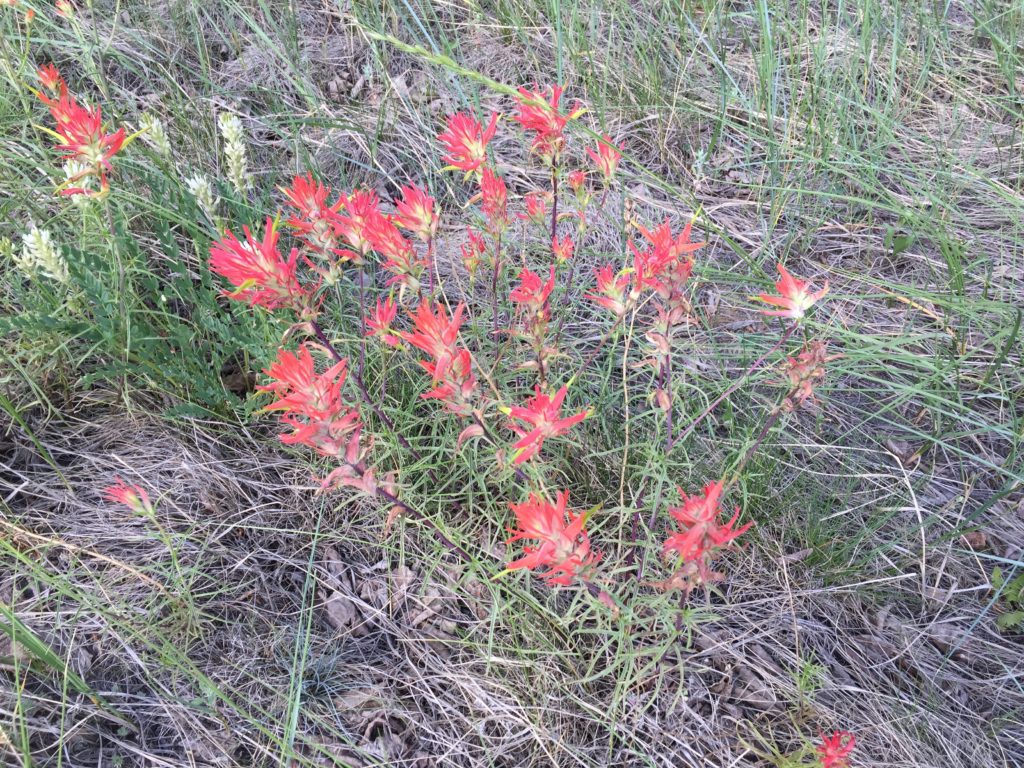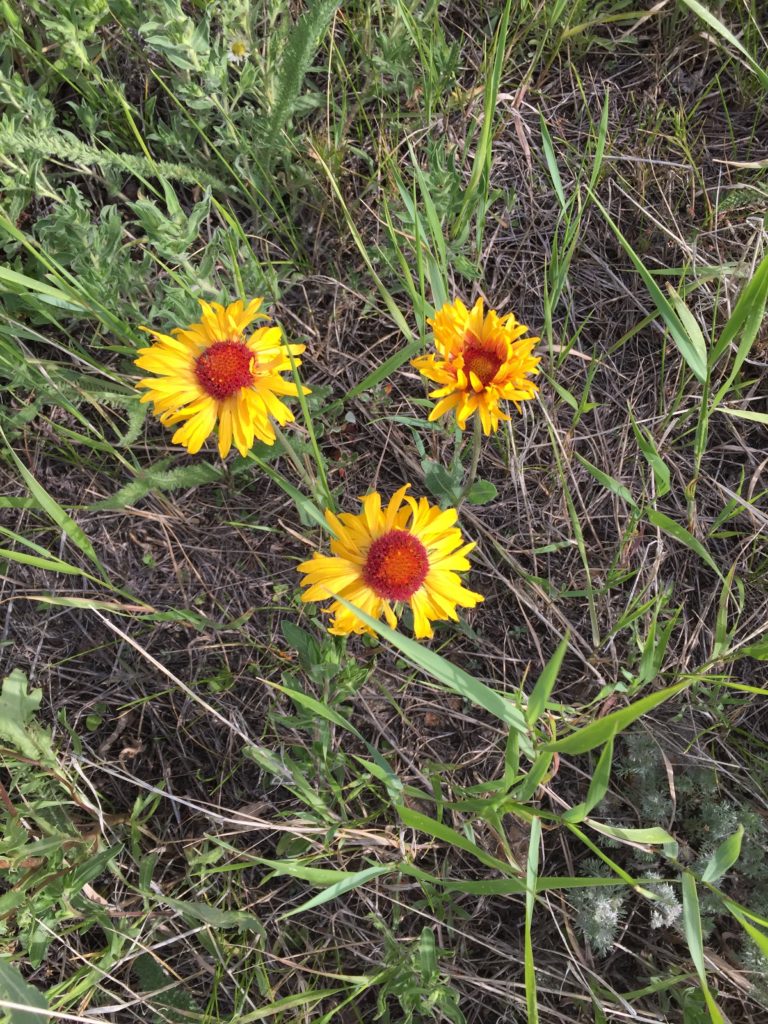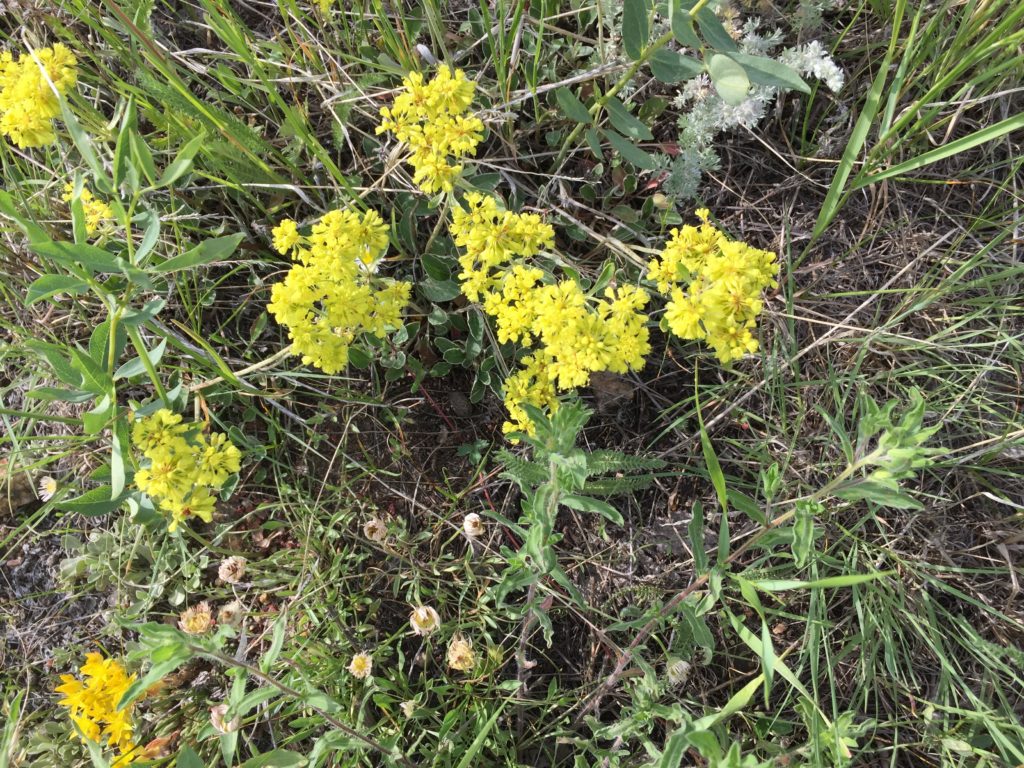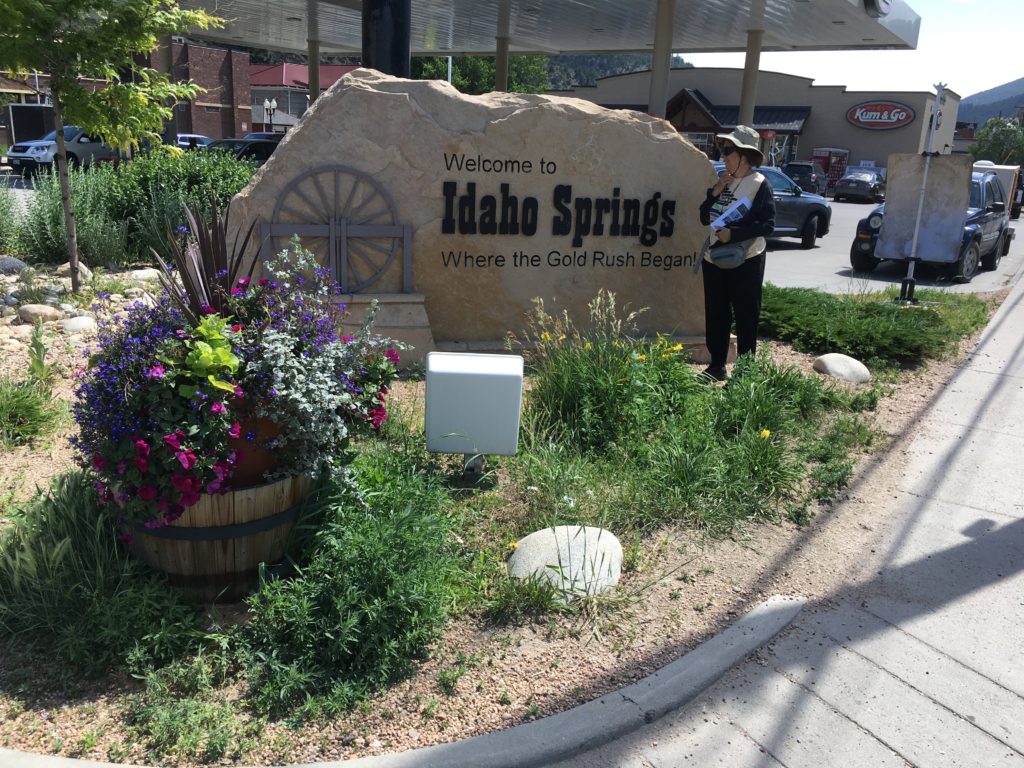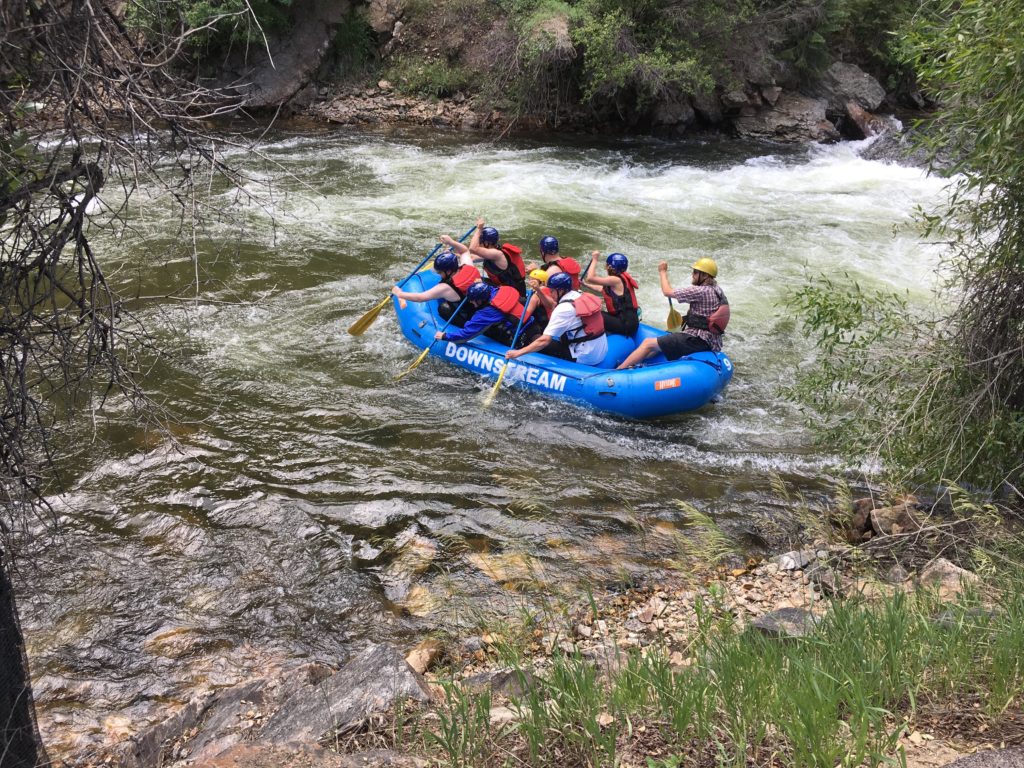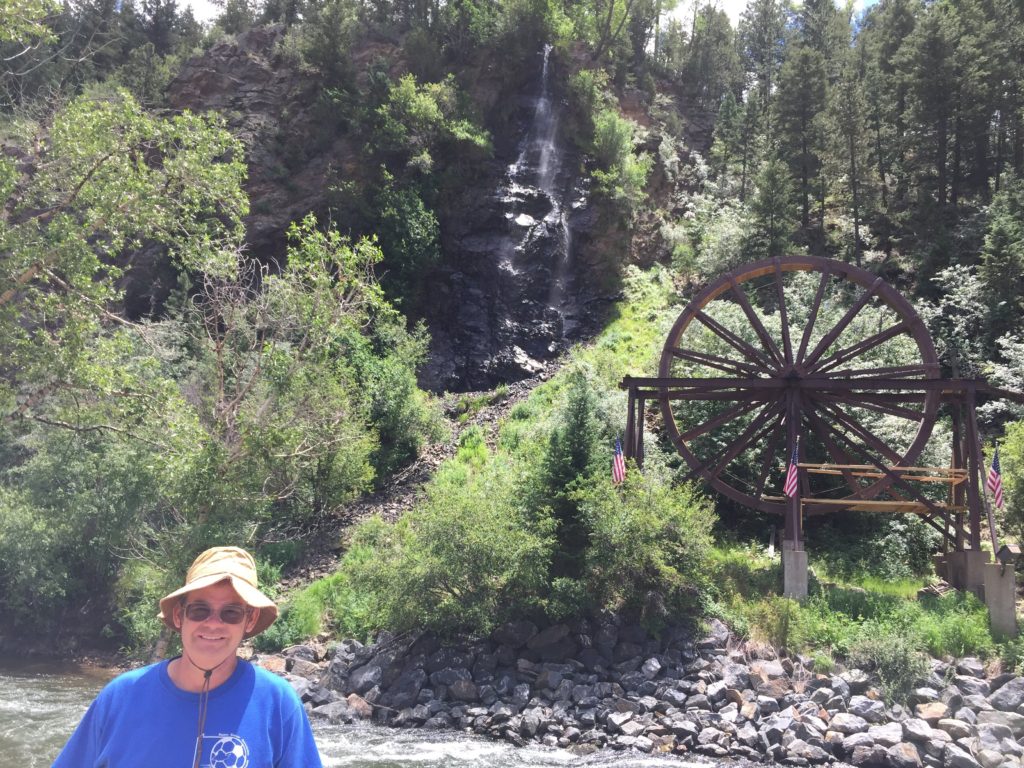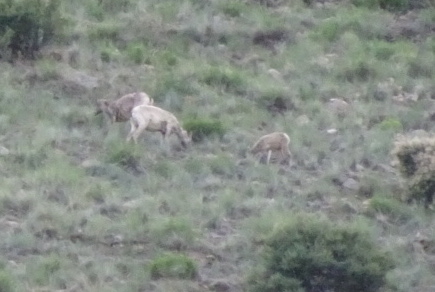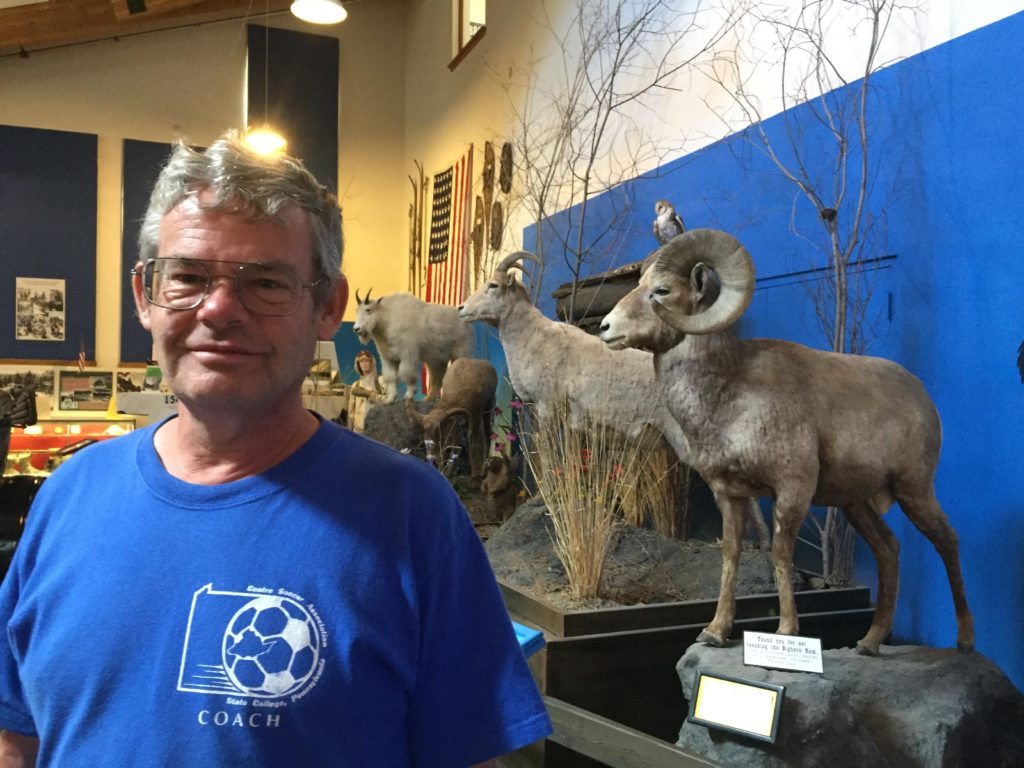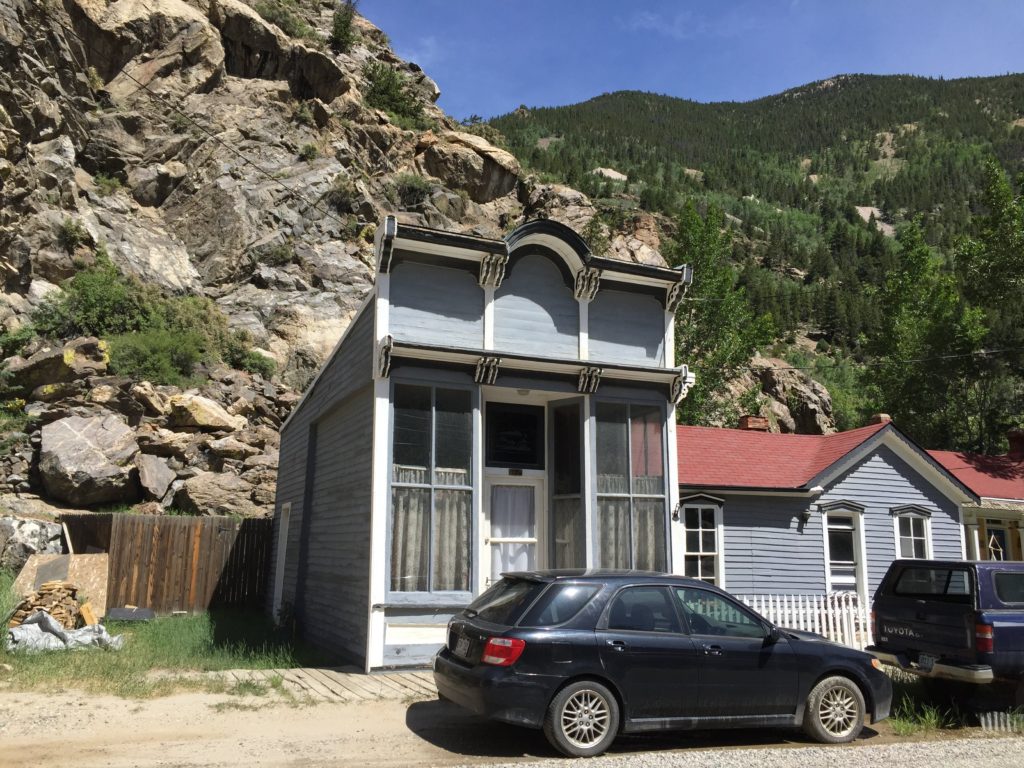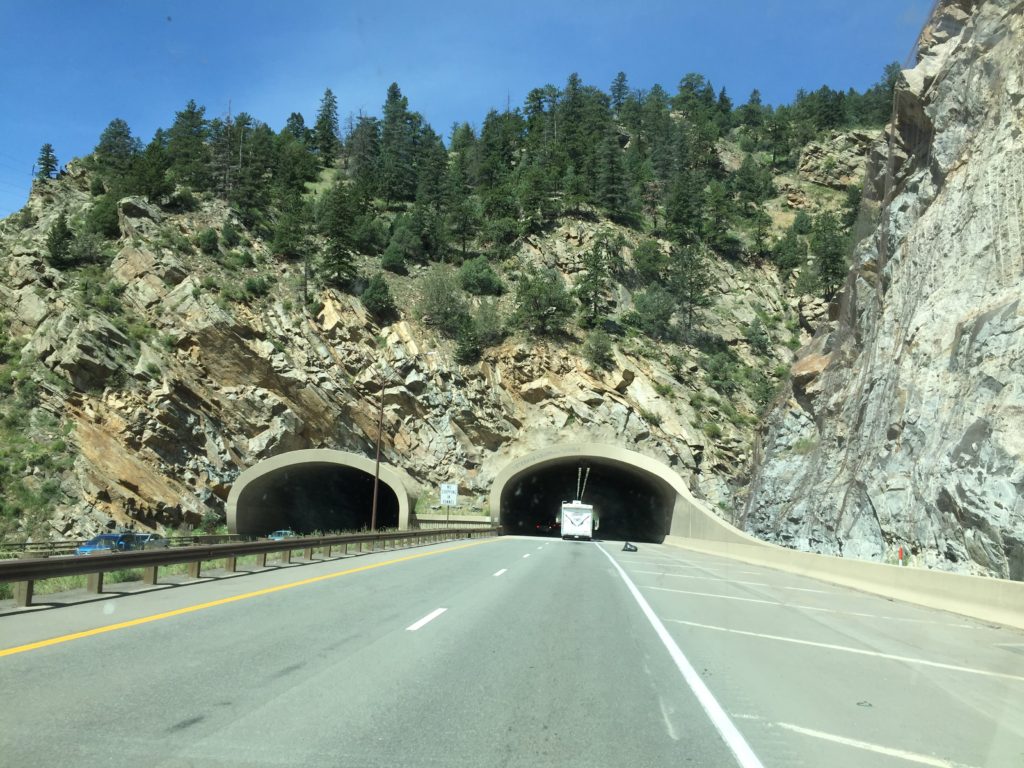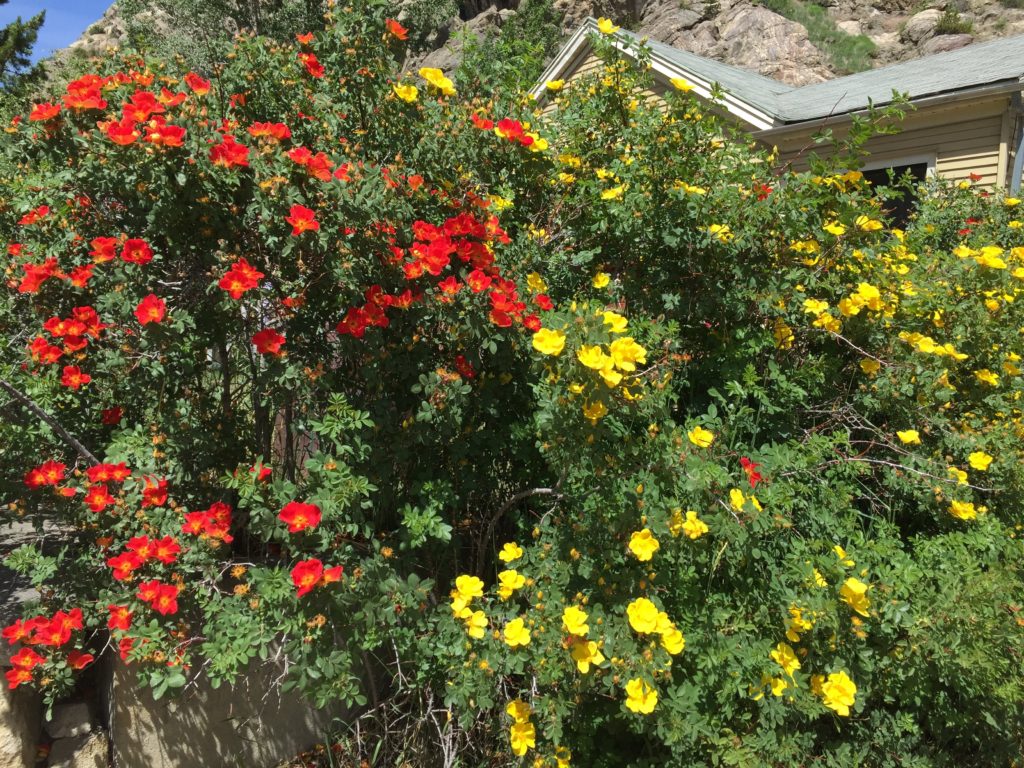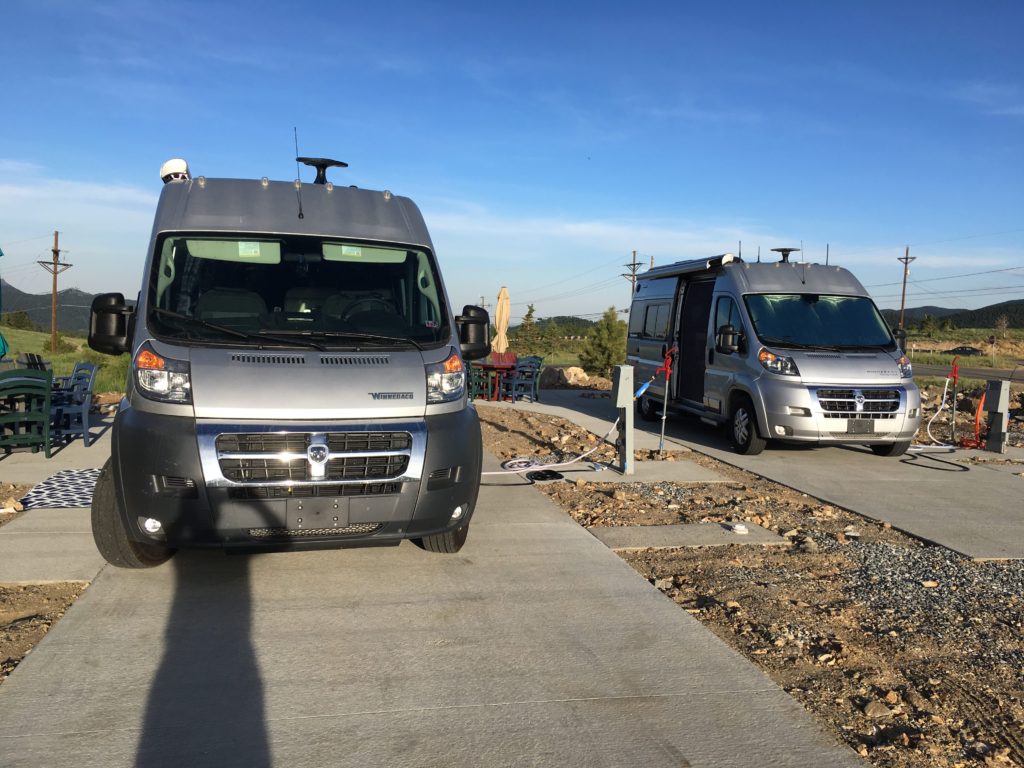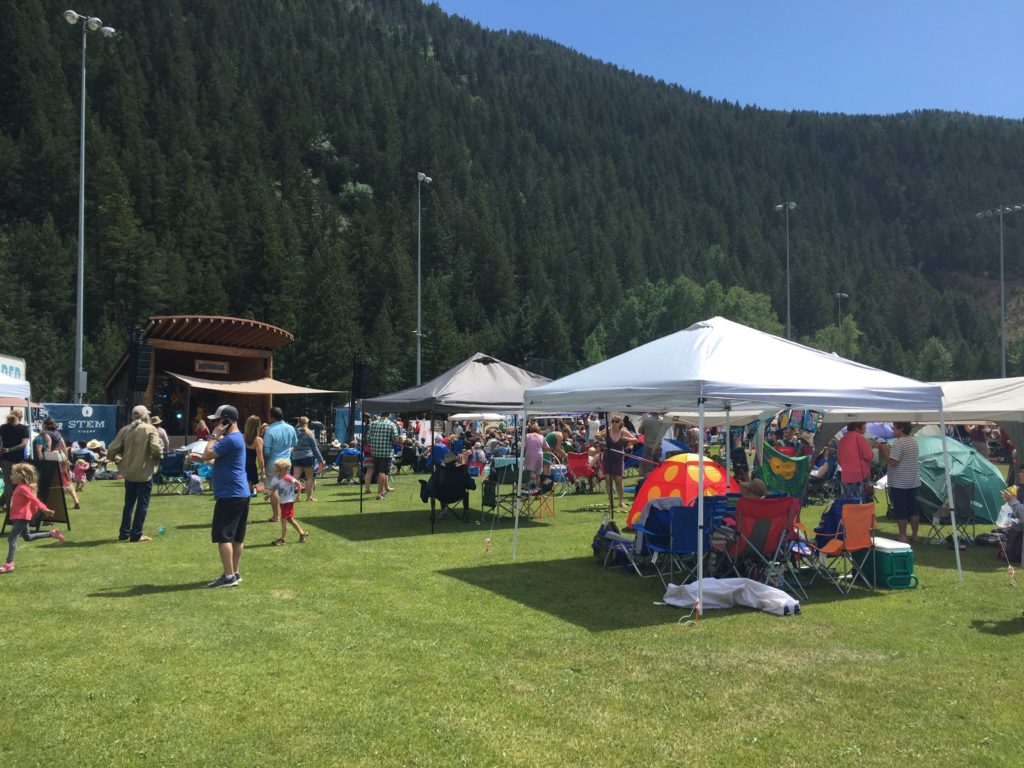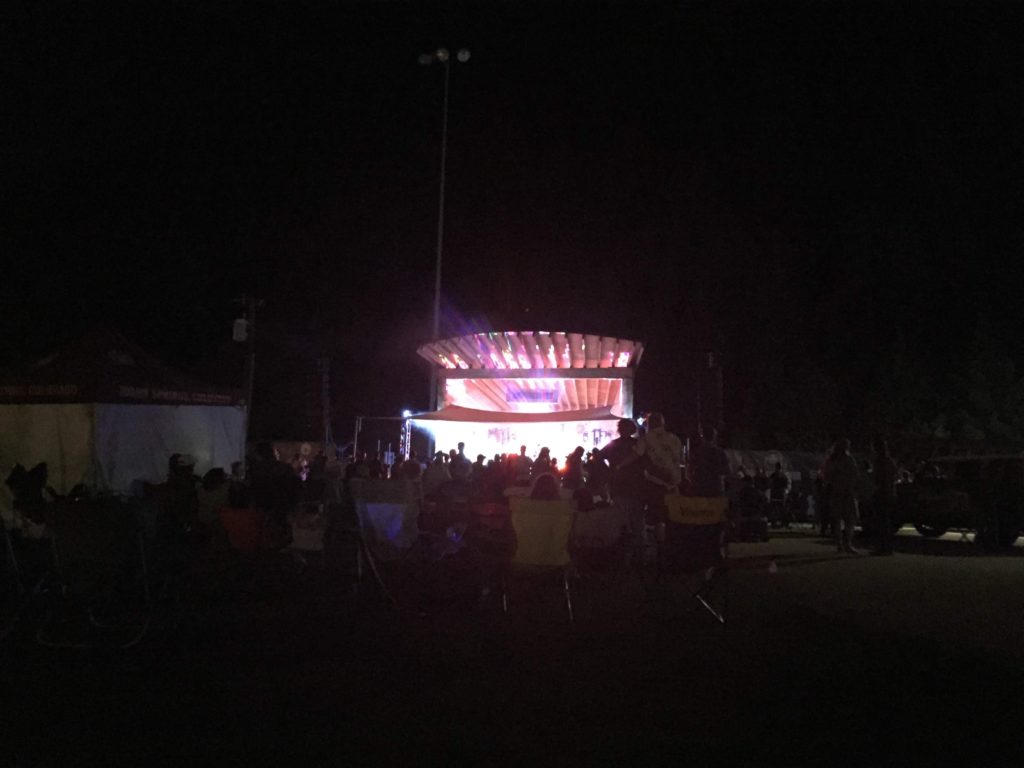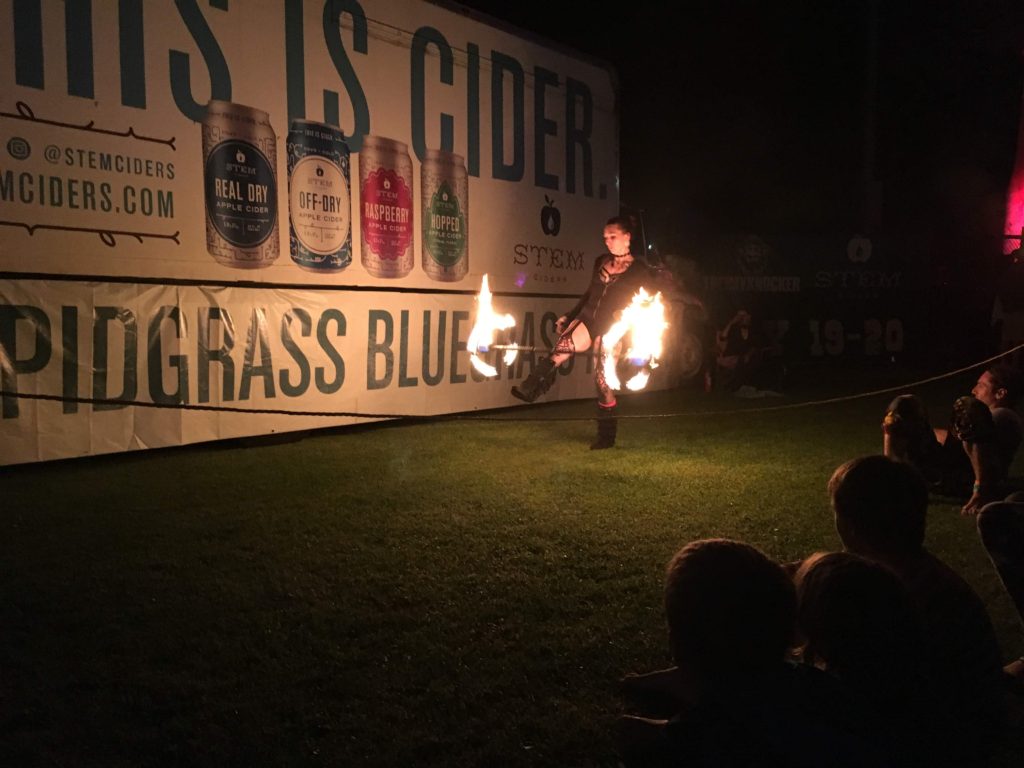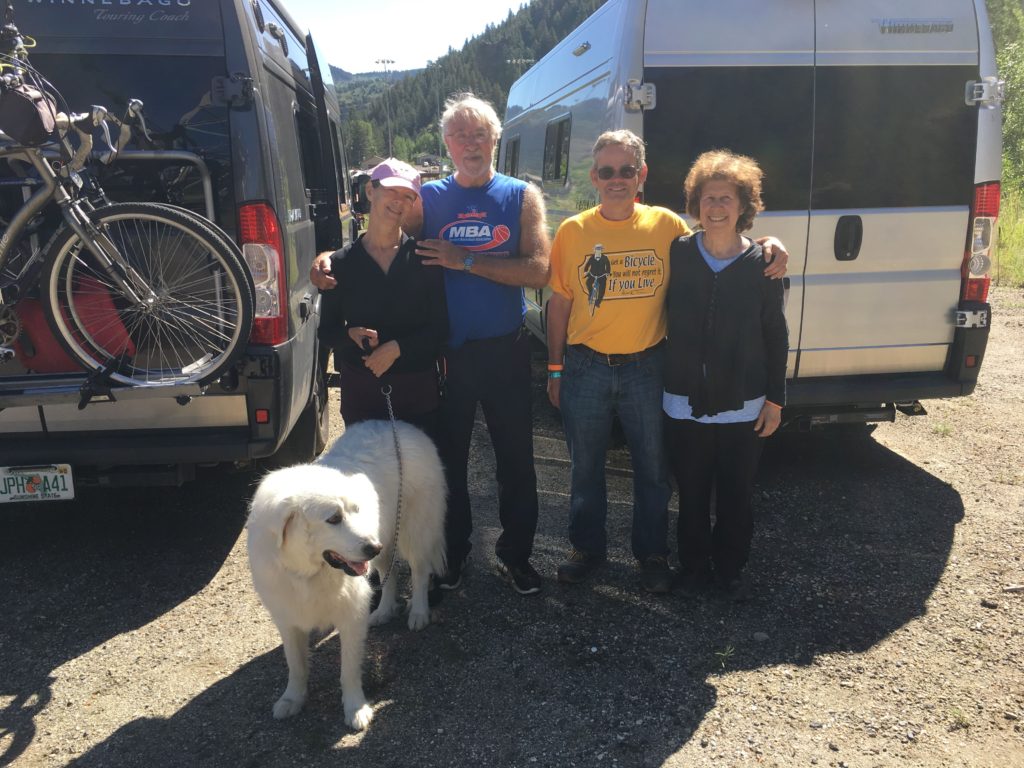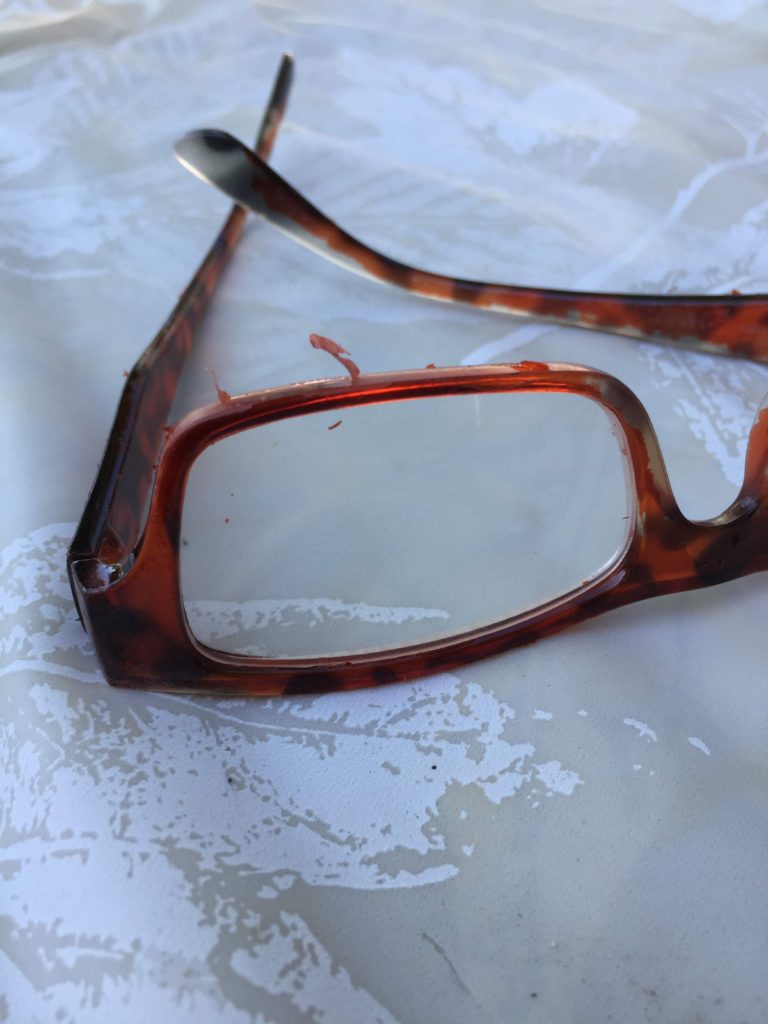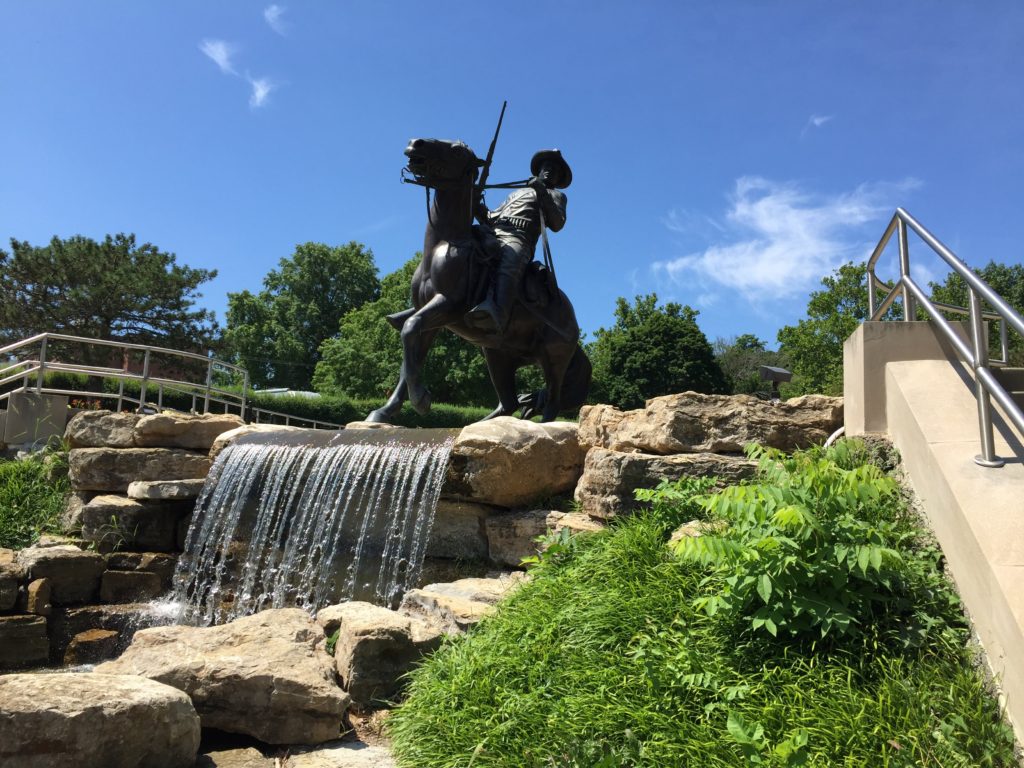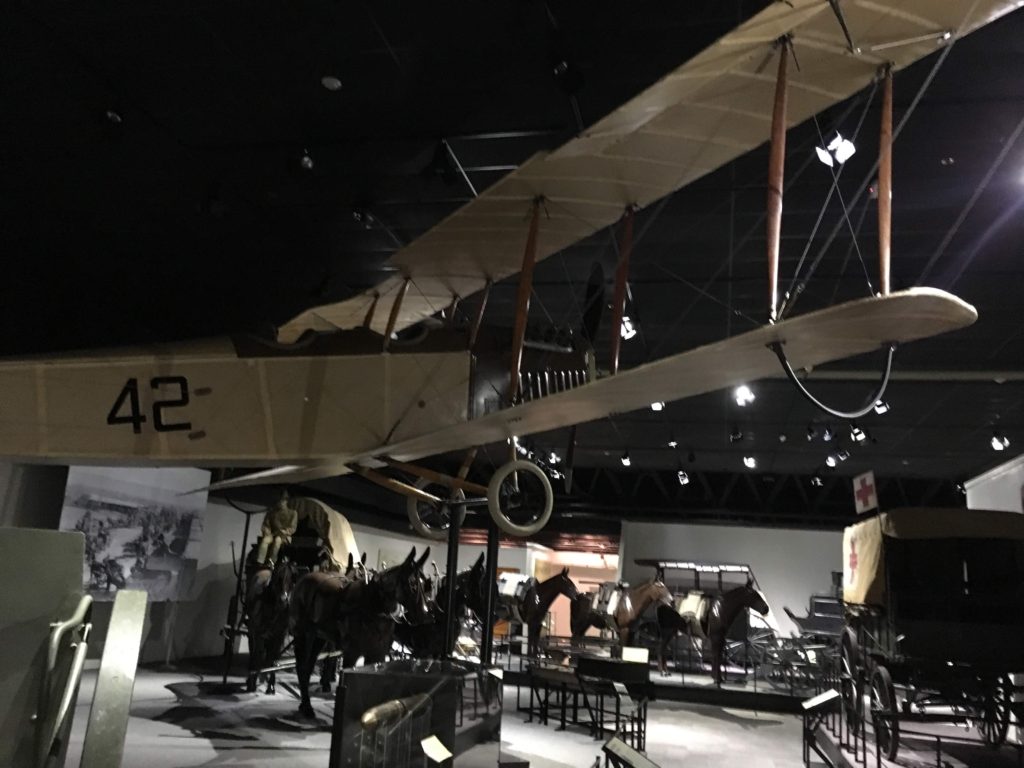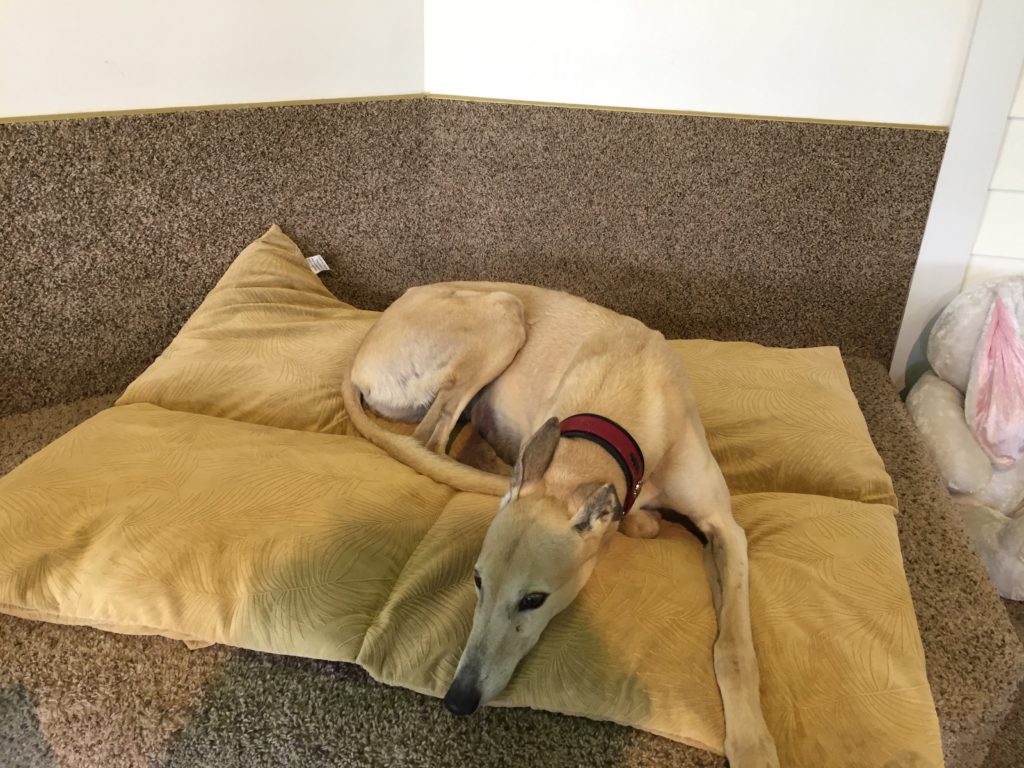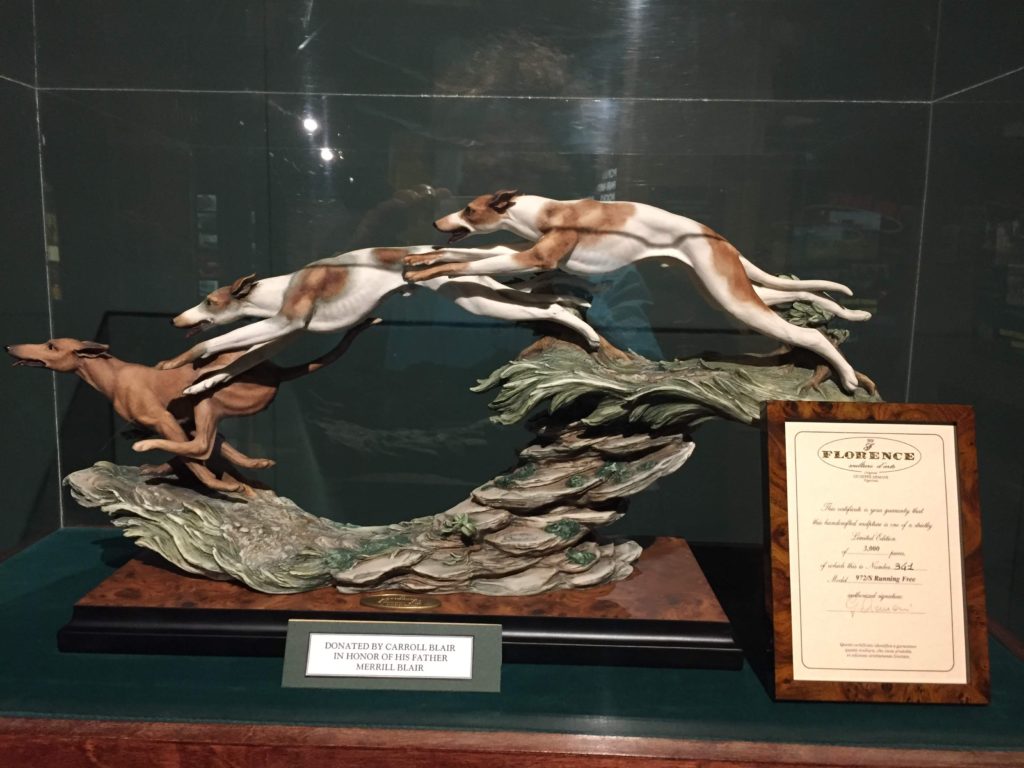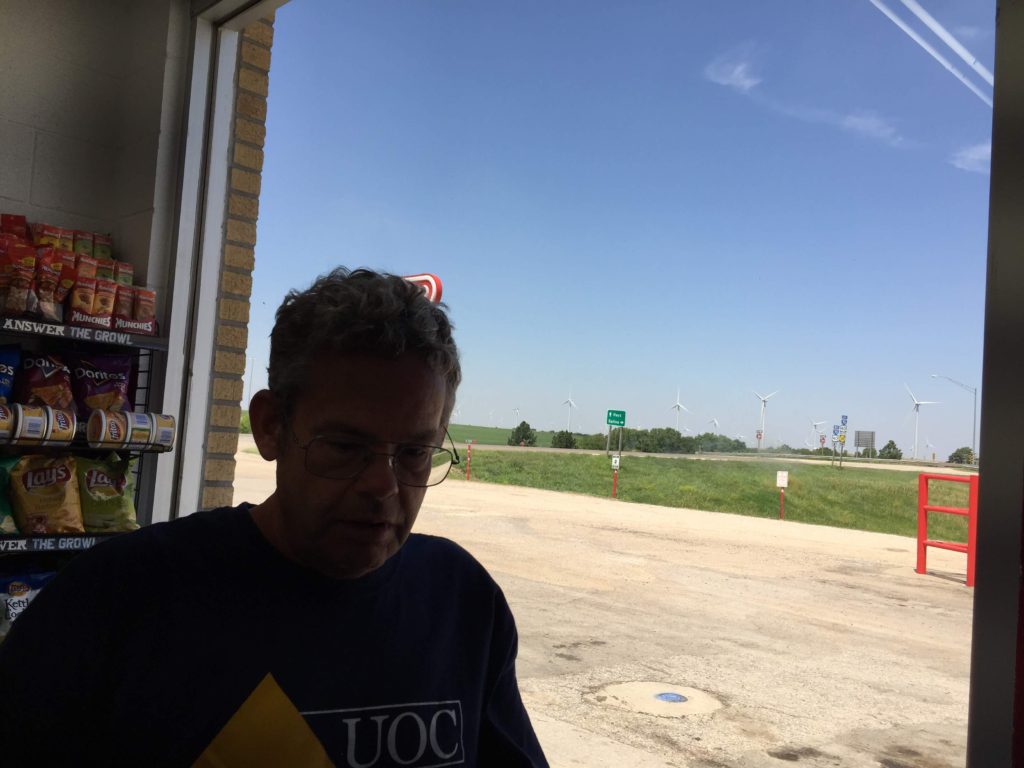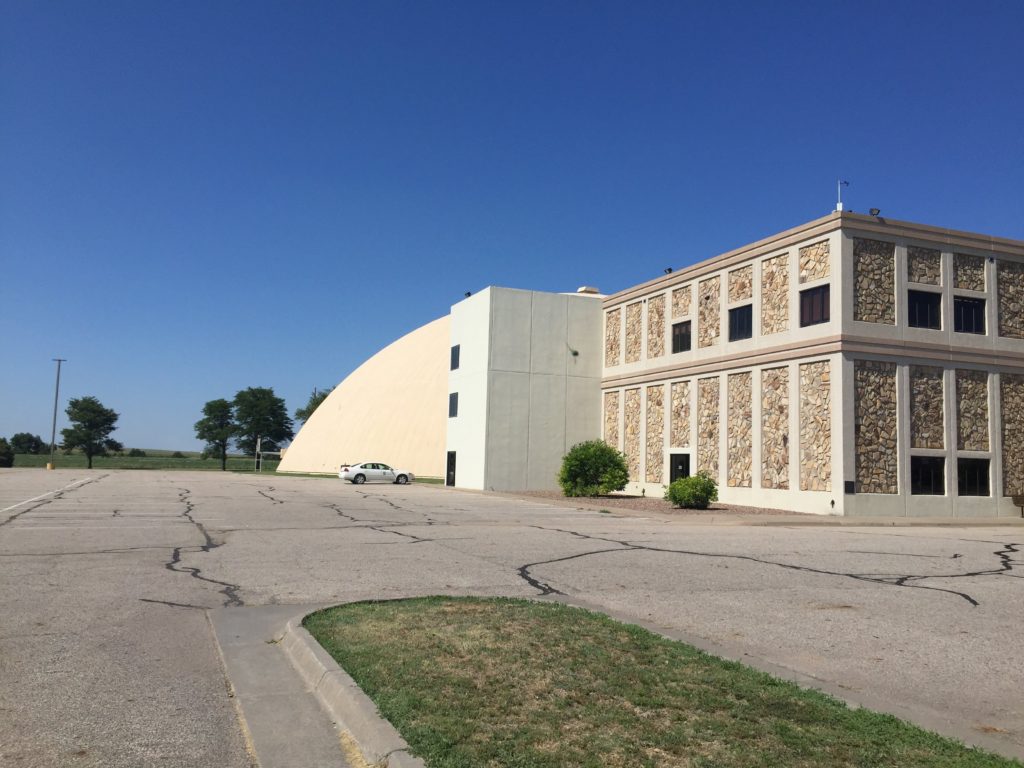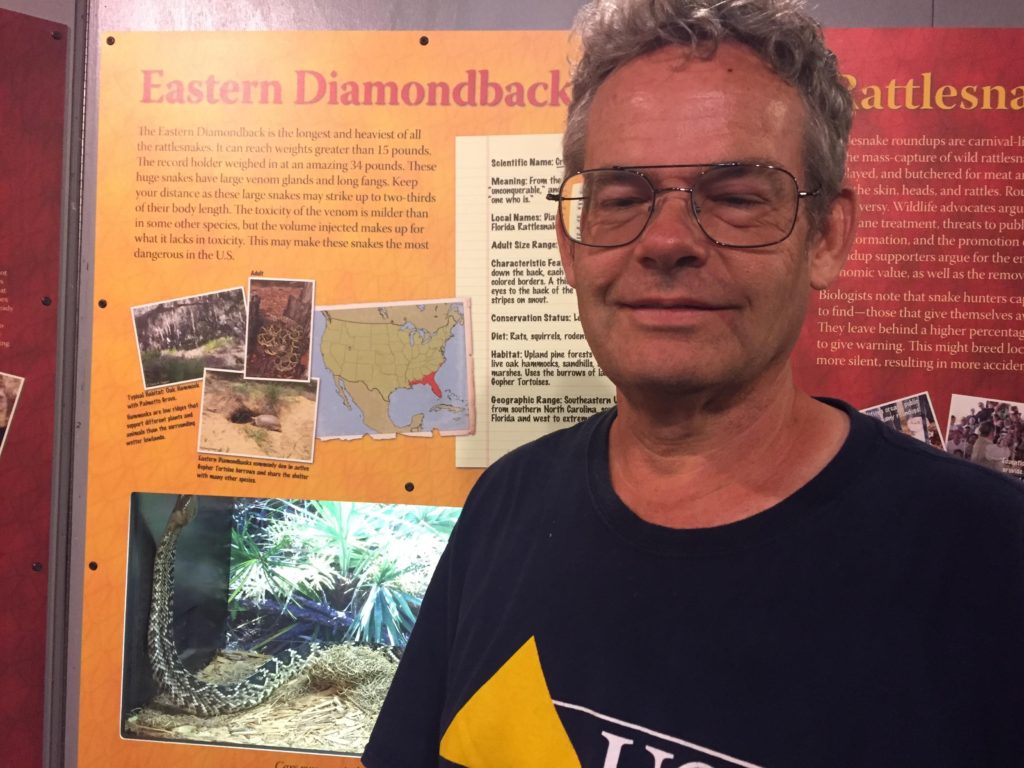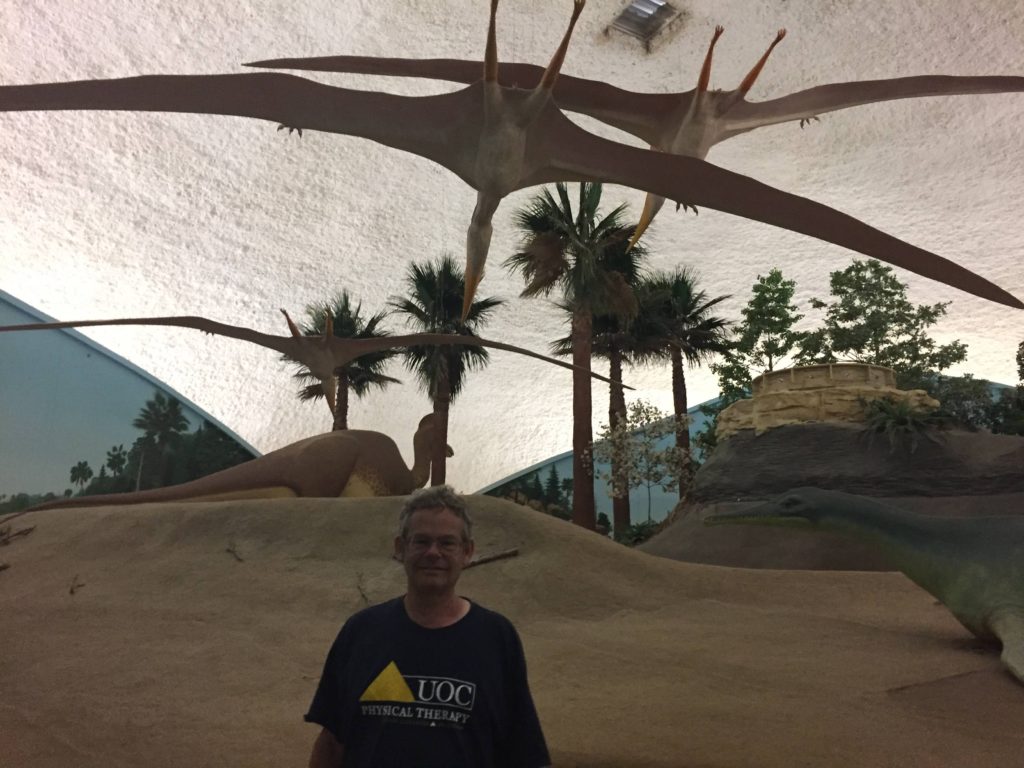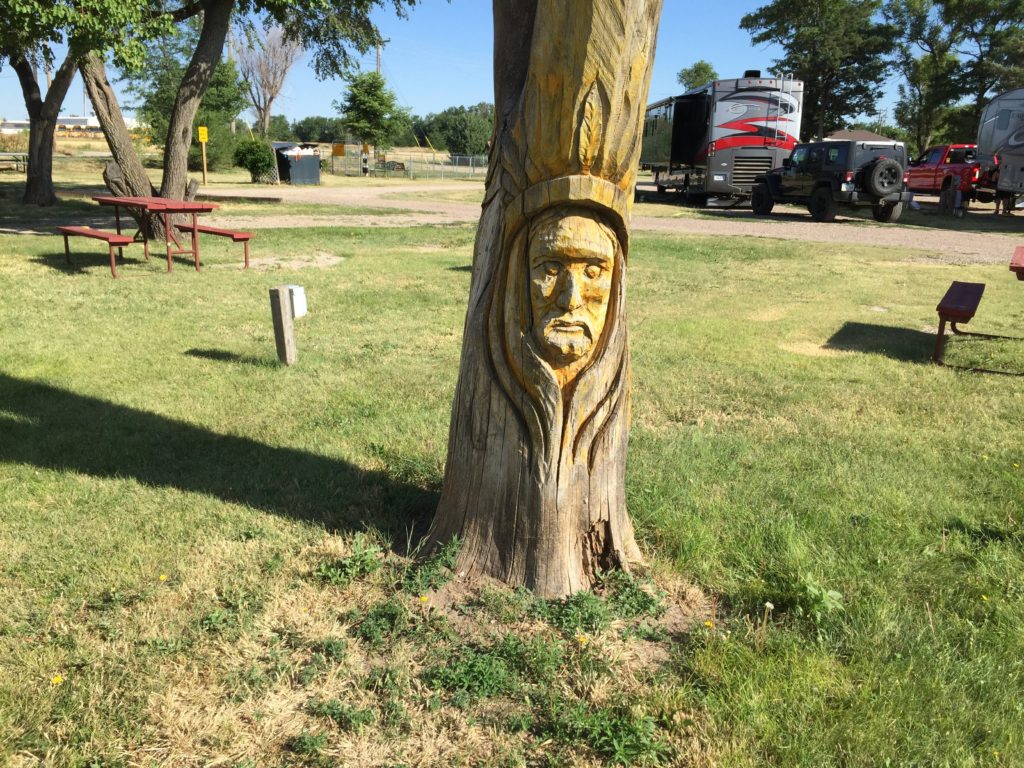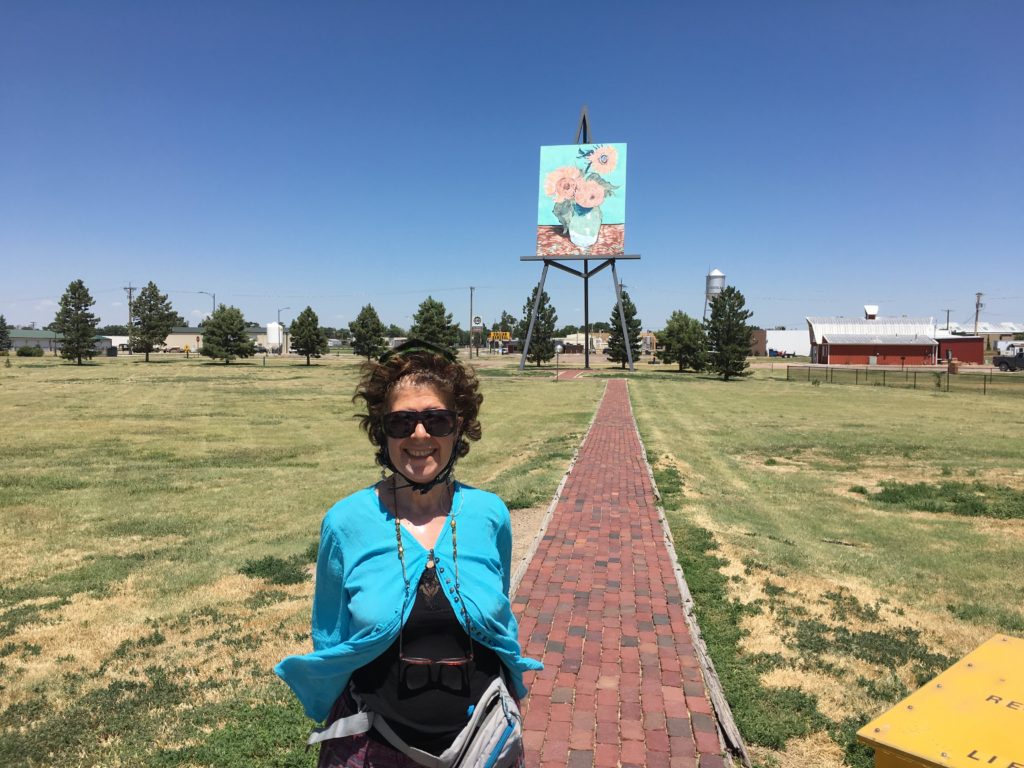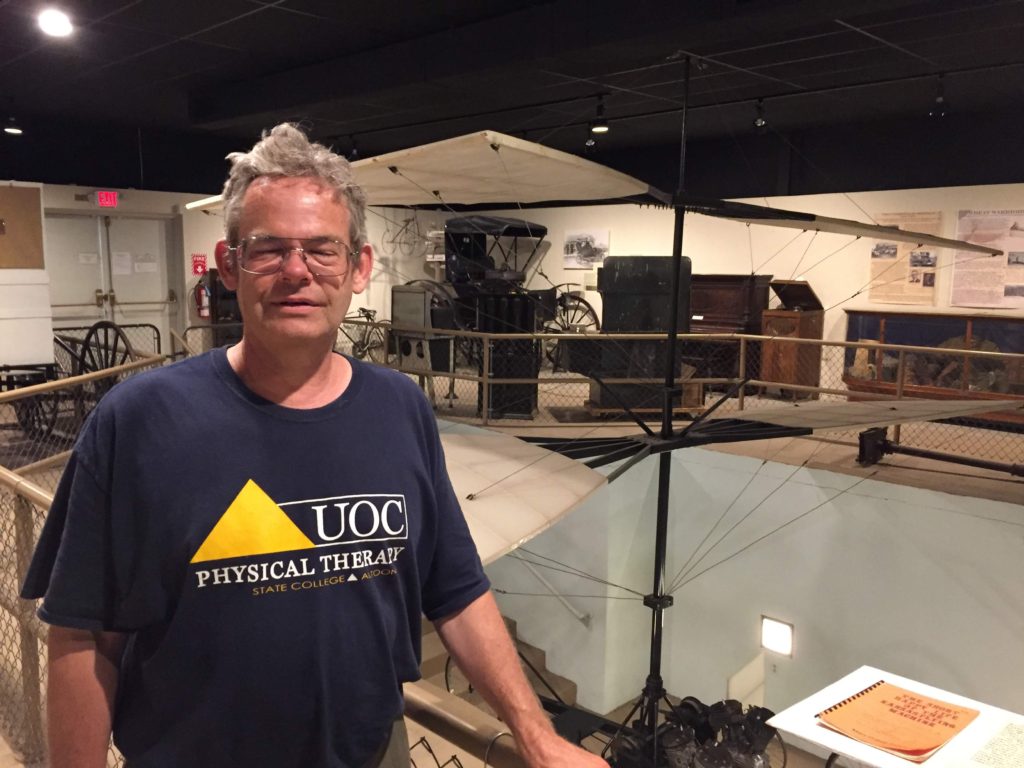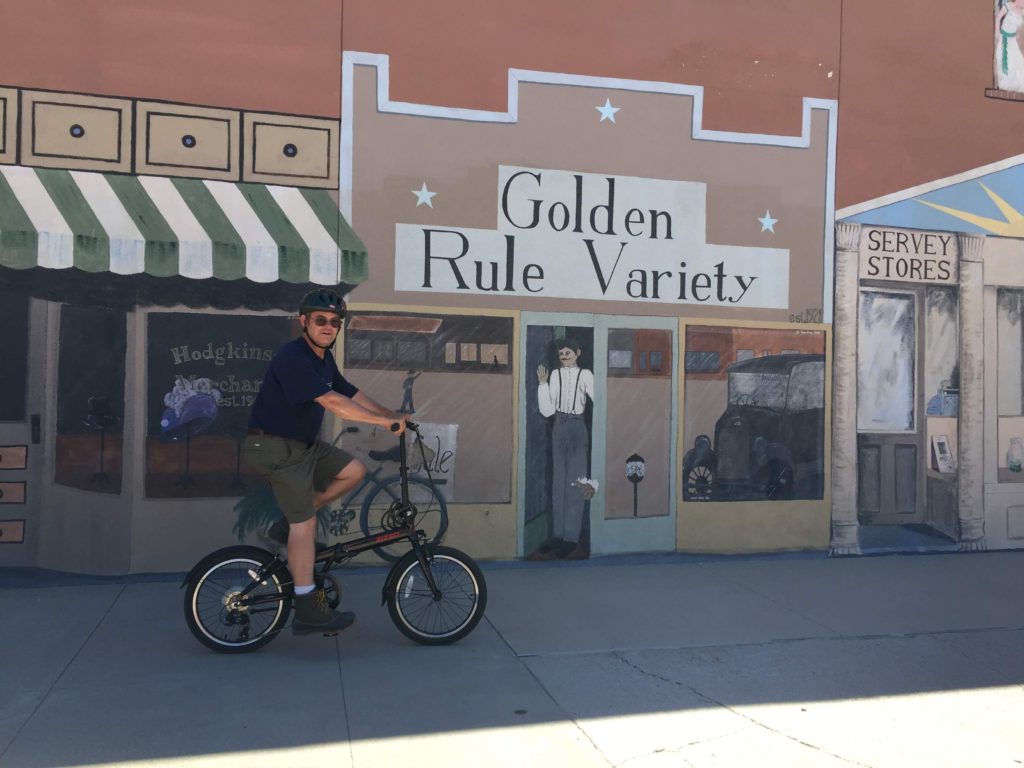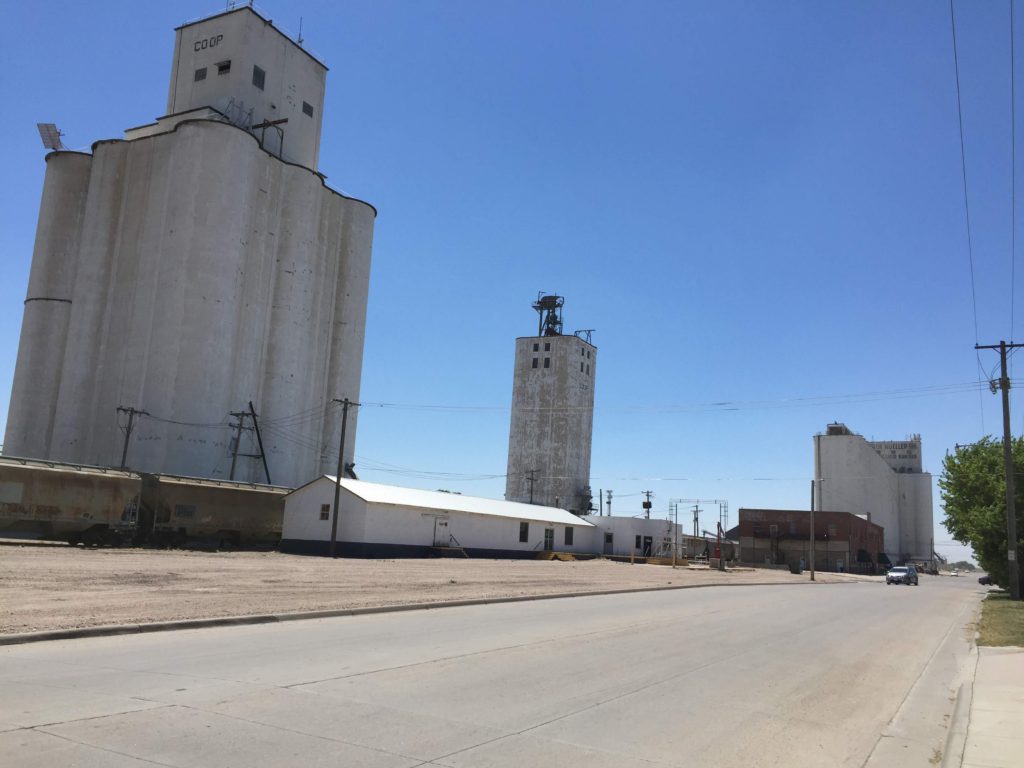Aug 20 – Glenwood Canyon, Steamboat Springs, Laramie
On August 20, after a short hike up Mushroom Mountain, we left Carbondale for Glenwood Springs, following the same route we did the previous day by bicycle. The view is beautiful, with hills alternating between red, white and grey.
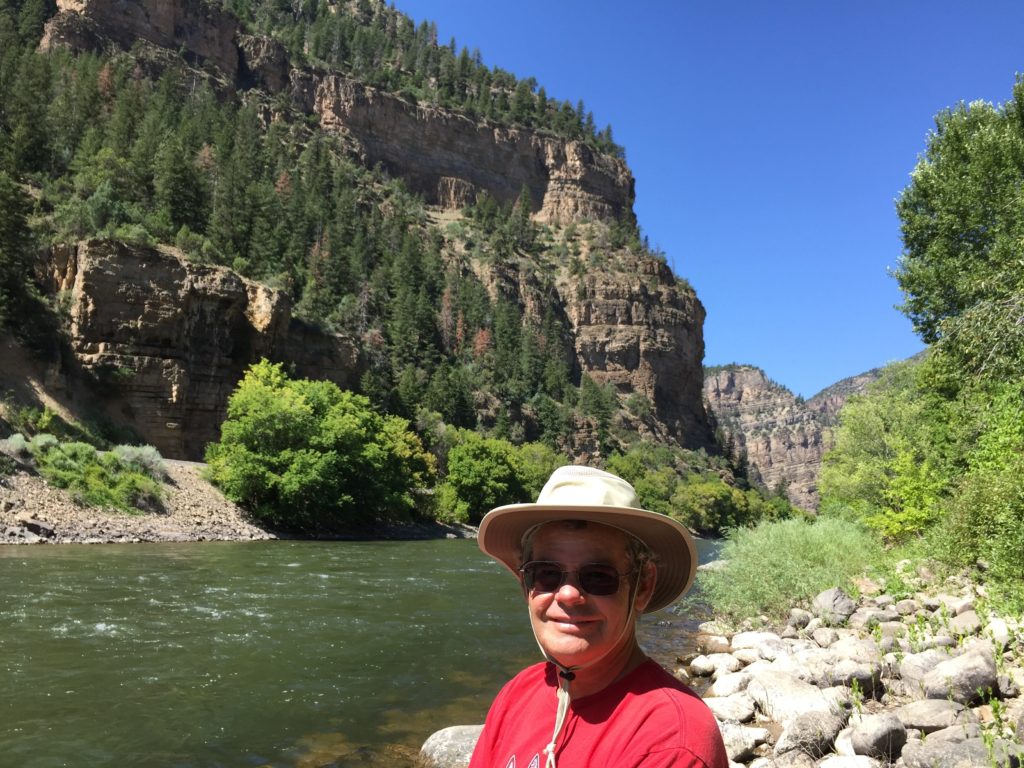
Glenwood Springs is named after its hot springs (and is one of many towns in the area with hot springs resorts). However, with temperature reaching into the 90s, we were not in the least tempted to try out the attraction.
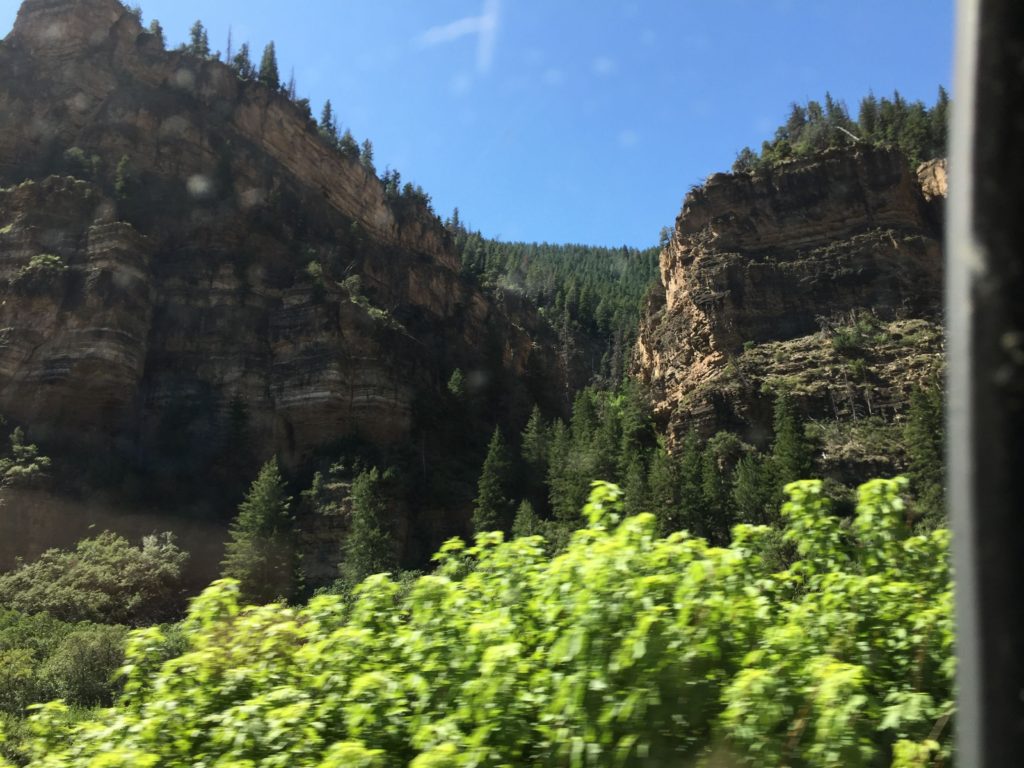
Instead, we turned away from the Roaring Forks River to follow the Colorado through Glenwood Canyon. This is a really incredible drive through the steep gorge cut by the still small river. The gorge is so narrow that in places the highway is on two levels.
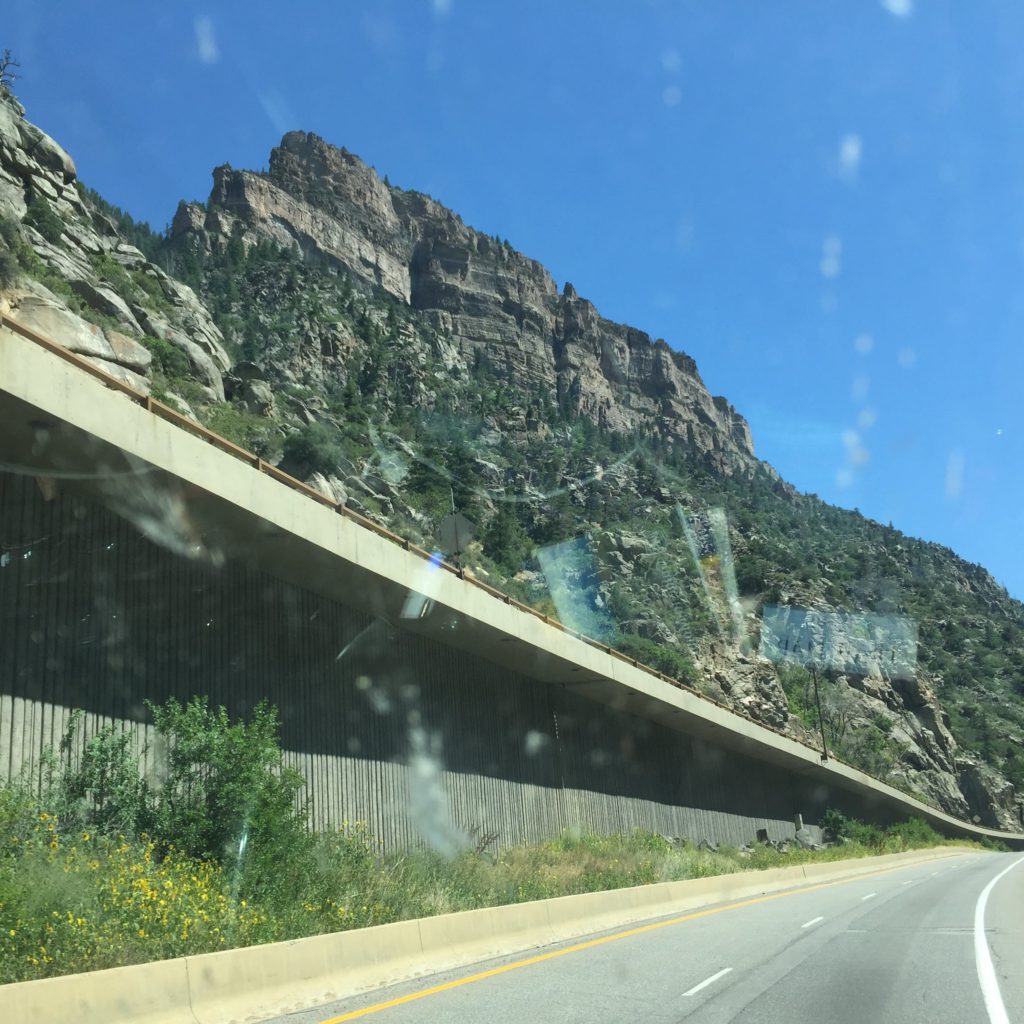
The route was designed for tourism, and so there are 4 substantial rest areas with picnic sites and interpretative signs. There is a 16 mile paved bicycle trail that runs along the river (and I think joins up with the trail along the Roaring Forks to Aspen).
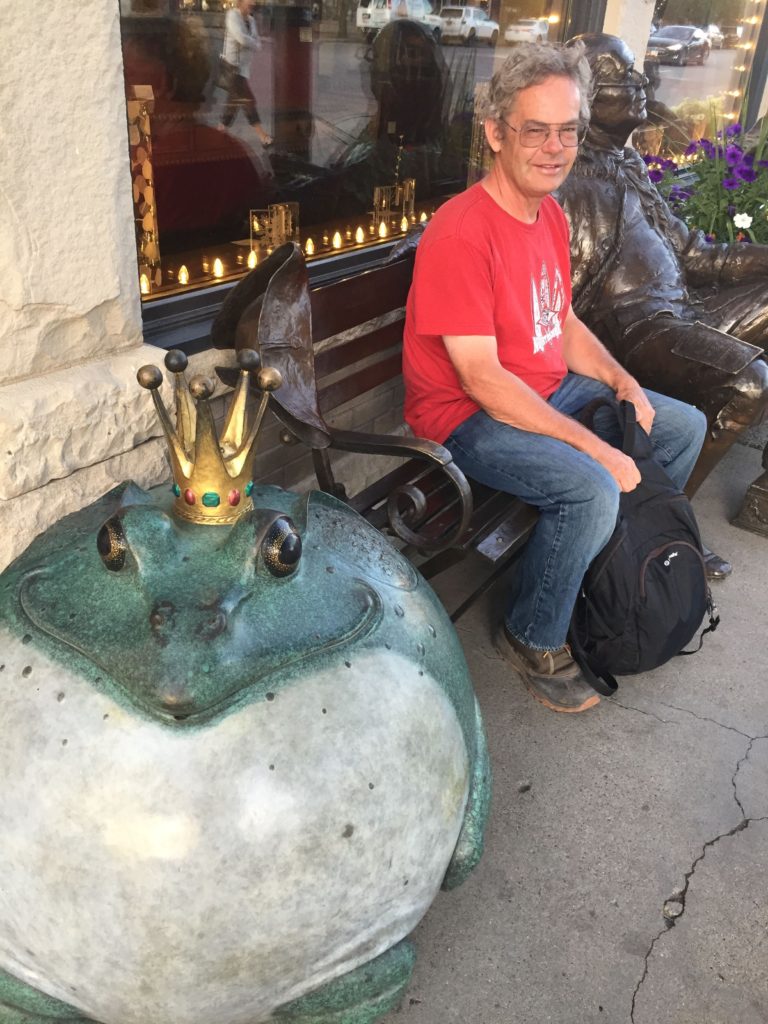
We decided to stop for the night at Steamboat Springs, another cute skiing town. The Yampa River runs through the town and past the KOA. There is a free bus that goes through town and to the KOA. A popular summer activity is to take the bus to town with your inner tube, and then tube back to the KOA. It was appealing, but we decided not to invest in inner tubes. Instead, we took the bus into town and treated ourselves to a fancy dinner.
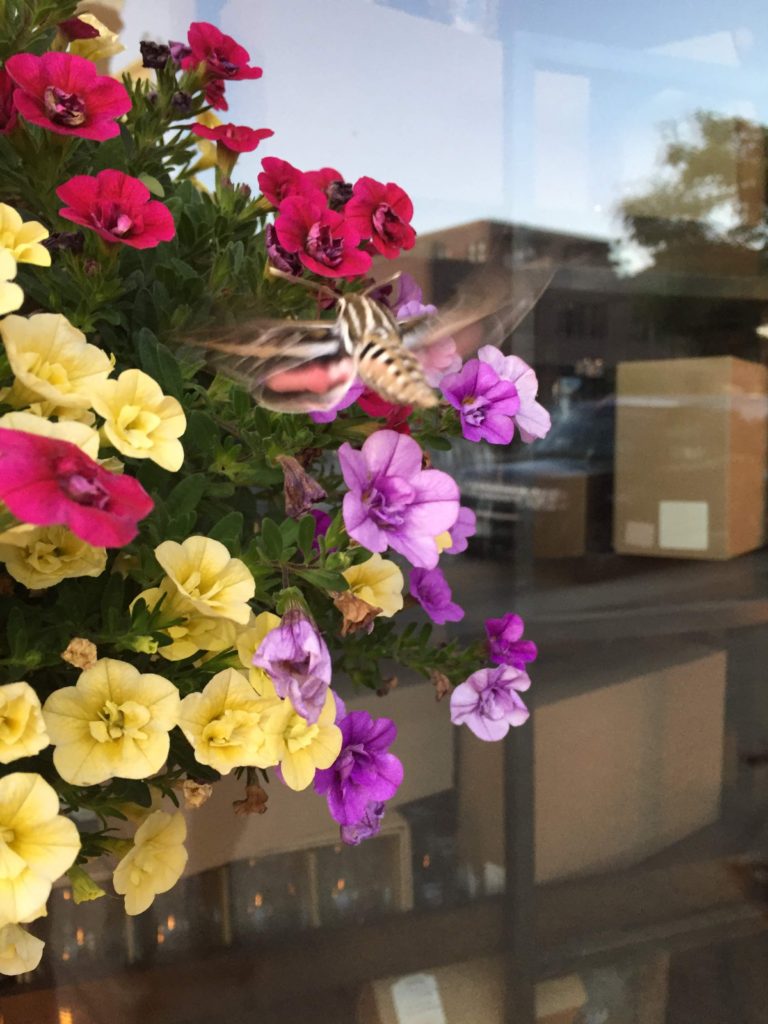
After seeing so many hummingbirds at Dillon Lake, we were not surprised to see hummingbirds hovering around the hanging baskets in downtown Steamboat Springs. However, when we got close, we realized that these were actually hummingbird moths – about the same size and shape as the birds, but slower to dart away and definitely moths (note the antennae).
Our next stop was Laramie WY, where we wanted to visit a couple of old friends – Ken, whom we had not seen since he graduated from my program (1992) and Tim, who we met more recently while on sabbatical in NC.
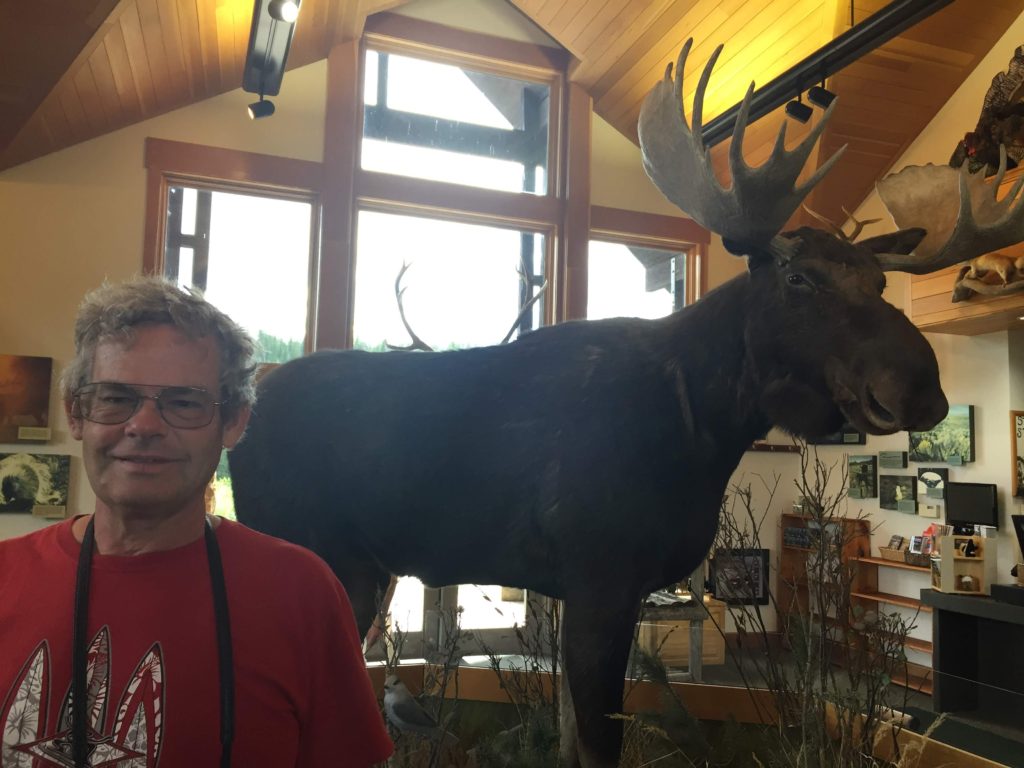
En route to Laramie, we stopped for lunch in Walden CO which bills itself as the Moose Viewing Capital of Colorado. Still on our quest to see a moose in the wild, we decided to detour to the Moose Visitors Center.
There we got a lot of information about moose (e.g. the reason you seldom find the shed antlers is that they are eaten by mice), saw a lot of birds, and hiked through moose habitat. We got tips from the ranger about where moose had recently been spotted, but as it was midday, the moose did not make an appearance.
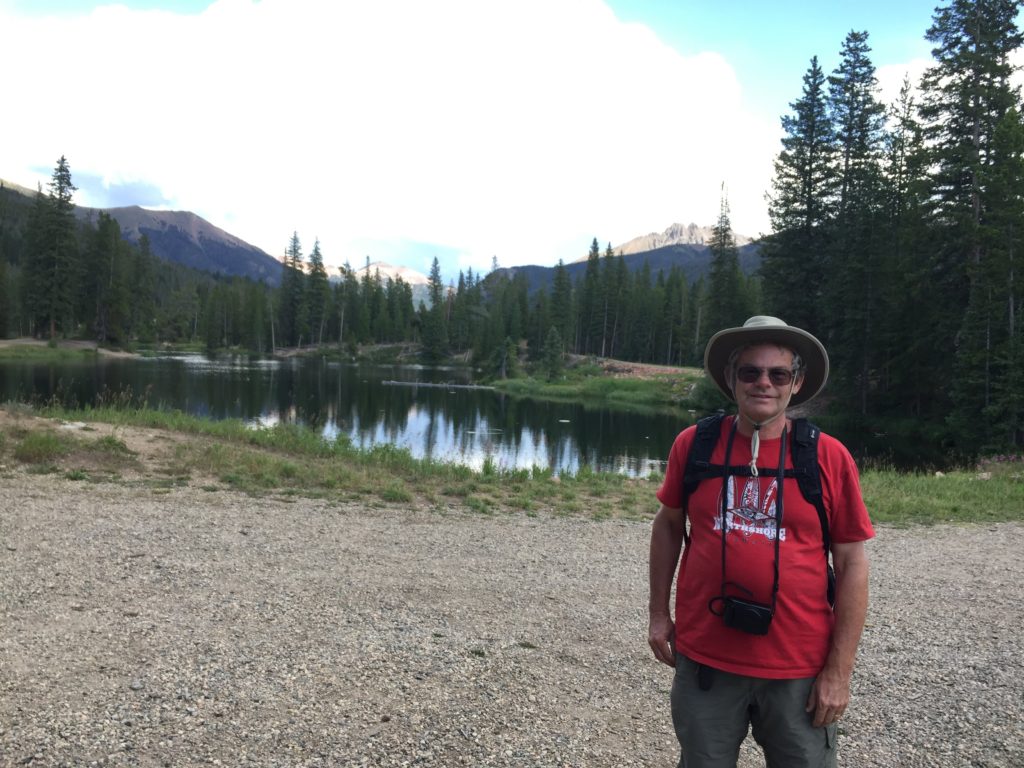
The hike started with a few stairs, and unfortunately Chuck twisted his ankle on the last one (which was more of a root). He continued to suffer the effects of that twist for almost 3 weeks, but fortunately he was still able to hike and bike (with care).
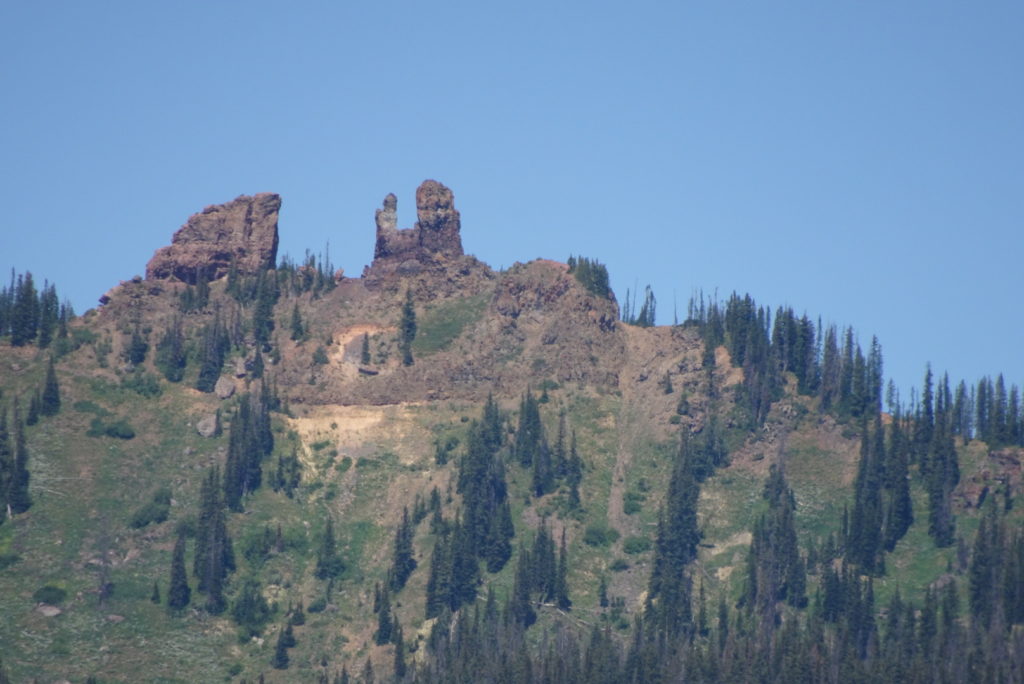
We then continued our mooseless travels over the scenic Rabbit Ears Pass. Each time we saw a pair of peaks we speculated that they were the Rabbit Ears. However, when the ears appeared they were obvious.
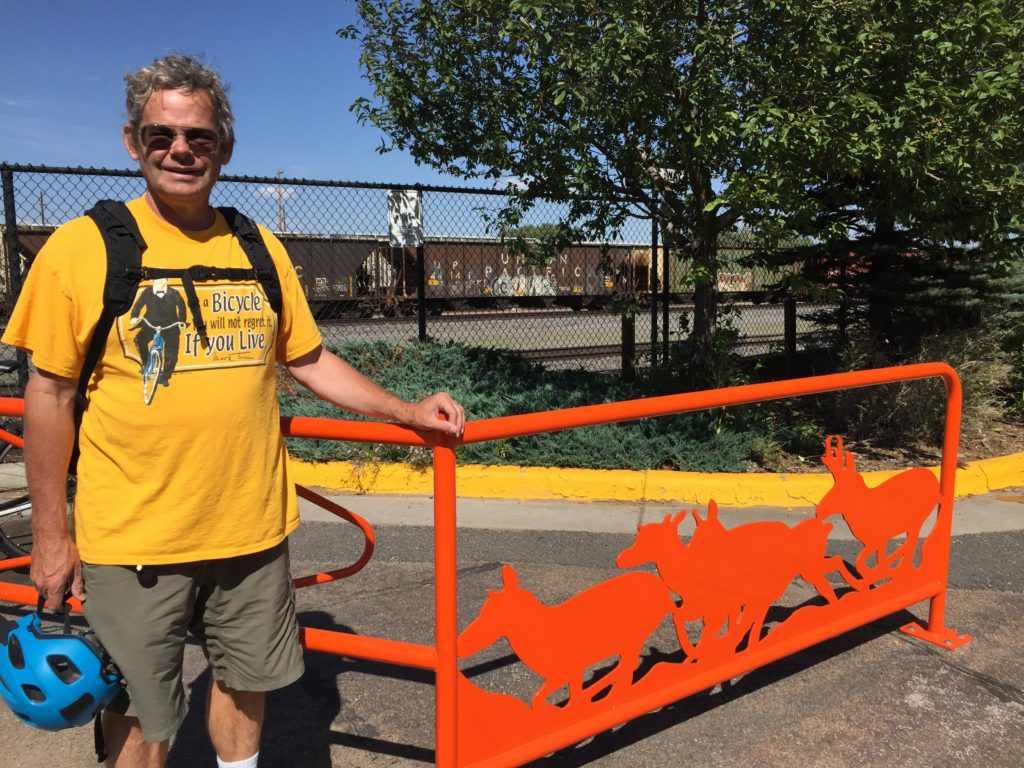
Ken now plays bass in a bluegrass band and we met up with him at a local bar where one of his friends was playing. It had that small-town, music venue ambience, with Ken seeming to know everyone. We enjoyed the music, the pizza and Ken’s company. He had band practice at 7:30 and the set ended at 8:00, so we meandered around downtown a bit and then went back to the RV.
Laramie was another new RV experience. Laramie is a place where if you can park you can sleep in your vehicle. We found that by putting the passenger side wheels on the curb of Ken’s lawn, the RV was almost perfectly flat. We slept on the street for the next 2 nights.
One of the things I starting thinking about in Wyoming is that Wyoming (population 1/2 million) has 2 federal senators — the same as California (population 40 million). In fact, as of April 2010, the 9 most populous states (18 senators) have over 50% of the population, while the 21 least populous (42 senators) have combined less than 1/6. No gerrymandering, voter suppression etc could do more to skew “one person one vote” more than the rules for the Senate!
It turned out that Ken was insanely busy during our visit, and so we did not get to spend as much time with him as we would have liked. However, we did get caught up on family life, heard about his music, visited the food co-op he had started to organize and saw the U Wyoming campus with him.
We spent most of Thursday wandering around Laramie. This is a town that prides itself on its cowboy past. We enjoyed going into one of the tourist shops that sells “cowboy” gear. The clerk was a fairly recent import from the east who was very eager to tell us about the attractions of the town and the surrounding mountains. It was a pleasure to meet someone who so clearly had found the right place for herself.
Among his many university roles, Ken serves as a liaison between UWY and the Native American Community (and is part First Nations). On Friday, he left early in the morning to help set up the Sundance at the Wind River Lakota Indian Reservation.
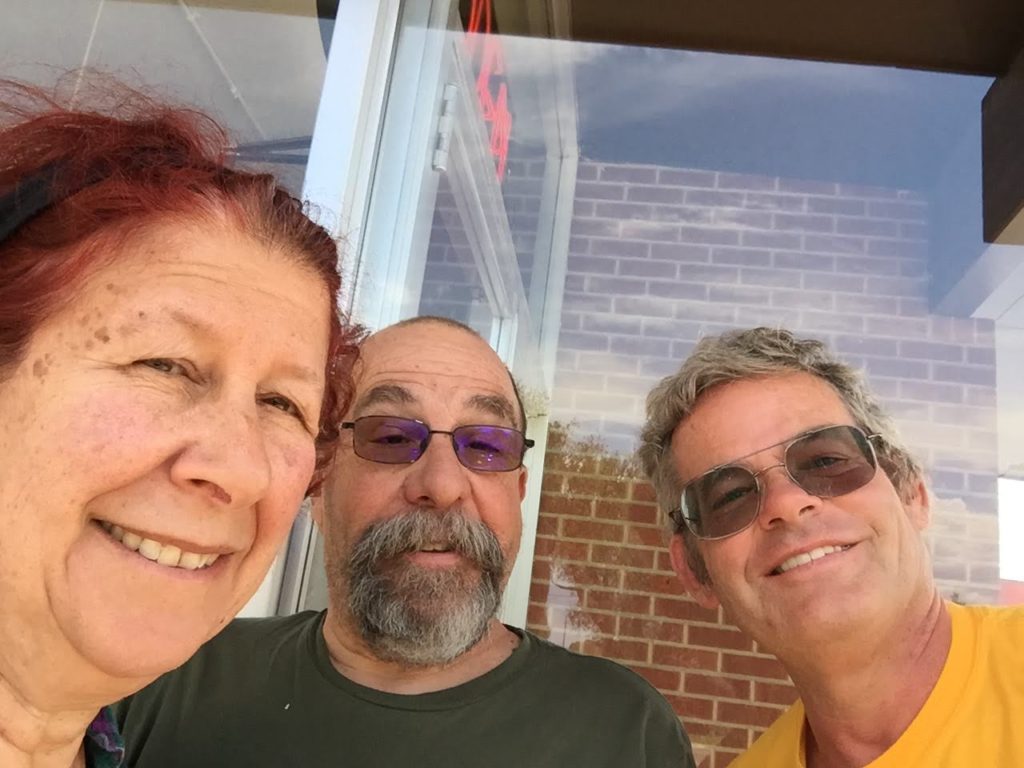
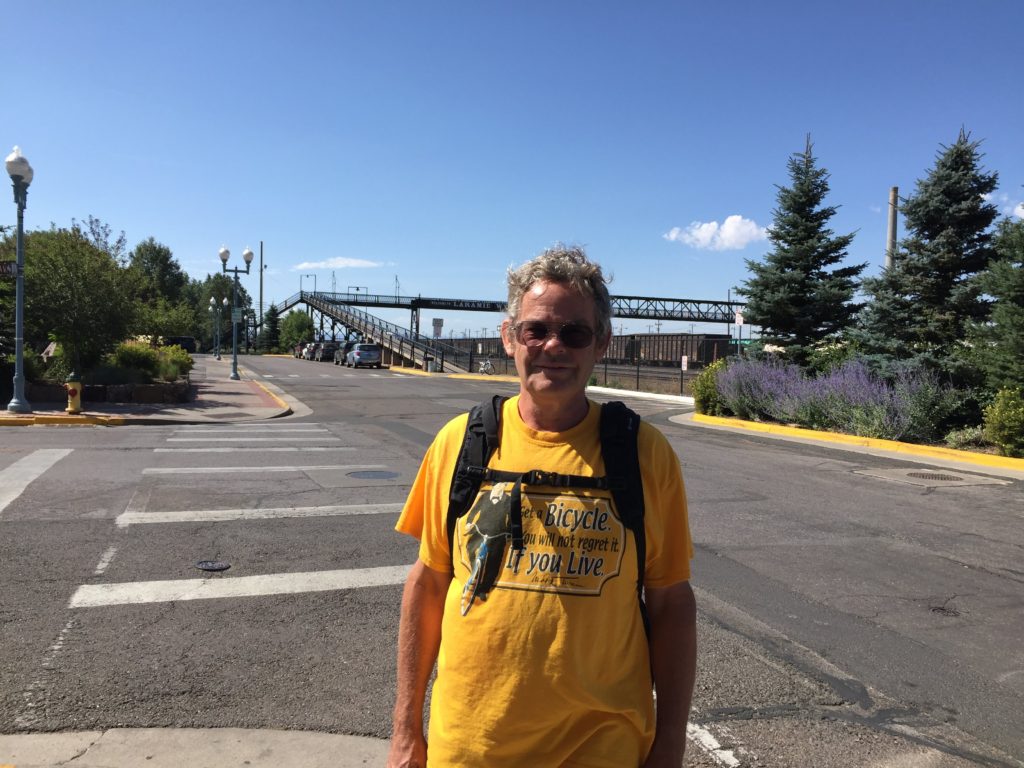
After our own much later leisurely start, we called Tim and arranged to go cycling and to the historic Territorial Prison. Laramie is split in 2 by a large railyard. Downtown and the university are on one side; the river, recreation trail and Prison are on the other. We biked to Tim’s house (quite close to Ken’s) and then up the overpass of the railyard. This took us to the Prison, which has an interesting history.
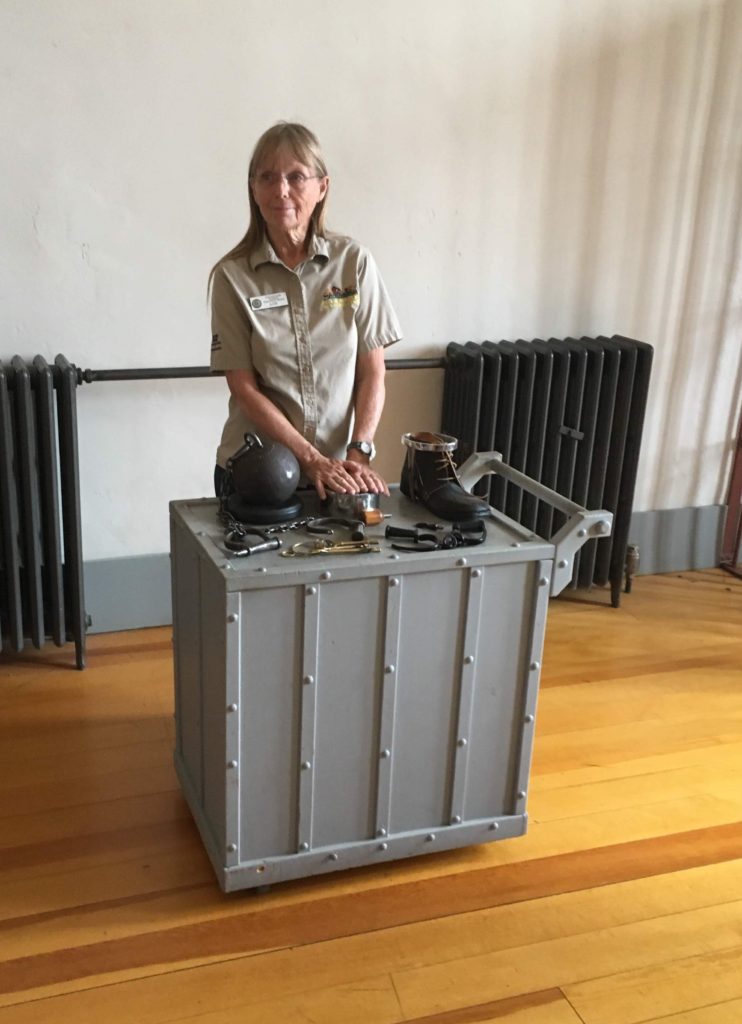
The Territorial Prison is one of the oldest extant buildings in Wyoming. It was built as a federal prison in the 1870s when Wyoming was a territory and housed prisoners convicted of federal crimes, including women. It was transferred to UWY in 1901 for use as their Agricultural Research Station. UWY stopped using the buildings in 1989. Tim was already living in Laramie at that time and worked as a police officer. He has some stories about wandering around the abandoned site. Now it is a museum, with interesting facts about the prison, prison life (no talking allowed) and the prisoners who were confined there.
One interesting fact about the Prison is that the goal was rehabilitation, and some prisoners were able to start fresh and successful lives after serving their terms. Sadly, however, some who were convicted of relatively minor crimes had their sentences increased dramatically due to infractions (such as escape attempts). The museum was much more interesting than you might expect. The focus of the museum is actually biographical material about the prisoners — there is even an book available with the compiled biographies.
The prison focused on job training along with punishment. Many prisoners were illiterate upon arrival, but almost all could read by the time they were released. If a prisoner arrived with skills, he or she was encouraged to pursue his/her trade while incarcerated. A master furniture maker who fell into debt and tried to forge a check was one such prisoner. Not only did he complete several beautiful pieces of furniture for a local mansion, he also trained a number of other prisoners in furniture making. The prison also produced brooms for the US market, training prisoners in broom-making. This was considered a good trade, because it required little skill or literacy. Brooms and whisks are now made by volunteers as part of the demonstration and can be purchased in the gift shop.
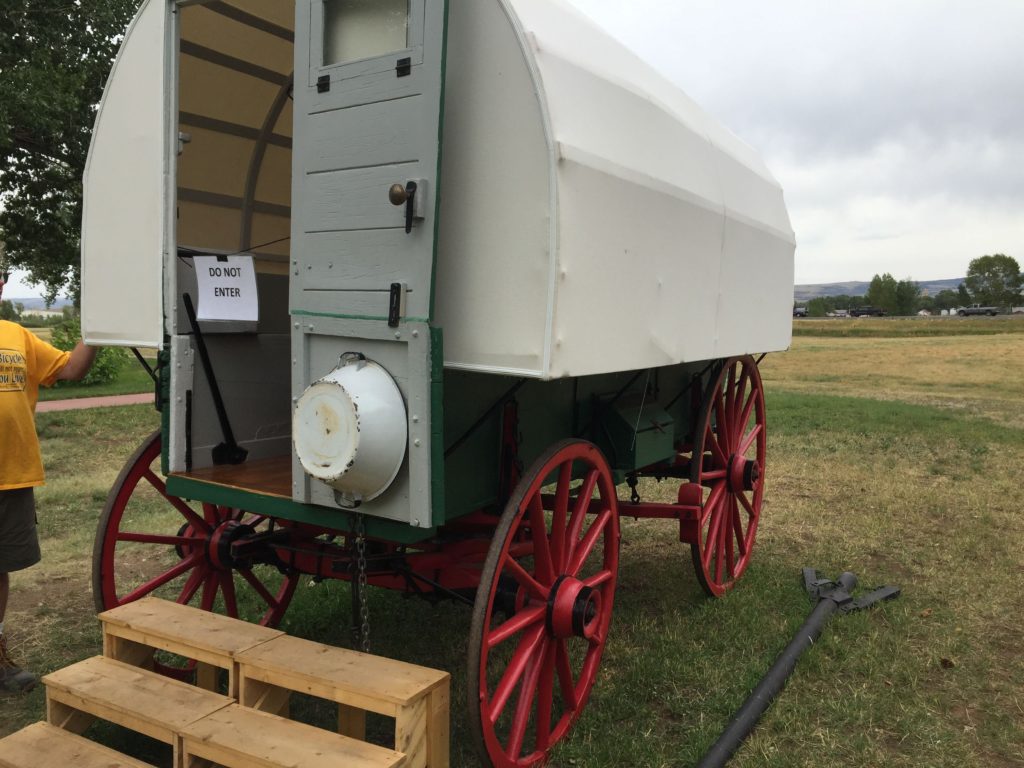
Another interesting exhibit was the sheep wagon. Whole families lived in these wagons following the sheep herds, and Tim says there were still wagons in use when he moved to Laramie. In any case, the wagons, which presumably were pulled by horses or mules, were about 25 feet long and included a kitchen, sleeping quarters and storage. In short, they strongly resembled a modern RV!
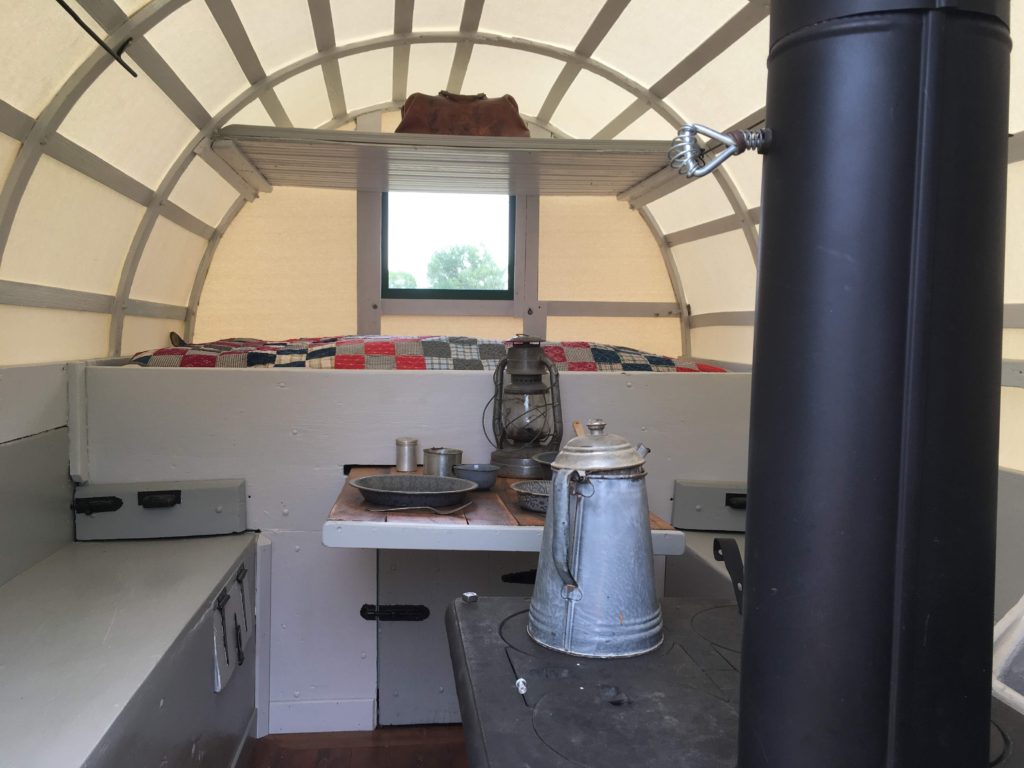
Tim took us to a Mexican restaurant on the far side of the railyard for lunch. There are not many businesses on that side of the tracks, but this place seemed quite popular.
After leaving Tim, we packed up the van and headed out towards Yellowstone.
